

9 Unmissable Things To Do In Miami

The 12 Best UK Beaches To Visit In 2023

The Best Areas To Stay When Visiting Warsaw, Poland

The Ultimate 2 Week Queensland Roadtrip: 2023 Guide
- Yucatan Peninsula
- Winter in Europe
- Whitsundays
- Where you should stay
- where to stay in porto
- Where to stay in Bali
- where to stay cyprus
The Best Time To Visit Bolivia: Month By Month Guide
Editorial Note: Earth Curious contains affiliate links. If you make a purchase through these links, we will earn a commission at no extra cost to you. Thanks!
The best time to visit Bolivia depends on the region and the season. However, the general consensus is that the best time to visit Bolivia is during its dry season between May and October.
Month by Month Guide
January is the wettest month of the year with rain across most parts of the country. The temperature of La Paz and Lake Titicaca is around 60°F.
February is still wet and humid, but there is much less rainfall. Temperatures are similar to Januar and it is Bolivia’s festival season.
March is the last month of the rainy season. It is still quite humid and the temperatures remain in the 60s.
April is considered a shoulder month because the rains start to subside leaving the countryside lush and green. This is the best month to visit the salt flats!
May marks the start of winter and dry season in Bolivia so the hiking trails open back up. Santa Cruz, Bolivia has temperatures in the 80s.
June is dry and sunny with blue skies. It is cold and one of the busiest months of the year.
July is dry and cold with clear skies.
August is cold and dry, and it is Bolivia’s most crowded month. Bolivia also celebrates its Independence day in August.
September brings back the rainfall and isn’t nearly as busy. This is the perfect month to visit the Bolivian Amason.
October marks the start of the rainy season.
November sees wet evenings and foggy mornings. It is one of the rainiest months of the year, and also one of the warmest months.
December has the highest levels of rainfall, and most of the country is hot and humid.
May to August is the best time to visit due to the dry weather. If you pack accordingly you will be fine. I’m talking winter jackets, gloves, hats, and scarves.
During the day there is lots of sunshine but the temperature can drop below freezing once the sun goes down. My teeth are chattering just thinking about it.
When the weather is dry, your Bolivia vacation is much more likely to run smoothly. You can be confident that all of the tours and activities will be available.
January to March is the worst time to visit Bolivia if you plan on doing outdoor activities such as hiking or biking. The regions referred to as the “lowlands” usually experience bad flooding and the humid temperatures bring the blood-thirsty mosquitos out of hiding.
The rain has a habit of disrupting travel plans. The roads often flood and landslides are much more common during this season. Fog and clouds can make driving or hiking in the mountains dangerous. Even fights are also frequently disrupted by bad weather conditions
La Paz is located at 3,600 meters above sea level making it the highest “administrative capital city” in the world.
The best season for visiting La Paz is the cold and dry period between April and October. During this time of year, the city has clear and sunny skies.
It has the longest cable car in the world that many locals use to get around the city. It also has breathtaking views of the city from above, so don’t miss out on a cable car ride while in La Paz.
A few of the best places to visit in the city are the Marcado de Brujas or Witch Market, and the San Pedro Prison.
At the witch market, you can find all kinds of unique artisanal goods, restaurants, and cafes in this area.
The San Pedro prison is one of the most famous prisons in the world. Entire families live inside the prison, and there is little to no police presence inside.
They used to offer tours, but nowadays you can only see it from the outside or read the book called Marching Powder ( a book written by a tourist who chose to live in the prison for a few months).
Uyuni Salt Flats
The salt flats are a must-see when in Bolivia. It’s an overnight bus ride from La Paz, and you can book a day tour upon arrival.
The white salt flats stretch for as far as the eye can see, and it feels as if you have stepped into a galaxy far far away. In fact, they actually filmed scenes from Star Wars: The Last Jedi at Salar de Uyuni.
On a day tour, you get to visit an island filled with cactus, and a hotel made of salt. You also get to be creative and take cool photos like the ones below!
There is a very small window at the end of April that is the perfect time to visit these vast salt flats. There is just enough rain to create the mirror effect, but it is not too flooded to walk around and visit the islands.
The Death Road
The Andes meet the jungle at The Death Road or Yungas Road. It has earned the reputation of being the most dangerous road in the world! In the past, there were 200 to 300 deaths on this road every year.
While statistics have changed in the past few years, you should still be careful when cycling down the death road. Vehicles are no longer allowed on parts of the road so that cyclists can have a safe ride down into the jungle.
The most convenient time to go is in winter— June to August , though it is really cold in the highlands during the winter, it is also dry and therefore much safer to ride.
Tourists come from all over the world to bike along the Death Road in hopes of earning the t-shirt that says ” I survived my ride on the world’s most dangerous road.” This activity is perfect for those seeking an adrenalin rush!
If you’re up to the challenge, the bicycle tour starts in the Andes highlands and ends in the jungle which means that temperatures can vary drastically from the start to the finish of the ride. Wear lots of layers so that you can shed along the way as it gets warmer.
Most of Bolivia’s festivals take place from February to April . Carnival and Semana Santa ( Easter ) are two of the biggest celebrations of the year, and they showcase the Bolivian culture. They usually include traditional dances, fireworks, and street food.
Festivals can also cause inconvenient travel disruptions if roads or attractions close down and while the biggest festivals take place in February, March, and April don’t be surprised to see a colorful group of traditionally dressed dancers at any time of the year.
Bolivia is a unique country with many landmarks to visit. It has two distinct seasons: the dry season, and the wet season. Both have their advantages and disadvantages so you really can’t go wrong. Choose the best time to visit based on the places you are most eager to visit.

Leave a Reply Cancel reply
Your email address will not be published. Required fields are marked *
Save my name, email, and website in this browser for the next time I comment.
This site uses Akismet to reduce spam. Learn how your comment data is processed .
Related Posts

- United Kingdom
- Editors Pick
14 Unusual Things To Do In London

The Best Time To Visit Cancún & The Yucatán Peninsula
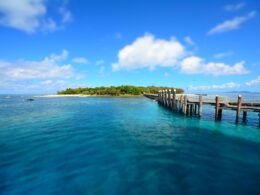
72 Hours In North Queensland/Cairns: The Best Itinerary
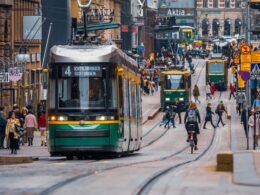
13 Things To Do In Helsinki
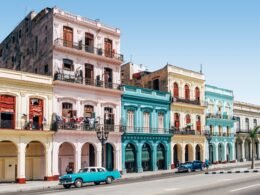
Where To Stay In Cuba – 2023 Guide

Is India Expensive As A Tourist?
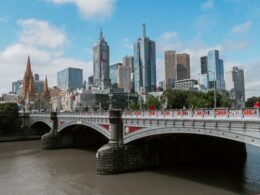
The Ultimate Guide to Visiting Melbourne: What To See, Do & Eat
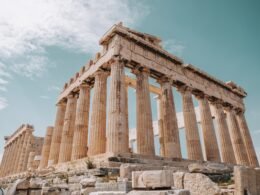
Visiting The Athens Acropolis: The Ultimate Guide

Change location
- Call us today until 8pm
- 01993 838 925 01993 838 645 or
- REQUEST A QUOTE
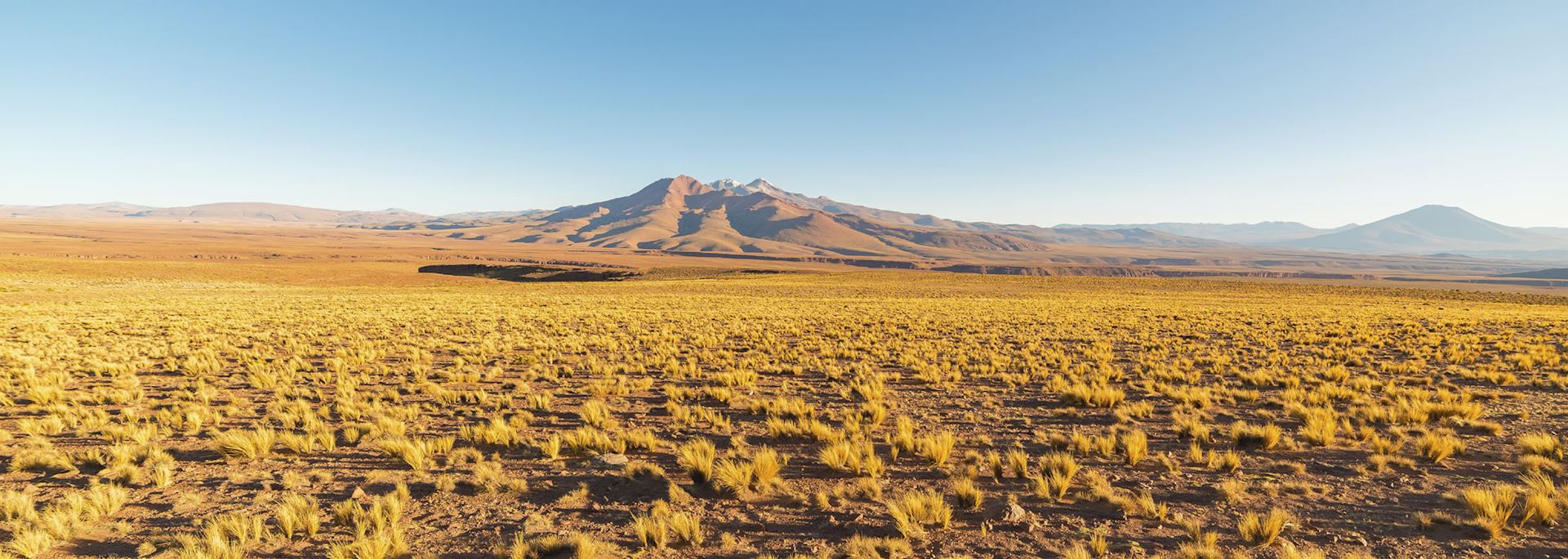
When is the best time to visit Bolivia?
- Month-by-month
The best time to visit Bolivia depends on where you go. Although it is a country of climatic extremes, it can be visited all year round.
The best time to visit the highland areas in Bolivia is April to October — this is the cold winter period, but it should be dry with plenty of blue skies and sunshine, and temperatures around the mid-teens.
The start (April-May) and end (October) of this dry season are particularly good times to go, as there are fewer crowds. You can still enjoy the lushness of the green vegetation left over from the rains in April, while October sees spring on the horizon, with the weather starting to warm up.
In the southern Altiplano, the sky is blue but it’s also very cold, dropping to well below freezing at night. The summer rainy season from November to March can cause some disruption on the roads, but travel is still possible. Lower visitor numbers are a bonus of visiting at this time.
The eastern lowlands, including Santa Cruz and the Amazon, enjoy warm temperatures year-round, with lows of 15°C and highs of 31°C. It’s busier and therefore more expensive in July and August, thanks to the dry and sunny weather, although the temperatures still plummet at night. Wrap up warm.
- Make an enquiry
- Request a brochure
Month-by-month guide for travelling in Bolivia

Visiting Bolivia in November - March
As the rain season begins, temperatures become a little milder in the highlands and more humid in the lowlands. During the heaviest rains road travel can be disrupted but is still perfectly enjoyable for the more adventurous who don’t mind occasional delays. In the high Altiplano and Uyuni, for example, although overland touring will take a longer route around, you can get some spectacular photographs of reflections on the salt flats.
Events & Festivals
- Carnival (February): Carnival is celebrated across Bolivia, with the liveliest festivities to be found in Oruro and Santa Cruz.
- Feria de Alasitas (last week of January): You'll see countless stalls sell all manner of miniature items which Bolivians purchase to appease Ekeko, the household god of abundance. It's a fascinating festival to experience in La Paz.
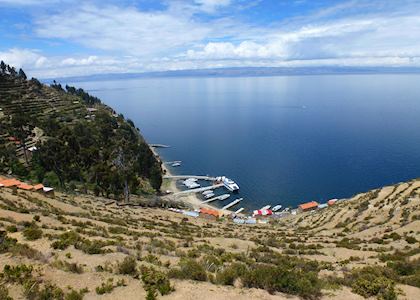
Visiting Bolivia in April - October
Bolivia’s dry season is the most popular time of year to travel, despite the cold weather. Road travel is easier and the bright sunny conditions mean you can photograph the salt flats and Lake Titicaca against dazzling blue skies. June to September is the peak time for visitors, so you should plan well in advance to get the best choice of accommodation. Bolivia’s temperatures are determined by the altitude as well as the season, with highland areas such as La Paz , Lake Titicaca, Potosí and Uyuni generally cool year round and extremely cold at night. This altitude does bring strong sunshine in the dry season, making high factor sunscreen essential.
- Bolivia’s Independence Day (6th August): Bolivia’s Independence Day is a public holiday, with patriotic marches taking place in towns and cities across the country.
- El Señor del Gran Poder (May/June): The feast of El Señor del Gran Poder (Feast of Jesus Christ) brings over 20,000 dancers in brightly decorated costumes to the streets of La Paz.
Bolivia Climate Guide
Why travel with audley.
- 100% tailor-made tours
- Fully protected travel
- Established for over 25 years
- 98% of our clients would recommend us

Travel advice
Practical tips for travelling to Bolivia, from social protocols to guidance on money matters, with a link to the latest FCDO travel advice.

Request our brochure
Covering all seven continents, The World Your Way shows you how you can see the world with us. It features trip ideas from our specialists alongside hand-picked stays and experiences, and introduces our approach to creating meaningful travel experiences.
Trip ideas and travel guides for exploring Bolivia
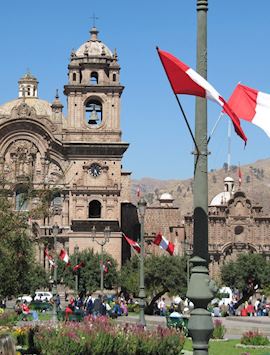
Peru & Bolivia highlights: Machu Picchu, Lake Titicaca, & Uyuni Salt Flats
15 days from £6,700pp
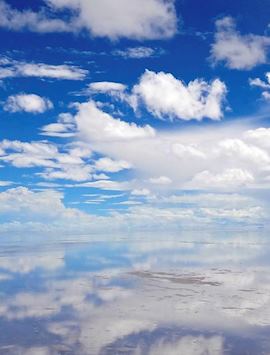
Classic Bolivia tour
12 days from £6,980pp
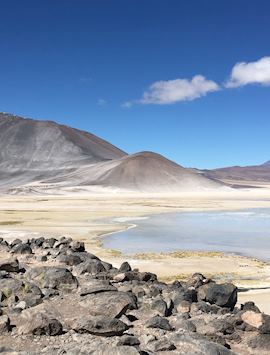
Chile, Bolivia & Peru overland tour
16 days from £7,655pp

A path less trodden: Bolivia
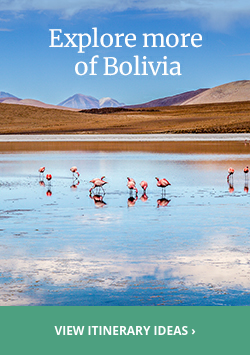
You are using an outdated browser. Please upgrade your browser to improve your experience.
For a unique adventure check out our Trans-Serengeti Balloon Safari!

Tupiza, Bolivia
Best time to visit Bolivia
Month-by-month guide of when to visit.
A month by month guide of when to visit Bolivia
If you're considering travelling to Bolivia, you might be wondering what the best time to visit this diverse and fascinating country is...
The truth is, there isn't one right answer - when to visit Bolivia depends on your interests and priorities.
Generally speaking, the best time to visit Bolivia is during the dry season, which runs from May through October. This is the most popular time of year for tourists, as the weather is generally pleasant and the skies are clear. During this time, temperatures are mild, and hiking in the Andes Mountains is particularly enjoyable. In addition, the dry season coincides with many of Bolivia's cultural festivals, such as the Virgen de la Candelaria festival in Copacabana.
However, if you are interested in seeing Bolivia's incredible wildlife, then the rainy season (also known as the "green season") may be a better time to visit. The rainy season runs from November through April, and during this time, the country's jungles and forests are lush and vibrant. Birdwatching is particularly good during this time, and it is possible to see monkeys, jaguars, peccaries, and other wildlife in their natural habitats.
It is worth noting that the weather in Bolivia can vary greatly depending on altitude. In the highlands, temperatures can drop below freezing at night, even during the dry season. It is recommended to pack warm clothing, regardless of when you visit.
Another factor to consider when planning your trip to Bolivia is the crowds. During the peak tourist season (June-August), popular attractions such as Lake Titicaca and the Uyuni salt flats can get very busy. If you prefer to avoid crowds, consider visiting during the shoulder season, which runs from April-May and September-October.
Ultimately, the best time to visit Bolivia will depend on your interests, budget, and travel schedule. Whether you want to hike in the Andes, explore the Amazon rainforest, or experience Bolivia's vibrant culture and festivals, there is something for everyone in this incredible country.
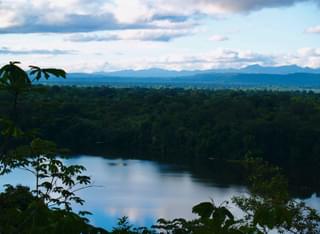
This is the middle of the rainy season in Bolivia, which can make some outdoor activities challenging. However, it's still a great time to explore the country's incredible biodiversity. The jungles and forests are lush and vibrant, making it an ideal time for birdwatching and wildlife spotting. The weather is typically warm and humid, so be sure to pack lightweight clothing and plenty of insect repellent if you plan to spend time in the rainforest.
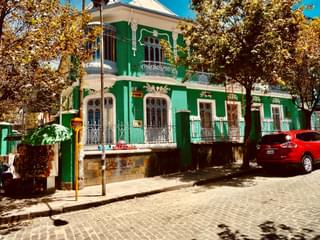
A popular month for festivals in Bolivia, including the Virgen de la Candelaria festival in Copacabana. This religious festival celebrates the Virgin Mary and includes music, dancing, and colourful processions. It's a great time to experience Bolivia's vibrant culture and traditions, and many locals dress in traditional costumes for the festivities. February is also a good time to visit Bolivia's highland cities, such as La Paz and Sucre, where the weather is mild and dry.
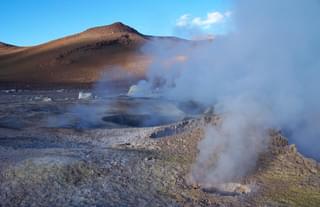
The weather begins to improve, and the rainy season starts to wind down. It's a great time to explore Bolivia's natural beauty, including the stunning Sajama National Park. The highland cities are still cool, but the sunny days make it an excellent time to explore the local markets and historic sites. March is also a good month for hiking and trekking, with many trails reopening after the rainy season.

April is the start of the dry season in Bolivia, making it a popular time to visit. The weather is mild, and there are fewer crowds than during the peak tourist season. It's an excellent time for hiking in the Andes or exploring Bolivia's salt flats. April is also a good month for cultural tourism, with many museums and historic sites offering special exhibits and events.
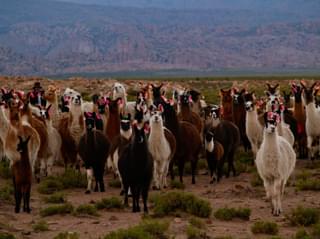
May is one of the best months to visit Bolivia, as the weather is mild and dry, and the country's landscapes are green and lush. It's a popular month for trekking and hiking, with many trails reopening after the rainy season. May is also a good time to visit Bolivia's rural communities, where you can experience traditional farming practices and learn about indigenous cultures.
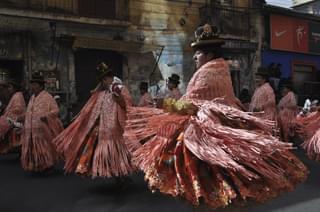
June marks the start of the peak tourist season in Bolivia, with crowds flocking to popular destinations such as Lake Titicaca and the Uyuni salt flats. However, the weather is generally pleasant, and the skies are clear, making it an ideal time for sightseeing and outdoor activities. June is also a good month for cultural events, such as the Gran Poder festival in La Paz, which features traditional dance performances and colourful parades.

In July, Bolivia's highland cities can get quite cold at night, so be sure to pack warm clothing if you're planning on visiting. However, the sunny days make it an excellent time for exploring Bolivia's natural beauty, such as the stunning Sajama National Park. July is also a good month for outdoor activities such as hiking and mountain biking, with many trails open and accessible.
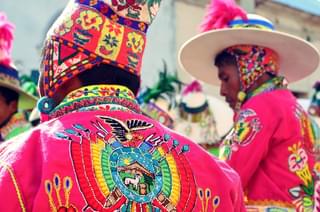
August is one of the busiest months for tourism in Bolivia, so be prepared for crowds if you're visiting popular destinations. However, the weather is mild and dry, making it an ideal time for outdoor activities such as trekking and mountain biking. August is also a good month for cultural events, such as the Festival of San Roque in Macha, which features traditional dances and music.
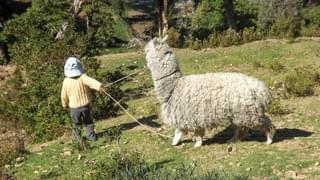
In September, the crowds start to thin out, and the weather remains mild and dry. It's an excellent time for exploring Bolivia's cultural attractions, such as colonial-era churches and museums. September is also a good time for visiting Bolivia's rural communities, where you can experience traditional farming practices and learn about indigenous cultures.
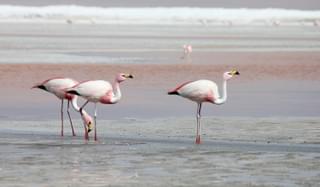
October features cooler temperatures and fewer crowds than during the peak tourist season. It's an excellent time for hiking and trekking, with many trails open and accessible. October is also a good month for wildlife spotting, with many animals becoming active as the weather cools down.
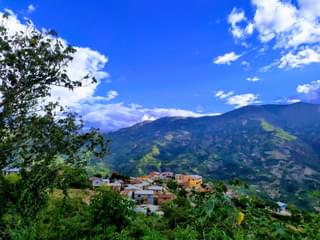
The rainy season starts to pick up again in November, but it's still a great time to visit Bolivia's jungles and rainforests. The landscapes are green and lush, and wildlife spotting is particularly good during this time. November is also a good month for cultural events, such as the Day of the Dead celebrations, which take place throughout the country.
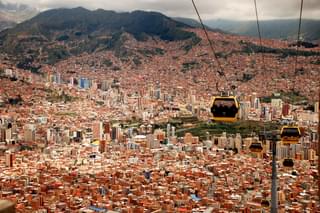
December marks the middle of the rainy season in Bolivia, but it's still possible to enjoy outdoor activities such as hiking and trekking. It's also a great time to experience Bolivia's vibrant holiday traditions, including Christmas and New Year's celebrations. December is a good month for cultural tourism, with many museums and historic sites offering special exhibits and events.
Chat to a Bolivia expert.
Start planning your Bolivia holiday today.
Call an expert on
01768 603 715
Thank you for making an enquiry
Our travel experts will be in touch soon. Feel free to call us on 01768 603 715.
Start planning your next holiday
Give us a call on 01768 603 715 or fill in the form below and we’ll be in touch.
Tell us about you...
Tell us about your trip….
Please enter your comments.
Best time to visit Bolivia: Explore Its Wonders
Bolivia is a country of extraordinary landscapes and fascinating cultures, where visitors can explore the highest navigable lake in the world, hike the Andes Mountains, and discover ancient Inca ruins. But with such a diverse climate and a range of unique experiences, when is the best time to visit Bolivia ? This travel blog will guide you through the different seasons and highlight the best times to travel based on your interests and priorities. From vibrant cultural festivals to adventurous outdoor activities, we’ll help you plan your trip to Bolivia for an unforgettable experience. So, get ready to discover the best time to visit Bolivia and embark on a journey of a lifetime!
- Dry season: The best time to visit Bolivia is during the dry season, which runs from May to October. During this time, you can expect clear skies and pleasant temperatures, making it ideal for outdoor activities such as hiking and sightseeing.
- Festivals: Bolivia is known for its colorful and vibrant festivals, and some of the biggest ones take place during the dry season. Some of the most popular festivals include the Gran Poder festival in La Paz and the Virgen de la Candelaria festival in Copacabana.
- Wildlife spotting: If you’re interested in wildlife, the dry season is a great time to visit Bolivia. This is when animals such as jaguars, pumas, and giant river otters are most active, and you may also have the chance to see flamingos and other bird species.
- Popular tourist destinations: Many of Bolivia’s most popular tourist destinations are located in the highlands, and the dry season is the best time to visit these areas. This includes attractions such as Lake Titicaca, the Uyuni Salt Flats , and the historic city of Sucre.
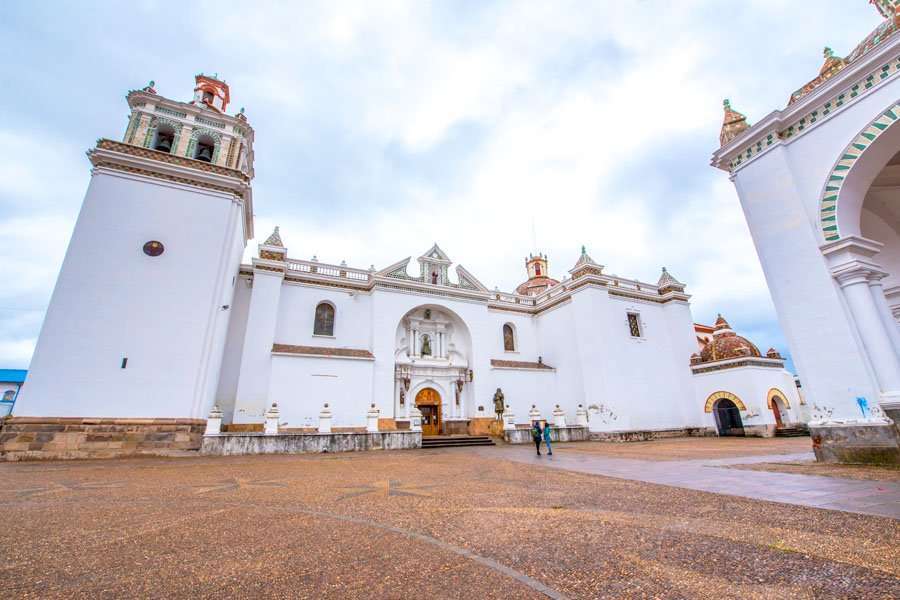
Table of Contents
When is the Best Time to Visit Bolivia?
The best time to visit Bolivia is during the dry season, which runs from May to October. During this time, the weather is generally sunny and dry, making it easier to travel and explore the country’s attractions, such as the Salar de Uyuni salt flats, Lake Titicaca, and the Yungas region.
In the wet season, which runs from November to April, the weather can be unpredictable, with heavy rainfall and possible flooding. This can make travel more difficult and some attractions may be inaccessible.
However, it’s worth noting that Bolivia’s diverse geography means that different regions may have their own unique weather patterns, so it’s always a good idea to research the specific area you plan to visit and plan accordingly.
Bolivia has a diverse climate due to its varied topography, but in general, the dry season (May to October) is the best time to visit if you want to avoid rain and have clear skies for outdoor activities. However, if you’re interested in experiencing Bolivia’s lush rainforests, the rainy season (November to April) is the best time to go.
Events and Festivals
Bolivia is known for its vibrant festivals and celebrations, such as the Carnaval de Oruro in February, which is one of the largest and most colorful festivals in South America. If you’re interested in attending these events, plan your visit accordingly.
High season in Bolivia is generally from June to August, when many tourists visit during their summer holidays. If you prefer to avoid crowds, consider visiting during the shoulder season (April to May and September to November) when there are fewer tourists.
Prices for accommodation and tours can be higher during high season, so if you’re on a tight budget, consider visiting during the low season (December to March), when prices are generally lower.
Popular Destinations
Best time to visit la paz.
The best time to visit La Paz is from May to October when the weather is dry and sunny. During these months, you can expect comfortable temperatures during the day and cooler temperatures at night. The rainy season in La Paz runs from November to April, and during this time, you can expect frequent afternoon showers and occasional thunderstorms.
Best time to visit Salar de Uyuni
The best time to visit Salar de Uyuni is from May to November when it is the dry season and the salt flats are easier to traverse. During this time, you can expect clear skies, bright sunshine, and a chance to witness the breathtaking mirror effect caused by the thin layer of water on the salt flats. During the wet season from December to April, the salt flats are covered with water, making it more difficult to explore.
Best time to visit Lake Titicaca
The best time to visit Lake Titicaca is from May to October when the weather is dry and sunny. During these months, you can expect clear skies, comfortable temperatures, and less chance of rain. The wet season in Lake Titicaca runs from November to April, and during this time, you can expect frequent showers and thunderstorms.
Best time to visit Sucre
The best time to visit Sucre is from April to November when the weather is dry and sunny. During these months, you can expect comfortable temperatures during the day and cooler temperatures at night. The rainy season in Sucre runs from December to March, and during this time, you can expect frequent showers and occasional thunderstorms.
Best time to visit Potosí
The best time to visit Potosí is from May to October when the weather is dry and sunny. During these months, you can expect clear skies, comfortable temperatures, and less chance of rain. The wet season in Potosí runs from November to April, and during this time, you can expect frequent showers and thunderstorms.
Best time to visit Tiwanaku
The best time to visit Tiwanaku is from May to October when the weather is dry and sunny. During these months, you can expect clear skies, comfortable temperatures, and less chance of rain. The wet season in Tiwanaku runs from November to April, and during this time, you can expect frequent showers and occasional thunderstorms.
Best time to visit Santa Cruz de la Sierra
The best time to visit Santa Cruz de la Sierra is from May to October when the weather is dry and sunny. During these months, you can expect comfortable temperatures during the day and cooler temperatures at night. The rainy season in Santa Cruz de la Sierra runs from November to April, and during this time, you can expect frequent showers and thunderstorms.
Best time to visit Madidi National Park
The best time to visit Madidi National Park is from May to September when the weather is dry and the wildlife is easier to spot. During these months, you can expect clear skies, comfortable temperatures, and less chance of rain. The wet season in Madidi National Park runs from October to April, and during this time, you can expect frequent showers and thunderstorms.
Best time to visit Rurrenabaque
The best time to visit Rurrenabaque is from May to September when the weather is dry and the jungle is easier to navigate. During these months, you can expect clear skies, comfortable temperatures, and less chance of rain. The wet season in Rurrenabaque runs from October to April, and during this time, you can expect frequent showers and thunderstorms.
Best time to visit Copacabana
The best time to visit Copacabana is from May to October when the weather is dry and sunny. During these months, you can expect clear skies, comfortable temperatures, and less chance of rain. The wet season in Copacabana runs from November to April, and during this time, you can expect frequent showers and occasional thunderstorms. Overall, it’s important to note that Bolivia is a diverse country with varying climates and landscapes, so the best time to visit may vary depending on where you plan to go. It’s always a good idea to research the specific destinations you plan to visit and the seasons they experience to ensure you have the best possible experience.
The High Season (May-October)
The high season in Bolivia runs from May to October, which is the dry season. This is the best time to visit if you’re interested in experiencing nature, as the weather is perfect for hiking and outdoor activities. The skies are clear, and temperatures are mild, making it the perfect time to explore the Andes or visit the stunning Salar de Uyuni salt flats. It’s worth noting that this is also the busiest time of year, so expect crowds and higher prices.
Check out: Uyuni Tours , La Paz Tours and more at Best Bolivia Tours
The Low Season (December-March)
The low season in Bolivia runs from December to March, which is the rainy season. While this may not sound like the ideal time to visit, it’s actually the best time if you’re interested in culture and salt flat views. The rain creates a beautiful mirror effect on the salt flats, making for stunning photos. Plus, this is the time of year when festivals like Carnaval de Oruro take place.
The Shoulder Season (April & November)
The shoulder season in Bolivia runs from April to November, which sees the best traveling weather across the country. This is a great time to visit if you’re looking for a mix of adventure and culture, as you’ll get to experience the best of both worlds. The crowds are smaller, and prices are lower, making it an ideal time to visit.
Month-by-Month Guide for Travelling in Bolivia
Now let’s take a closer look at each month and what you can expect during that time of year.
January (is festival time, despite the rain)
January may not be the driest month, but it is the perfect time to experience some of Bolivia’s most vibrant festivals. You can join in the celebrations during Alasitas in La Paz, where people buy miniature items representing their wishes for the upcoming year. Meanwhile, in Copacabana, the Fiesta de la Virgen de la Candelaria takes place, where thousands of devotees come to honor the patron saint of the town. Be sure to pack a raincoat, as January is one of the rainiest months in Bolivia.
February (is carnival time in Oruro)
February is the month when Bolivia comes alive with music, dance, and colorful costumes during the Carnaval de Oruro, one of the most famous festivals in South America. This carnival, recognized by UNESCO as a Masterpiece of the Oral and Intangible Heritage of Humanity, is a celebration of indigenous culture and religion. You’ll witness traditional dances, music, and folkloric costumes that have been passed down through generations. This is a must-see event, but be sure to book accommodation and transportation well in advance.
March (rain gives way to sunny spells)
March is a month of transition, as the rainy season comes to an end and the dry season begins. You can still expect some rainfall, but the sunnier days make it a great time to visit the Bolivian Amazon or explore the stunning landscapes around La Paz. This is also a good time for wildlife watching, as animals come out to bask in the sun after the rain.
April (sees the end of the rains)
April is one of the best months to visit Bolivia, as the rainy season has ended, and the weather is warm and sunny. You can enjoy outdoor activities like hiking, cycling, and exploring the country’s natural wonders like Lake Titicaca, the Yungas, and the Salar de Uyuni. This is also a great time to experience Bolivia’s traditional Easter celebrations.
May (is the start of the hiking season)
May marks the start of the high season in Bolivia, and it’s the perfect time for hiking and trekking adventures. The weather is dry and sunny, making it a great time to explore the Andes Mountains, especially the Cordillera Real range. The temperatures are mild during the day and cool at night, so be sure to pack layers.
June (sees good travel weather, but occasional chilly spells)
June is a great month for exploring Bolivia’s diverse landscapes, from the Amazon to the Andes. The weather is dry and sunny, but there can still be occasional chilly spells, especially at night. This is a great time to visit Bolivia’s national parks and nature reserves, like Madidi, Amboro, and Toro Toro.
July (feels like winter in Bolivia)
July is the coldest month in Bolivia, and it can feel like winter, especially at high altitudes. However, the weather is still dry and sunny, making it a great time for outdoor activities like hiking, biking, and exploring the countryside. The annual Gran Poder festival takes place in La Paz in July, a colorful celebration of Andean culture and music.
August (brings the biggest crowds)
August is the busiest month in Bolivia, as locals celebrate Independence Day on August 6th. This is a great time to experience Bolivia’s patriotic spirit and witness colorful.
September (is the time to hit the Amazon)
September marks the end of the dry season in Bolivia, and the weather is generally mild and pleasant. This is a great time to explore the country’s natural wonders, such as the Salar de Uyuni salt flats and Lake Titicaca. You can also attend the Festival de la Primavera in Santa Cruz, a colorful celebration of spring.
October (sees the crowds dissipate)
October is a popular month to visit Bolivia, as it marks the beginning of the rainy season and the country’s famous Carnaval de Oruro takes place during this month. This vibrant festival is a great way to experience Bolivia’s rich cultural heritage and traditions.
November (welcomes the Day of the Dead)
November is a quieter month in Bolivia, as the rainy season is in full swing and many tourists opt to avoid the wet weather. However, this is a great time to explore the lush forests and wildlife reserves of the Amazon basin, as the rainforest is teeming with life during this time.
December (sees plenty of holiday cheer)
December marks the end of the rainy season in Bolivia, and the weather is warm and sunny. This is a great time to explore the country’s cities and cultural attractions, such as La Paz and Sucre. You can also attend the colorful Festival de la Navidad in Cochabamba, a celebration of the Christmas season.
Bolivia is a country with a diverse climate due to its high altitude and various geographical features. The climate in Bolivia can vary depending on the region and altitude, with some areas experiencing dry desert climates, while others have tropical or subtropical climates.
The highlands, where many of the popular tourist destinations are located, have a cool, dry climate with temperatures ranging from 0°C to 20°C (32°F to 68°F) throughout the year. This region experiences two distinct seasons – the dry season from May to October, and the rainy season from November to April. The dry season is characterized by clear skies, cool temperatures, and low humidity, making it the perfect time for trekking and outdoor activities. On the other hand, the rainy season can make travel difficult due to flooded roads and landslides.
The lowlands, on the other hand, have a hot, humid climate with temperatures ranging from 20°C to 35°C (68°F to 95°F) throughout the year. This region experiences a rainy season from December to March and a dry season from April to November. The wet season can bring heavy rains and flooding, making travel difficult, but it also makes the landscape lush and green.
Bolivia Climate Guide
The Altiplano, a high plateau region located in western Bolivia, has a cold, arid climate with temperatures ranging from -15°C to 15°C (5°F to 59°F) throughout the year. This region experiences a dry season from May to October and a rainy season from November to April. The dry season is the best time to visit this region, as the weather is clear and sunny, making it ideal for outdoor activities such as trekking, cycling, and sightseeing.
Cheapest Time to Visit Bolivia
If you are on a budget, the cheapest time to visit Bolivia is during the low season (December–March). During this time, you will find great deals on flights and accommodation, making it an ideal time for budget travelers. Moreover, you can take advantage of the lower prices and enjoy cultural events such as Carnaval de Oruro, which takes place in February.
Least Busy Time to Visit Bolivia
If you prefer to avoid the crowds, the least busy time to visit Bolivia is during the shoulder season (April and November). During these months, you will find that the weather is still favorable for traveling, and there are fewer tourists around. You can enjoy exploring the natural beauty of Bolivia without having to contend with large crowds.
Worst Time to Visit Bolivia
The worst time to visit Bolivia is during the rainy season (December–March). During this time, many roads can be closed due to flooding, making travel difficult. The heavy rainfall also makes it more challenging to undertake outdoor activities. Additionally, while you may be able to find cheaper deals on flights and accommodations, you may not be able to experience Bolivia’s incredible landscapes to the fullest.
Tips on the Best Time to Visit Bolivia
It is important to keep in mind that the weather can be unpredictable in Bolivia, so be prepared for sudden changes in temperature, especially if you plan to travel during the shoulder season. Also, if you want to experience the cultural festivals that Bolivia is known for, such as the Carnaval de Oruro or the Day of the Dead, it’s best to plan your trip in advance, as these events can draw large crowds.
Bolivia is a fantastic destination to visit all year round. However, the best time to visit Bolivia depends on what you want to see and do. If you want to experience the natural beauty of the country, it’s best to travel between May and October. If you are on a budget, then the low season is the best time to visit. Finally, if you prefer to avoid the crowds, then the shoulder season is the perfect time to visit Bolivia. Regardless of when you choose to visit, you are sure to have an unforgettable experience in this incredible country.
Like any other country, there are some safety concerns in Bolivia, but overall, it is safe for travelers. It’s always a good idea to take precautions such as avoiding unlit areas at night and keeping your valuables close to you.
The currency used in Bolivia is the Bolivian Boliviano (BOB)
Bolivia is full of must-visit destinations, including the Salar de Uyuni salt flats, Lake Titicaca, La Paz, and the Amazon rainforest.
Bolivia is a high-altitude country, with many areas over 3,000 meters above sea level. Visitors should take care to acclimatize properly to avoid altitude sickness.
Other Countries
Check our Best time Guides for this countries:
- Best time to visit Chile
- Best time to visit Peru
- Best Time to Visit Argentina
Related Posts

Rainbow Mountain: The Highlight of Your Trip to Peru
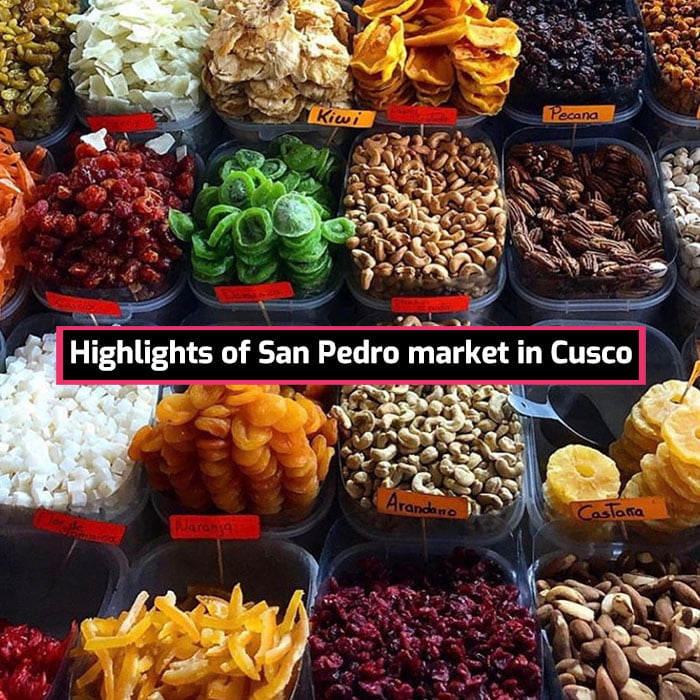
Highlights of San Pedro market in Cusco
Best Time To Visit Bolivia
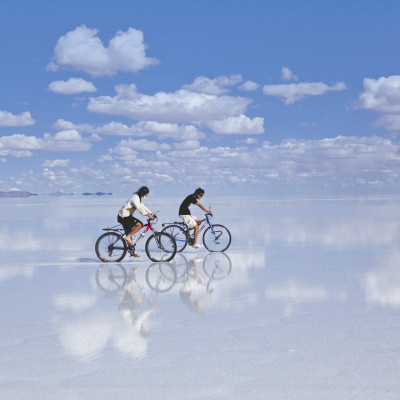
Bolivia through the seasons
Although Bolivia lies directly on the equator, the climate is by no means uniformly tropical. Most of the Andean region is set more than 1500 meters above sea level, with some peaks as tall as 6000 meters! Naturally, the fresh mountain air dominates the higher altitudes where, instead of rainfall, you will see snow in November. The Altiplano region (La Paz, Uyuni) remains moderately cool throughout the year. On the other hand, the lowlands experience distinctly tropical weather with temperatures above 86°F. The best time for travel to Bolivia is between the months of May to October when the weather is dry. Bolivia receives the most amount of tourists in July and August. Traveling in the rainy season can be challenging as many of the roads are difficult to navigate. Some parts of Bolivia can be visited throughout the year.
Best Time To Visit
We recommend.
- Gift Ekeko, the god of abundance, at the Feria de Alasitas in La Paz
- Discover the colonial history of Sucre, the capital city
- Revel in the festivities at the Carnaval de Oruro
- Head to Copacabana for the colorful Fiesta de La Virgen de Candelaria
- Experience the largest mirror on earth – the Salar de Uyuni
- Discover the dark past of the Cerro Rico mines in Potosi
- Appreciate the untouched natural wonders of Sajama
- Explore the ruins of Isla del Sol
- Watch dancers flaunt their colorful costumes at the Fiesta del Gran Poder in La Paz
- It’s party time at the Fiesta de Moxos in Beni
- Be part of the celebrations surrounding Bolivia’s Independence Day
- Visit UNESCO World Heritage Sites at Santa Cruz
- Experience the Bolivian Amazon at Parque Nacional Madidi
- See RED at Laguna Colorado
- Take a boat ride to the Uros Floating Islands In Lake Titicaca
- Surreal sunsets await at the Valle de La Luna
Best Time to Visit Bolivia by Season
- In the dry season: May to October
- Rainy season: November to April
Altitude in Bolivia and Tips to Prevent Altitude Sickness
Upon reaching heights of 3000 meters or greater, some people can experience altitude sickness (otherwise known as Soroche), in response to the lack of oxygen in the air. To prevent altitude sickness, we recommend that you take it slow so your body can adapt. In the first hours after your arrival, we recommend that you lie down and drink plenty of water. Acclimatization will generally take you one to two days.
Soroche symptoms include headache, fatigue, loss of appetite, stomach illness, dizziness, and sleep disturbance, and usually develop within the first day or two at altitude. It’s difficult to determine who may be affected since there are no specific factors (age, sex or physical condition) correlated with susceptibility. The main cause of Soroche is ascending too rapidly.
High-altitude destinations in Bolivia:
- Sajama, Bolivia: 4,250 m (13,944 ft)
- Potosí, Bolivia: 4,090 m (13,420 ft)
- Puno, Titicaca Lake, Copacabana, Bolivia & Peru: 3,827 m (12,628 ft)
- Uyuni, Bolivia: 3,656 m (11,995 ft)
- La Paz, Bolivia: 3,650 m (11,975 ft)
- Sucre, Bolivia: 2,750 m (9,022 ft)

What to Pack
What you pack for your Bolivia trip will depend on the time of year you are visiting, but in general here are few essentials you should include: Waterproof clothing, hiking and/or trekking boots, winter clothes such as gloves, hat, scarf, thermal layers, warm windproof and waterproof jacket, sunglasses, insect repellent, swimming gear, sandals, light clothing for the summer. Do note that 100% UV sunglasses are a must as is sunscreen (SPF 30+) especially when visiting the salt flats!
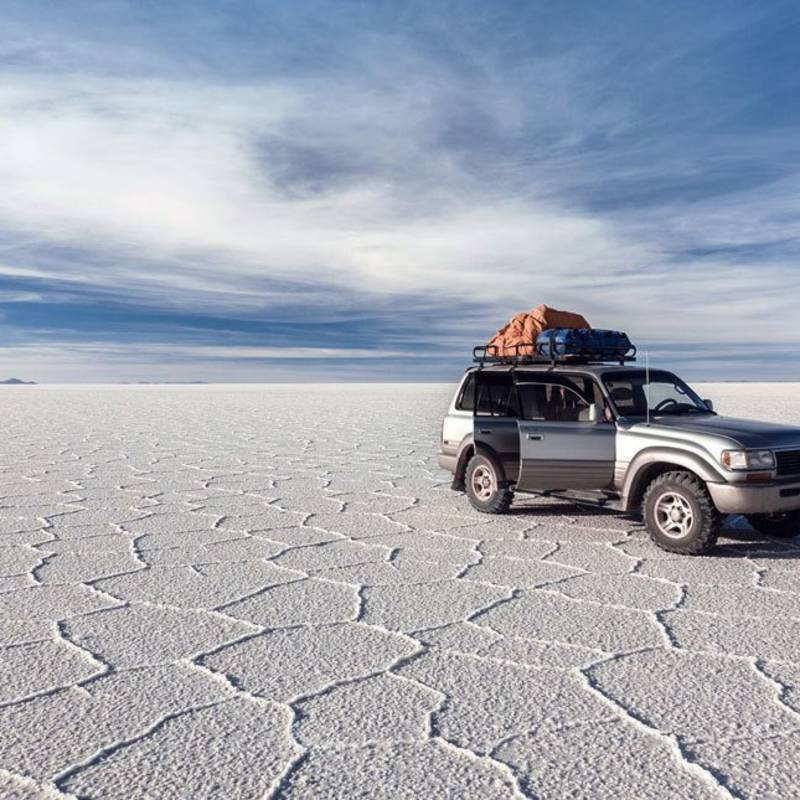
From the Blog
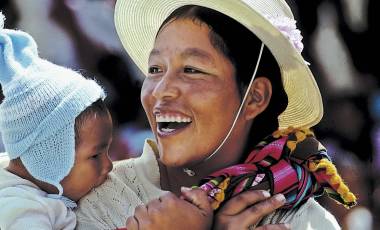
Raw & 100% Authentic: Bolivia Travel
Include a taste of the enchanting in your customized South America tours. Jacqueline Spencer captures the heart of an uncharted territory with an account of her recent trip and highlights exactly Bolivia travel is a must.

Top 10 Things To Do In Bolivia: Explore!
What are the top 10 things to do in Bolivia? Here’s our list. Bolivia: The land of quinoa, Jesuit missions and spectacular salt flats that are visible from space. We’re unveiling our top ten list of sites and activities to explore in Bolivia.

Exploring Bolivia: It’s All About The Perfect Shot!
In December 2015, Dianne Graham decided on one of our customized South America tours. An avid traveler and a passionate photographer, to Dianne, the journey was all about capturing the beautiful country through her lens. How did she fare? Read on to find out! Exploring Bolivia: Thoughts about my journey Bolivia is a showcase of dramatic…
Popular Trips to Bolivia

Bolivia: Landscapes and Culture
From enchanting UNESCO World Heritage sites to rolling sierras and fascinating insights into vibrant cultures – this Bolivia tour offers it all! Explore the best known sights and sounds on a private tour spanning the country.

Bolivia: Color and History
This Bolivia tour lets you immerse yourself in the fascinating history, colorful culture and natural splendor. From diverse capital cities to iconic salt flats, the magic of the country is that it still has many unbeaten paths to explore.

Bolivia & Chile: Desert Adventure
Experience extreme sceneries on your Bolivia and Chile tour. Haunting landscapes, glittering salt pans and the world’s oldest desert will take your breath away!
Best Places To Visit
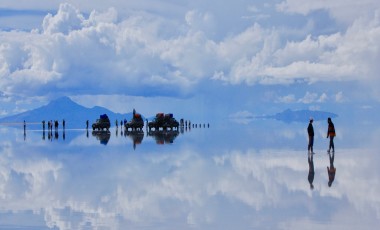
Surely one of the most ghostly towns you are ever likely to visit, Uyuni’s primary reason for existence is to serve as the gateway to the world’ s largest and truly impressive salt flats – the Salar de Uyuni.
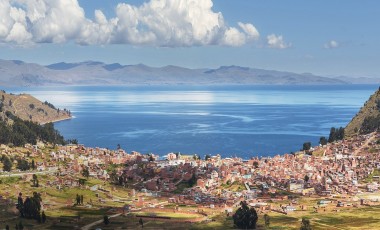
Located on the shores of Lake Titicaca, the highest navigable lake in the world, Copacabana is the jumping off point to discover the sacred Incan island of the Isla del Sol, whilst the town itself is known for its traditional festivals and processions that take place throughout the year starting from its famous 16th Century shrine – the Basilica of Our Lady of Copacabana.
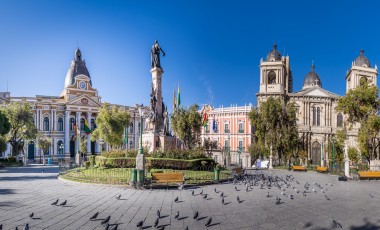
Set into a canyon and surrounded by snow capped peaks, Bolivia’s de facto capital La Paz, makes quite the impression with its cultural cauldron of tradition.
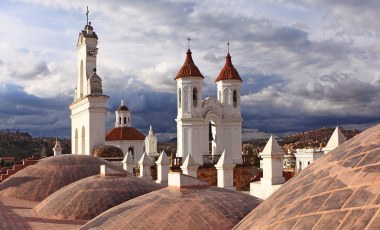
Situated amongst the rolling sierras of the eastern altiplano is Sucre, Bolivia’s prettiest and most charming city and historical capital.
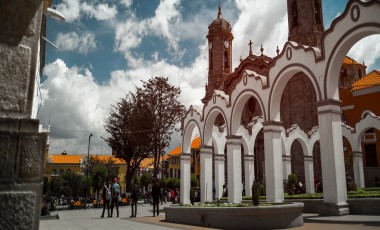
Lying in the shadow of Cerro de Potosí (other wise known as Cerro Rico) the town of Potosi owes it’s existence to this ‘Rich mountain’ which has provided the towns wealth since its foundation in 1546 as a mining town.
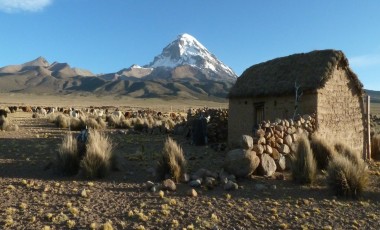
Far away from everything, utterly off the beaten path and just about as authentic and rugged as it gets lies Sajama, Bolivia’s tallest peak (6542m), and its namesake National Park.
Bolivia Travel Guide
From language and what to expect to health information, vaccination, visas and currency, discover top tips from our experts in our Bolivia travel guide.
Things To Do
What are the top things to do on a Bolivia holiday? From traversing endless salt flats, to climbing mountains and discovering unique cultural delights, our destination experts share their personal favorites.
The Enchanting Difference
Authentic & unique.
Our award-winning, licensed local guides provide incredible insights and exclusive experiences for you.
Personalized & Private
Our experts completely customize your private tour to match your interests and preferences.
High-Quality Experiences
All our accommodations and services are personally tested by our team.
Fully Supported Travel
You’ll have a personal and dedicated trip coordinator, backed by 24/7 support in case of emergencies while you’re traveling.
Financial Protection & Flexibility
Your booking is flexible and completely secure with us.
Safe & Secure
Your safety and well-being are our top priorities.
What Our Guests Say

Do you have a vacation in mind? Personalize your itinerary with our Trip Builder.

Bolivia Travel Guide
Looking for an in-depth Bolivia travel guide ?
Then you’re in the right place!
One of the more underrated gems of Latin America, Bolivia is a vibrant country full of incredible sights, friendly people and unique culture.
From breathtaking salt flats to lush jungles to exciting cities, there’s something for every kind of traveler in Bolivia. And if you’re looking to visit some record-breaking places, this is the country to visit.
Bolivia is home to the tallest monument to Jesus Christ on Earth, the world’s largest navigable lake, the largest population of Indigenous peoples, and much more.
With so many fascinating experiences, you’ll be bragging about your trip to your friends and family for weeks after you return.
Bolivia’s diverse landscape makes it the perfect destination for outdoor adventurers . From the Andes Mountains to the Amazon, there’s a lot to explore in this landlocked country.
Madidi National Park is the best place in the country to experience the mighty Amazon River, whether you’re hiking through the rainforest or checking out the local wildlife. Be sure to build in extra time to reach the park, though, as rides on public transport from major cities can take several hours, especially in the wet season.
Up in the highlands, you’ll find incredible mountain views at Lake Titicaca, a top spot for international travel. This giant lake is home to sights and experiences you won’t soon forget.
Wherever you decide to go, read up on travel health before your trip. Altitude sickness can take its toll here, so make sure you’re prepared for whatever adventure you have planned.
Not much of an outdoorsy type? Bolivia’s cities have tons to offer travelers.
Santa Cruz, located in southern central Bolivia, is considered the country’s commercial center and has tons of great museums, galleries, and cultural institutions to visit — as well as a vibrant nightlife scene.
In La Paz, you can browse the colorful markets and learn more about the Indigenous Incan culture that has endured in the area for centuries.
And in Sucre, you can see real dinosaur footprints and chow down on authentic empanadas all in the same day (a perfect itinerary if you ask us).
Ready to travel Bolivia?
Keep reading to dive into resources that will help you with planning a trip to Bolivia in South America.
Note: This ultimate guide to Bolivia travel contains affiliate links to trusted partners!

Bolivia Map
Use this Bolivia travel map to begin planning your trip to this incredible country!
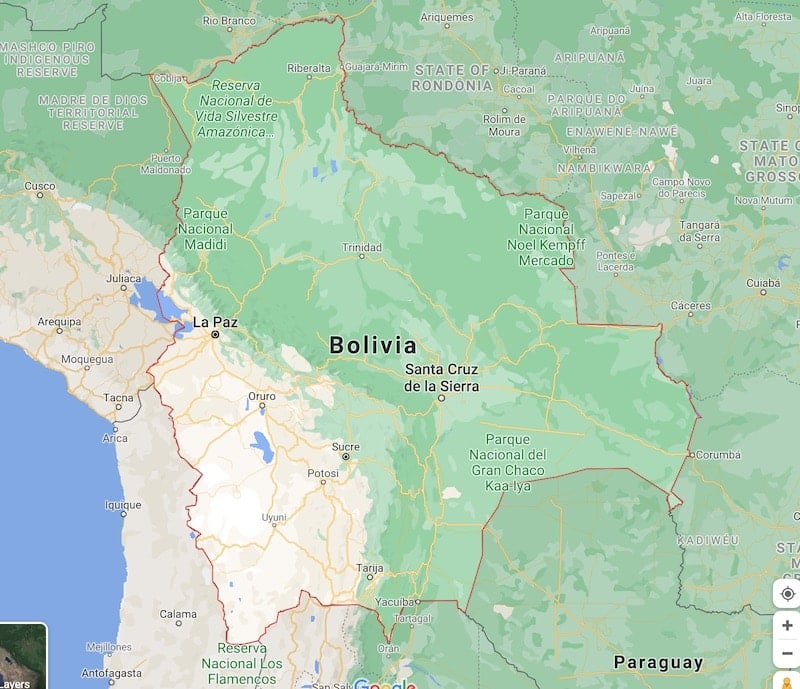
Click here for an interactive Google Map version of the above graphic.
Bolivia Salt Flats Experiences
Looking to travel to the Bolivia Salt Flats (ie Salar de Uyuni)? These guides can help!
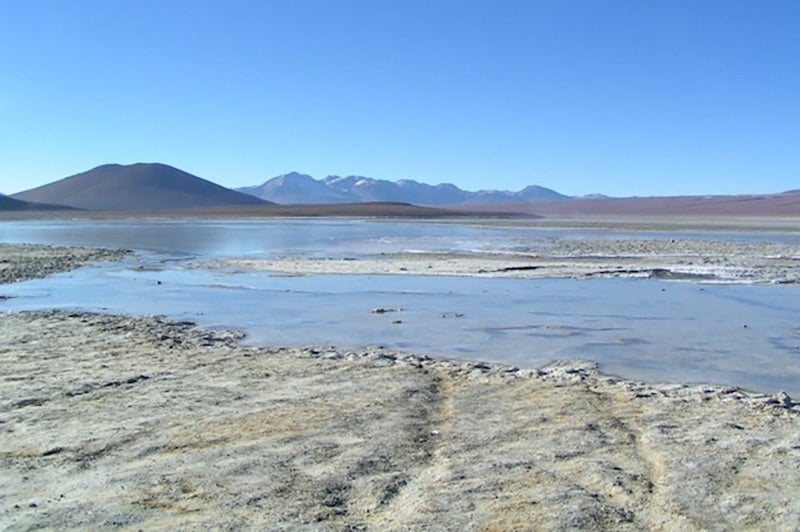
Touring Bolivia’s Salt Flats: A Memorable Experience
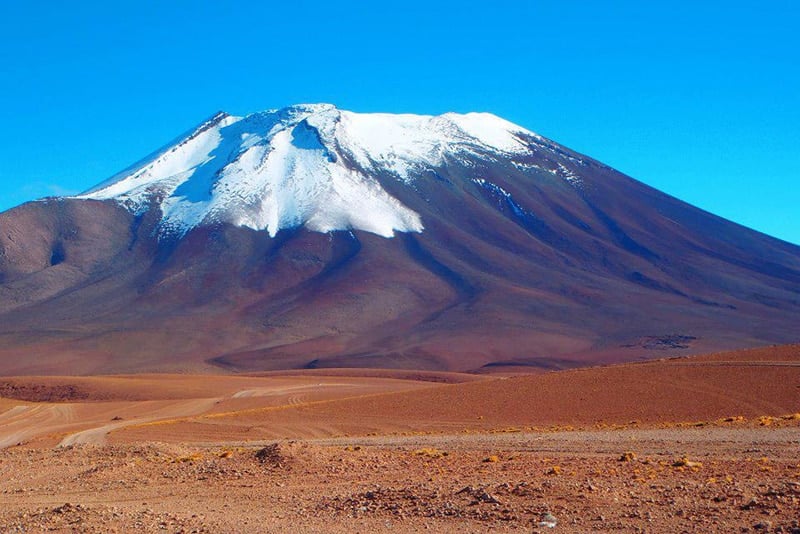
Awkward Moments In Bolivia’s Siloli Desert
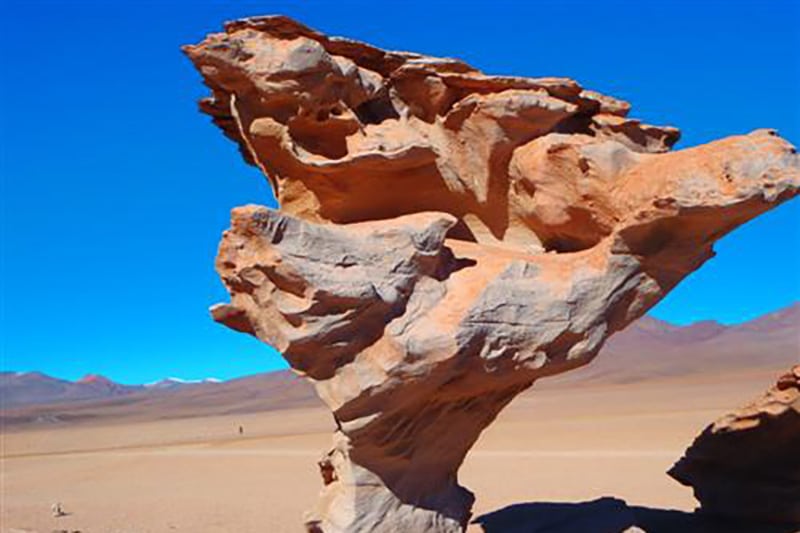
The Lesser-Known Sites Of Salar de Uyuni In Bolivia
La Paz Travel Guide
La Paz is a must-stop when traveling in Bolivia !
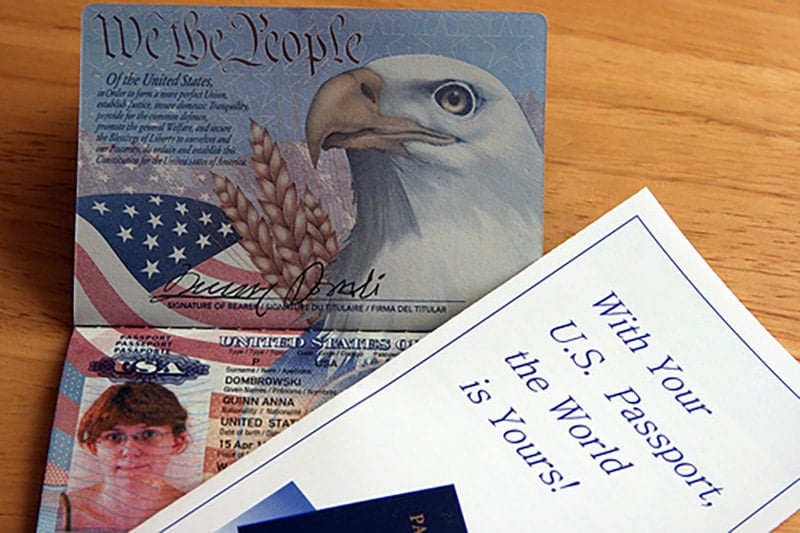
My Humorously Painful Story About Obtaining A Visa In La Paz, Bolivia
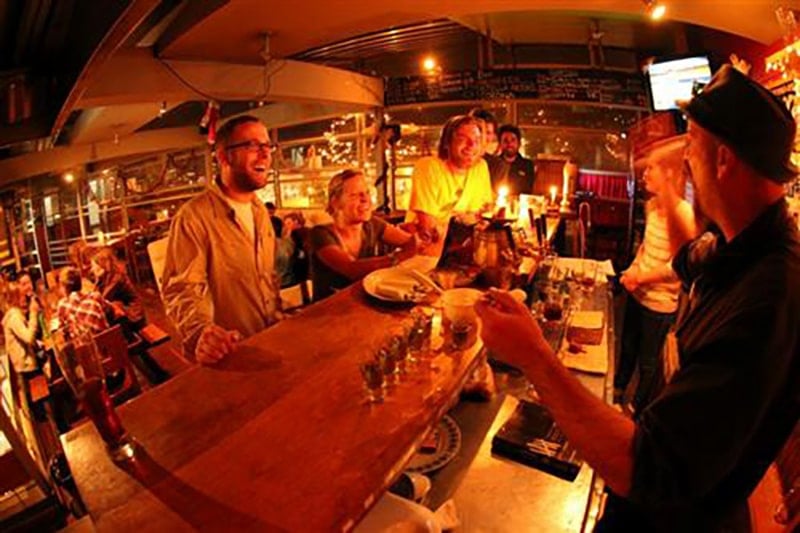
Hostel Review: The Adventure Brew B&B In La Paz, Bolivia
Bolivia Travel Tips
This advice can help you with planning a trip to Bolivia !
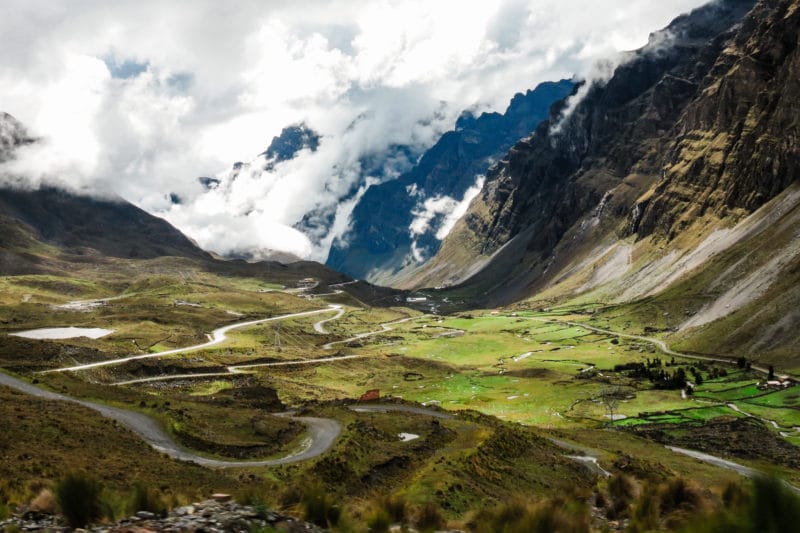
Why Bolivia Should Be Your Next Travel Destination
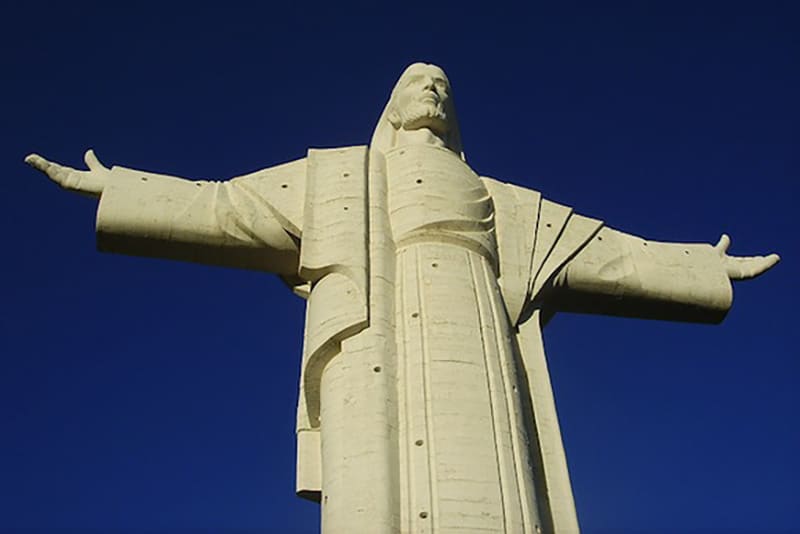
15 Fascinating Things You Didn’t Know About Bolivia
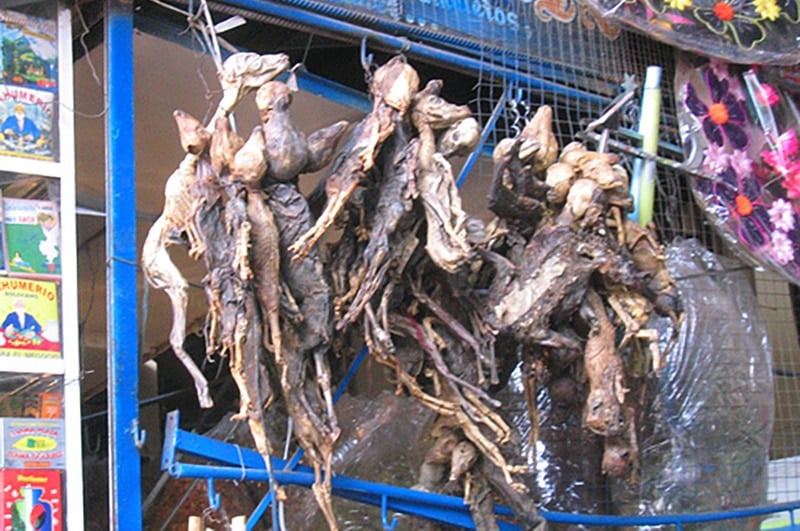
Want Good Luck In Bolivia? Buy A Llama Fetus!
Things To Do In Bolivia
Book the following Bolivia tourist attractions & experiences for an incredible trip!
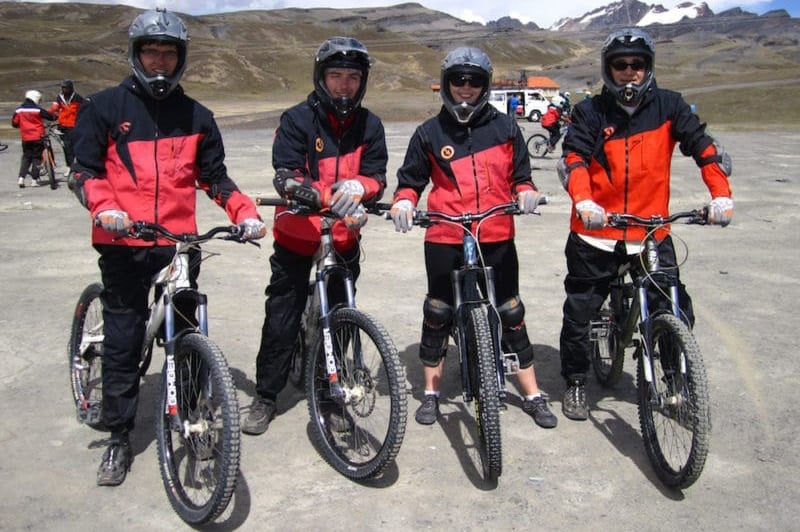
How To Bike Bolivia’s Death Road (& Survive)
Traveling In South America
These guides share Bolivia travel advice as well as tips for exploring South America in general!
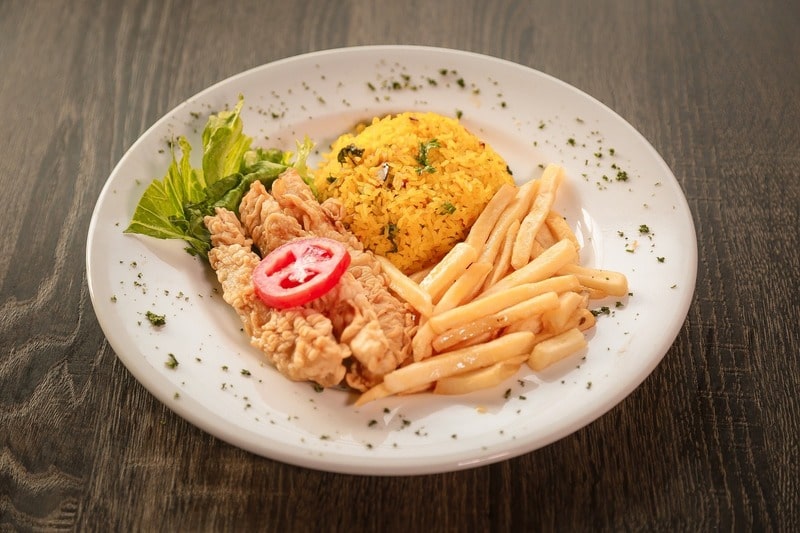
14 Essential Tips For Backpacking South America

My Most Ridiculous Bus Encounters Backpacking South America
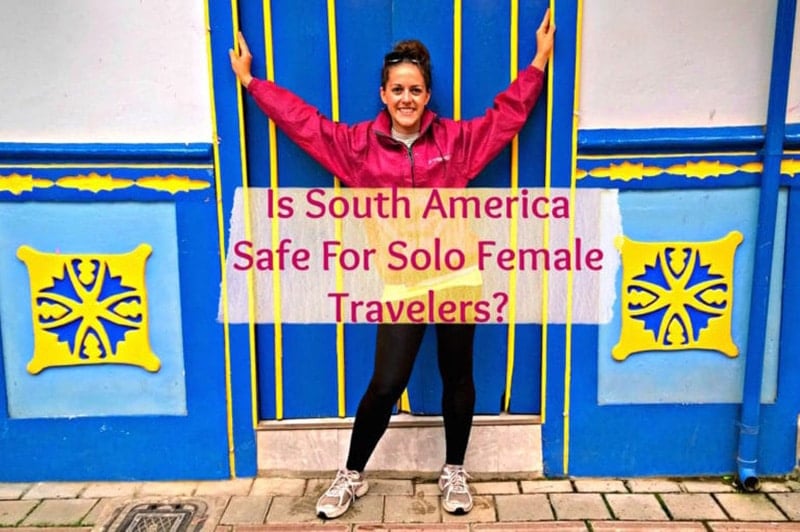
Is South America Safe For Solo Female Travelers?
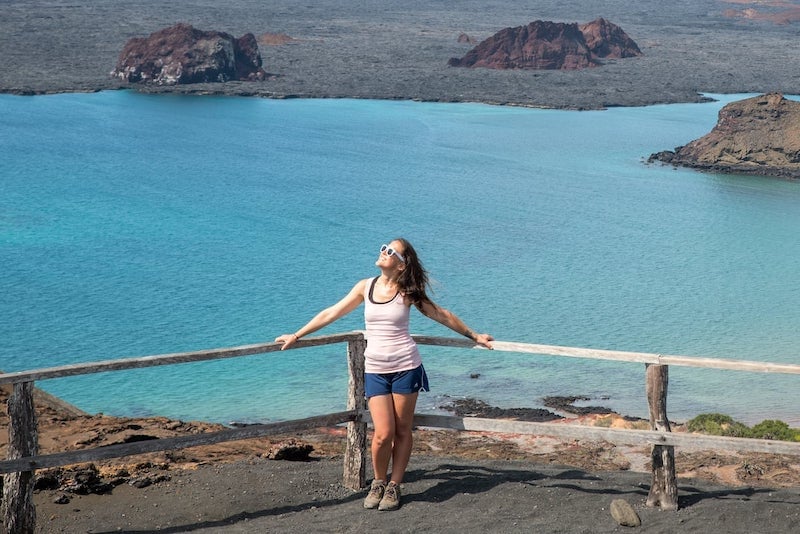
21 Best Places For Solo Travel In South America
Best Bolivia Tours
Explore local culture with a Bolivia tour guide through these unique excursions:
- 3-Day Tour to Salt Flats and Lagoons from Uyuni
- La Paz City Walking Tour Including Historical Streets
- Chacaltaya + Moon Valley from El Alto
- Death Road: Mountain Bike Tour on the World’s Most Dangerous Road from La Paz
- Climbing Huayna Potosí from La Paz
- Day Tour to Titicaca Lake from La Paz
Bolivia Hotels
Click here to browse the best Bolivia travel hotels!
Prefer self-contained stays?
Click here to check out unique local rentals !
You can also use this map to search for local stays:
Renting A Car In Bolivia
Need a rental car for your Bolivia trip?
Use Discover Cars to quickly compare your car rental options.
Bolivia Travel Insurance
It doesn’t matter if you’re traveling solo or with a group on a Bolivia tour. When visiting Bolivia — or any other country in the world — make sure to get travel insurance to protect your health and safety.
In my opinion, the best travel medical insurance for travelers is SafetyWing as they’ve got a large network and offer both short-term and long-term coverage — including coverage if you’re traveling for months as well as limited coverage in your home country).
Additionally, SafetyWing is budget-friendly and offers $250,000 worth of coverage with just one low overall deductible of $250.
With coverage, you’ll have peace of mind as you embark on your Bolivia travel itinerary.
Click my referral link here to price out travel insurance for your trip in just a few clicks .
Bolivia Travel Guide FAQ
Below, find answers to frequently asked questions about traveling in Bolivia .
Q: What are the best places to visit in Bolivia?
Bolivia is an amazing place to get outside and enjoy the wonders of nature and see truly once-in-a-lifetime sights.
One of the country’s most popular attractions is Salar de Uyuni , the world’s largest salt flat. Stretching nearly 11,000 square kilometers (4,247 square miles), this former prehistoric lake will make you feel like you’ve stepped onto another planet, with reflective landscapes as far as the eye can see.
The salt flat offers plenty of unique experiences, like an overnight stay in a salt hotel or a relaxing dip in the local hot springs. This is definitely one stop you won’t want to miss.
Truly daring bikers will want to take a ride on Death Road , a 40-mile downhill road that winds through Bolivia’s mountains.
As the name suggests, this isn’t exactly an experience for first-time bikers, and even if you’re experienced you still might want to ride with a tour guide. But the views from the cliffs and the adrenaline rush from the ride have made this road famous for a reason.
For a somewhat more relaxed experience, head to the famous Lake Titicaca , the largest lake in South America. Here, you can enjoy incredible views, explore Incan ruins, and check out man-made floating islands.
Bolivia is also home to many vibrant cities that are definitely worth exploring. The nation’s capital, La Paz , is a gorgeous city nestled into the mountains with tons of amazing sights to see and culture to take in.
Take a cable car up to the city’s highest peaks for incredible views of La Paz and the surrounding mountains. Explore old colonial cobblestone streets and stroll by colorful houses that date back to the 16th century.
And the adventurous can check out the Witches Market stocked with everything you need to commune with the divine, or just manifest some good luck (including llama fetuses ).
Beyond La Paz, the city of Sucre is the perfect place to check out Spanish colonial architecture and brush up on your language skills with fellow international travelers. The surrounding mountains and mild weather also make Sucre the perfect spot for hiking some of the world’s best trails .
For a look into Bolivia’s history, head to Potosi , home of the Cerro Rico silver mines. Once one of the most populous cities in the Americas, the city showcases gorgeous historic architecture that really tells the story of this country’s long history.
Q: Is Bolivia expensive for tourists?
Compared to other South American destinations, Bolivia is quite inexpensive for travelers. The average traveler spends about $42 USD per day in Bolivia on food, transportation, accommodations, activities, and other travel expenses.
You can generally find apartment rentals for less than $50 USD per night and hostels are easy to find, particularly in cities.
Food is also generally pretty inexpensive regardless of whether you’re eating at restaurant or from a street food vendor.
Q: What is the best way to travel around Bolivia?
Air travel is usually the quickest and most comfortable way to get around the country. Flights in Bolivia are pretty inexpensive and will help you get to out-of-the-way destinations without losing days to travel.
Buses are a popular (and inexpensive) mode of transportation in the country, but they can be uncomfortable and journeys can take much longer than advertised. If your plans are flexible (and you’re on a tight budget), this might be the best way to get around.
You can also book a direct route on a tourist-class bus for a bit more money for a quicker, more comfortable ride.
Q: Is Bolivia safe for travel?
Bolivia is relatively safe for travelers but does pose some more risks than other destinations. Violent crime rates have risen here in recent years and petty crime is a constant issue.
Pickpocketing and bag snatching does happen, particularly in cities and more tourist-heavy areas. Always stay aware of your surroundings and don’t flaunt any obvious signs of wealth when you’re out in public to avoid pickpockets .
You’ll also want to keep your valuables hidden and separate your money so it’s not all in one place.
Bolivia is also a bit riskier for solo female travelers , but you should be fine if you stay on the backpacker route and avoid going out alone after dark.
Q: What do I need to know before going to Bolivia?
Bolivia’s landscape is very diverse, which means that the weather can vary from place to place. The high altitudes of mountain destinations can leave you shivering in the cold if you’re not prepared, while you may find yourself facing high temperatures in the lowland regions.
If you’re doing a big tour of the country and visiting several different destinations, pack accordingly. Do some research on each place you plan to visit and make sure you’re prepared with appropriate clothing.
Also, the sun is also strong wherever you go in Bolivia, so don’t forget the SPF!
If you’re not used to high altitudes, you may find yourself feeling a little woozy once you enter the highlands. If you’re facing altitude sickness, the best thing to do is to take care of yourself as best you can. Rest when you need to, drink lots of water, limit your alcohol intake, and ascend slowly if you can.
You might also want to pack appropriate medications in case you experience symptoms. Ibuprofen is always great for headaches and acetazolamide and dexamethasone can help with more specific altitude sickness symptoms. Be sure to ask your doctor if these medications are appropriate for you before your trip.
Most businesses in Bolivia don’t accept credit cards, so you’ll want to make sure you have cash on hand. Better yet, keep some spare cash in your luggage — you’ll find ATMs in most towns here but they’re not always reliable. It’s always helpful to have a backup stash in a safe place just in case you can’t access your funds.
Q: How many days should you spend in Bolivia?
Most experts suggest spending about a week in Bolivia. This should give you enough time to see the major sights like Salar de Uyuni, Lake Titicaca, and La Paz and will give you enough wiggle room to travel from destination to destination.
On a 10-day trip, you can build in some time to visit other great destinations like Sucre and Tupiza.
Q: What is the best month to visit Bolivia?
Bolivia’s climate varies throughout the country, but you’ll find that the dry season (April through October) is usually the best time to visit. Temperatures are a bit cooler but without the extreme weather of the wet season, traveling around the country is much easier.
The country’s peak season runs from June through September so plan to visit during a different time if you want to avoid the crowds.
Q: Do I need a Bolivia travel visa?
Visitors from the United States do need a visa to visit Bolivia. U.S. citizens can obtain a tourist visa for free prior to their trip from their local Bolivian Embassy or Consulate or purchase a visa at the border.
Visitors with a visa can stay in the country for up to 30 days per trip, not to exceed 90 days per year. To obtain a visa, visitors must show proof of a round-trip ticket and lodging in Bolivia (i.e. a hotel reservation or, if you’re staying with family or friends, a letter of invitation). Visitors also must show an International Certificate of Yellow Fever Vaccination.
Travelers from Canada, the United Kingdom, the European Union, and Australia do not need a visa to enter Bolivia.
It’s recommended to view your country’s Bolivia International Travel Information page for the most up-to-date information on entry and exit rules and Bolivia Travel Requirements. You can also contact the Consulate General of Bolivia.
Q: Where is Bolivia?
Bolivia is located in west-central South America. It shares borders with Brazil (north and east), Paraguay (southeast), Argentina (south), Chile (southwest and west), and Peru (northwest).
Q: Are credit cards accepted in Bolivia?
Credit cards — particularly Visa and Mastercard — are typically accepted at larger establishments in Bolivia, though it is always wise to carry some cash for smaller establishments and in case of emergency.
Q: Can you drink the tap water in Bolivia?
The tap water is typically not safe to drink in Bolivia. Luckily, it is easy to find bottled water throughout the country. Or, better yet, you can bring a filtration bottle to limit your plastic usage.
Q: What is the local currency in Bolivia?
The local currency in Bolivia is the Bolivian boliviano (BOB).
What would you add to this Bolivia travel guide?

Enjoyed this ultimate Bolivia travel guide? Pin it for later!
- South America
- The Best Time To Visit...
The Best Time to Visit Bolivia

Spanning a multitude of microclimates from the Amazon to the Andes, Bolivia is a vast and untamed country just begging to be explored. But with so many different climatic zones to consider, how can you determine the best time to visit? Thankfully, Culture Trip has done the legwork for you by preparing this simple guide.
Dry or wet.
Rather than a traditional four seasons, Bolivia has just two: the dry and the wet. Although these vary slightly throughout the country, the dry season generally begins in May and ends in late November, with the wet occupying the rest of the year. Having said that, torrential rains mostly tend to fall between January and March. The other “wet” months, on the other hand, usually experience just an isolated shower at most each day.
Note that the seasons are being delayed more and more each year, most likely due to the effects of global climate change. Weather information from the guidebooks of ten years ago is surprisingly out of date.
Also be aware that there are always exceptions to the rule, with brief but heavy downfalls occasionally occurring outside of January to March (although almost never between June and August).

The dry season
The dry season is high season in Bolivia as crystal clear skies and a distinct lack of rain allow tourists to hike and climb to their heart’s content. The best months for outdoor adventures are May through August when the chance of rain is minuscule.
The downside is that it can get bitterly cold in the highlands at this time of year. Most Bolivian hotels don’t have heating so be sure to pack plenty of warm clothes. This is of utmost importance on overnight journeys where unheated and poorly insulated buses drop well below freezing.
In the Salar de Uyuni – the country’s most famous attraction – overnight temps drop down to -20 C (-4F), meaning it’s essential to wrap up. Many tours leave before dawn, so be prepared to be cold.

Become a Culture Tripper!
Sign up to our newsletter to save up to $1,656 on our unique trips..
See privacy policy .
Over in the tropics, temperatures are considerably more manageable. Amazonian wetlands will be relatively dry (depending on how long ago the rain stopped), meaning at times travelers must explore by foot rather than a dugout canoe.

The wet season
Travelers coming to experience Bolivia’s natural splendor would do well to avoid the wettest months of January to March. Mountain climbing is usually off limits during this period and trekking, although possible, will probably mean getting wet. The other “wet” months – September to December and April – usually entail much more sporadic rainfall which means sunshine is possible but not guaranteed.
Non-outdoorsy travelers can happily visit all through the wet season. Keep in mind, however, that substantial rains can seriously mess up travel plans. In extreme cases, entire roads are washed away and remote airports are closed for days on end. Be sure to have a flexible itinerary if traveling during this time.
In the tropics, it will be either pouring rain or insufferably hot. On the plus side, the Amazon is flush with life and travelers can spot plenty of amphibian life from the comfort of a canoe.
Finally, those who long to marvel at the heavenly mirror effect of the Salar de Uyuni should opt for the wettest months. Again, it’s impossible to predict precisely when the salar will flood so be prepared to take a punt.

What about crowds and costs?
As you would expect, many more tourists visit the country during the high and dry season. If that is something that bothers you, consider coming during the shoulder season instead.
Pricewise, some hotels offer lower rates in slower periods upon negotiation but don’t expect to see any substantial savings. Airfares are only marginally cheaper outside of the dry season as well (avoid school holidays and festivals for the best rates).

Culture Trips launched in 2011 with a simple yet passionate mission: to inspire people to go beyond their boundaries and experience what makes a place, its people and its culture special and meaningful. We are proud that, for more than a decade, millions like you have trusted our award-winning recommendations by people who deeply understand what makes places and communities so special.
Our immersive trips , led by Local Insiders, are once-in-a-lifetime experiences and an invitation to travel the world with like-minded explorers. Our Travel Experts are on hand to help you make perfect memories. All our Trips are suitable for both solo travelers, couples and friends who want to explore the world together.
All our travel guides are curated by the Culture Trip team working in tandem with local experts. From unique experiences to essential tips on how to make the most of your future travels, we’ve got you covered.

See & Do
These are bolivia's most beautiful hikes.

Food & Drink
8 traditional bolivian breakfasts you must try.

Snacks You Must Try in Bolivia

Guides & Tips
7 ways to have a truly immersive experience in bolivia.

How These Bolivian Ranches Are Helping to Conserve Endangered Jaguars

Everything You Need to Know About Visiting Isla del Sol, Bolivia

Stay Curious: Experience Bolivia From Your Living Room

How Bolivians Celebrate Christmas

Places to Stay
The best hotels to book in bolivia for every traveler.

Climbing Around La Paz, Bolivia: the Best Mountains To Summit

This Art Project Empowers Victims of Domestic Violence

Takesi and El Choro: The Best Multi-Day Treks Near La Paz, Bolivia
Culture trip spring sale, save up to $1,656 on our unique small-group trips limited spots..

- Post ID: 2164630
- Sponsored? No
- View Payload

Four Mind-Blowing Bolivia Itineraries For 10 Days to One Month of Traveling
By Author Sarah Ketchum
Posted on Last updated: 6th October 2023
Fantastically biodiverse and with a rich cultural and historical heritage, Bolivia is filled with jaw-dropping natural wonders and plenty to pack into a Bolivia itinerary – however long your trip.
This country is packed with so many sights and experiences to keep an adventurous traveler on the edge of their seat that, even after living in Bolivia for two years, my wish list was still full of destinations I’d not had the chance to explore!
Planning a trip to this South American country can seem intimidating due to Bolivia’s scale and reputation as a tricky place to travel, but the itineraries listed below will make your trip memorable, regardless of the length of your adventure.
Click to navigate this article:
Recommendations for traveling in Bolivia and using this itinerary:
- Public transportation in Bolivia is a relatively inexpensive and easy way to travel between major cities and tourist attractions in Bolivia has, although you’ll want to be flexible, careful with your valuables and ready for a sleepless night, as we explain in this guide to traveling in Bolivia .
- To make boarding public transport and moving around easier, pack light, backpack-style luggage rather than a large, heavy, rolling suitcase. Many hostels and hotels offer laundry service, so you should be able to pack light and still have clean clothes throughout your trip.
- Safety in Bolivia is always a key concern for travelers. While living there, I never felt threatened or unsafe, however I do suggest being aware of your surroundings and personal belongings in order to avoid petty theft or more serious crimes, while learning a bit of Spanish before you arrive can be invaluable.
- There’s isn’t really a best time to visit Bolivia. The weather in Bolivia typically is rainier and warmer from November to March, and drier and colder from April to October. This itinerary includes travel between many different altitudes and climate zones, regardless of the time of year you travel, so plan and pack accordingly with a variety of layers.
- One key to preparing for your backpacking trip to Bolivia is knowing how to deal with altitude. Not only does your entry point for the itinerary sit at a dizzying height (4,061 m (13,325 ft) above sea level), many of Bolivia’s other attractions are also at altitude and travelers risk experiencing soroche (altitude sickness). Talking to a doctor who can prescribe the medication Diamox for when you arrive can also help, especially if you know you are especially prone to altitude sickness. If you’re ever feeling fatigued, dizzy, nauseous, or have a bad headache, take it easy and stay hydrated!
- Bolivia is a very affordable destination to visit , with daily travel costs easy to keep below $30 USD per person for budget travelers staying in hostels and eating in inexpensive cafés, while those with a mid-range budget staying in B&Bs and dining in fancier restaurants can budget under $50 USD per person per day.
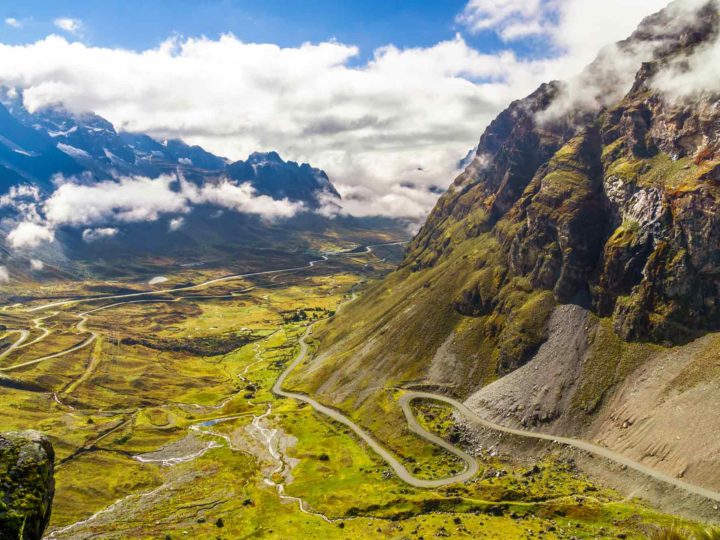
Ten-day Bolivia itinerary
An overview of this Bolivia itinerary for ten days:
- Days One to Three: La Paz
- Day Four: Bike the Death Road to Coroico
- Day Five: Coroico and overnight to Uyuni
- Days Six to Nine: Uyuni
- Days Nine to Ten: La Paz
A ten-day itinerary of Bolivia is enough to explore the heady heights of de-facto capital, La Paz, take your life into your own hands biking down Death Road and be awestruck by the perspective-bending landscapes of the Salar de Uyuni or Bolivian salt flats.
Day One: Arrive in La Paz
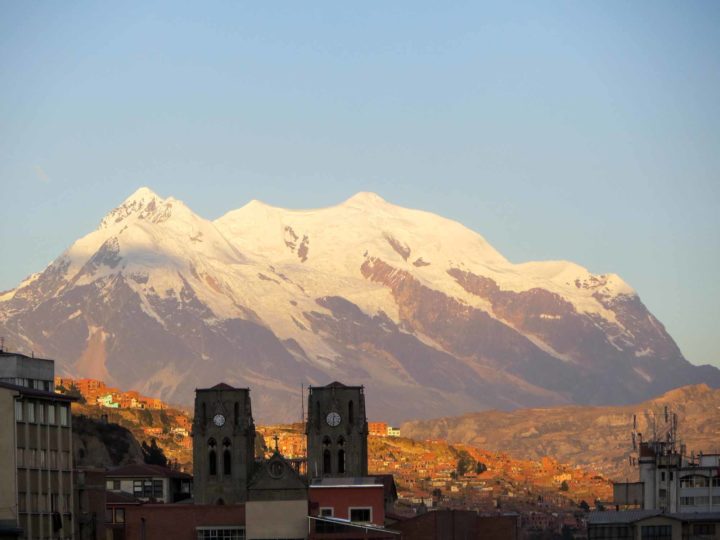
Your Bolivian adventure begins in La Paz , a marvelous city overlooked by the snow-capped peaks of the Cordillera Real.
Fly into El Alto International Airport and, to adjust to the altitude, take this first day carefully.
Use it to rest, relax, and soak in the sights of this incredible city from the windows of your taxi as you wind your way through the streets from the airport to your lodgings.
Where to stay in La Paz: If you’re looking for something luxurious, try Casa Grande ($178 USD double) in the Zona Sur (Southern Zone) neighborhood where you can start your morning with their fantastic breakfast buffet, relax in the pool, and enjoy a cocktail at the end of the day in their penthouse bar.
Where to stay in La Paz: One of my absolute favorite places to stay in the La Paz area is actually located a short distance outside of the city. It’s called Colibri Camping and Eco Lodge ($65 USD for double bed with private bath in a cabin) and if you want a comfortable place to stay separated from the city’s noise, this is the place for you.
Where to stay in La Paz on a budget: If casual hostels are more your style, try the Adventure Brew Hostel ($40 USD double) or The Nest Boutique Hostel ($37 USD double), both of which are located in the downtown area close to main tourist attractions like Calle Sagarnaga and the San Francisco Basilica.
Days Two to Three: Experience La Paz
La Paz is a Bolivian highlight and this beautiful and energetic city is where you can learn much about the country’s history, culture, and government.
Spend your days getting to grips with this mountain metropolis: stroll through the Plaza Murillo to see several of Bolivia’s government buildings, pick up an alpaca sweater at a tienda in Calle Sagarnaga, snack on a Bolivian salteña or cuñape , and soar over the city in the colorful teleférico cable cars.
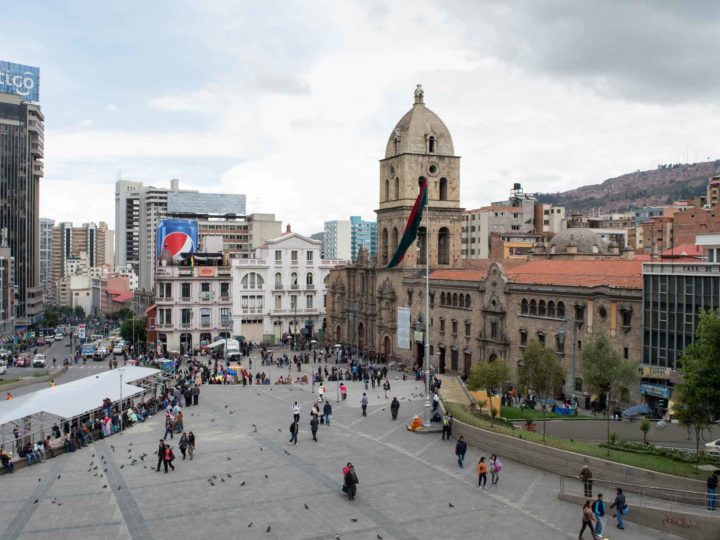
Get even more tips about unmissable things to do, places to eat, and sights to see in La Paz .
One of the top things to do in Bolivia is the famous Death Road , and the best way to experience it is by bicycle.
You should now be adjusted enough to the altitude to take on the challenge of downhill mountain biking down the “World’s Most Dangerous Road.”
Planning Your Trip to South America?
Save time, stress & money with a customized travel itinerary planned for you by a South America expert
What previous clients have said:
“You literally made my trip happen. I could not have done everything needed to pull off such an incredible trip and would have likely had to bail for lack of advance planning. Worldly Adventurer is the perfect trip planning service. Everything you need, nothing you don’t. Unbiased, responsive, and a great value. I wish they could plan all my vacations!”
There are many tour companies offering Death Road cycling tours, but I always recommend booking with Gravity Bolivia for their skillful guides and high-quality bikes and equipment.
They’ll give you time to stop, rest, snack, and take photos along the way.
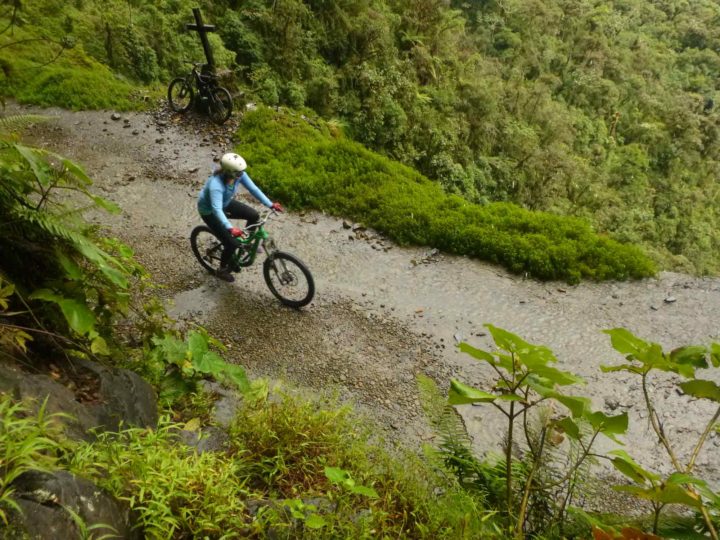
Your ride ends at the village of Yolosa, near Coroico where you can take a ride on a zipline over the jungle before visiting Senda Verde , where you’ll have lunch and meet some local wildlife who, having been rescued from illegal trafficking situations, call the Senda Verde refuge home.
Where to stay in Yolosa/Coroico: Senda Verde isn’t just a cool place to visit, it’s also a cool place to stay! They offer many ecolodge options to accommodate various group sizes. If you’ve ever dreamed of spending the night in a treehouse, look no further. You might even be able to spend the morning hanging out on your balcony with a monkey friend or two.
Where to stay in Yolosa/Coroico: If a rustic ecolodge isn’t your style, there are plenty of other options for accommodations in Coroico. Sol y Luna Ecolodge and Hotel El Viejo Molino are all decent options that offer great views over the valley.
Enjoy a relaxing morning in Coroico before a busy afternoon and evening of travel. Grab lunch before catching a minibus (three hours) back to La Paz from the town’s main plaza.
Give yourself some extra time to accommodate traffic and other potential travel delays.
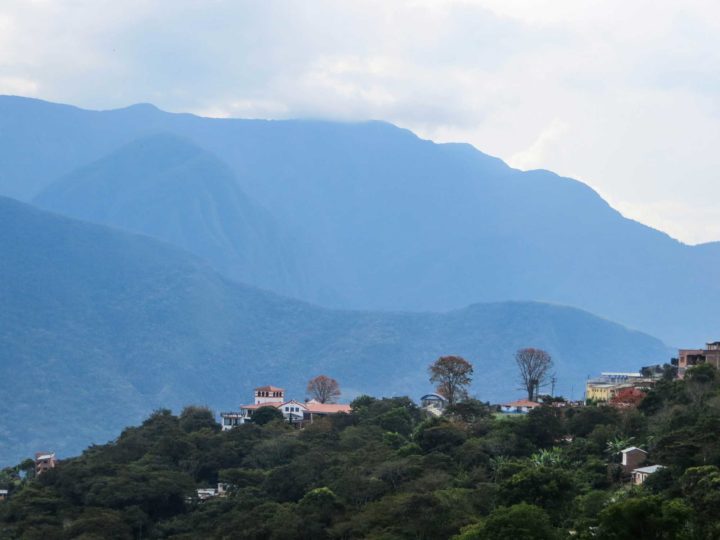
Your goal is to make it back to La Paz in time to have dinner in one of the city’s many restaurants before hopping on an overnight bus to Uyuni (eight hours) – one of the absolute must-see places in Bolivia.
A journey on a night bus is a key part of the Bolivian experience. Buy tickets online for a bus that gets you to Uyuni before 8:00 am tomorrow so that you are on time to meet your guides for your salt flats tour.
Days Six to Nine: Salar de Uyuni
When you wake up from your long night of travel, you’ll be in Uyuni , home to the world’s largest salt flat and a highlight of Bolivia.
You’ll be spending not one, but three days in the Uyuni area, exploring not just the salt flats, but all that the surrounding region has to offer.
The sights in and around Uyuni are otherworldly: spend a night in a hotel made of salt, wander among abandoned trains, catch a glimpse of vicuñas , flamingos, and other Bolivian wildlife, and marvel at the multi-coloured mineral lakes and geysers.
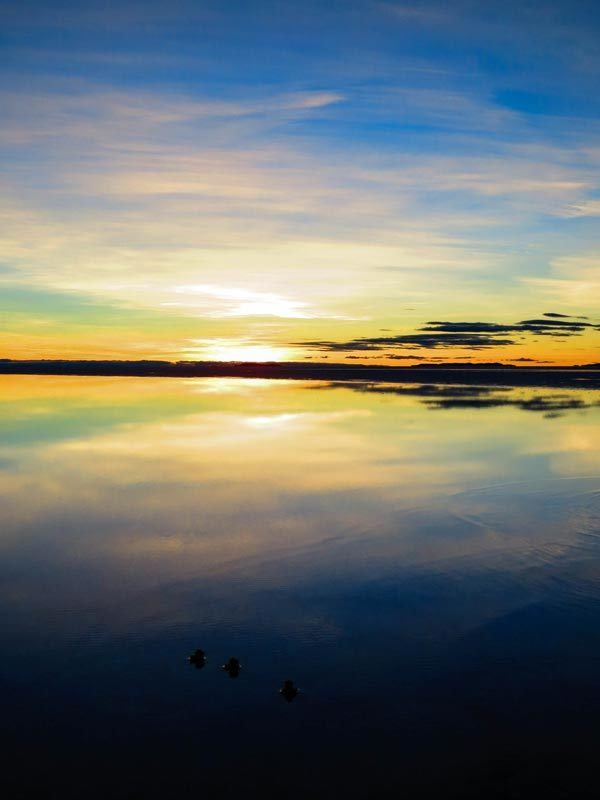
Tour companies in Uyuni offer three-day excursions; for detailed information on choosing a tour group, what you can expect to see and do while on a tour, and how to get to the Bolivia salt flats, read our guide to visiting El Salar de Uyuni and this article about seeing dawn break over El Salar de Uyuni .
Remember that the three-day, two-night tours do not include accommodations in Uyuni for the night following your tour, so book a room in town or at one of the salt hotels closer to the flats.
Or, you could always take another time-and-money-saving night bus back to La Paz
Day Nine: Head to La Paz
From Uyuni, head back to La Paz via bus or flight. Now is your chance to hit any of the La Paz attractions you missed during your first few days here.
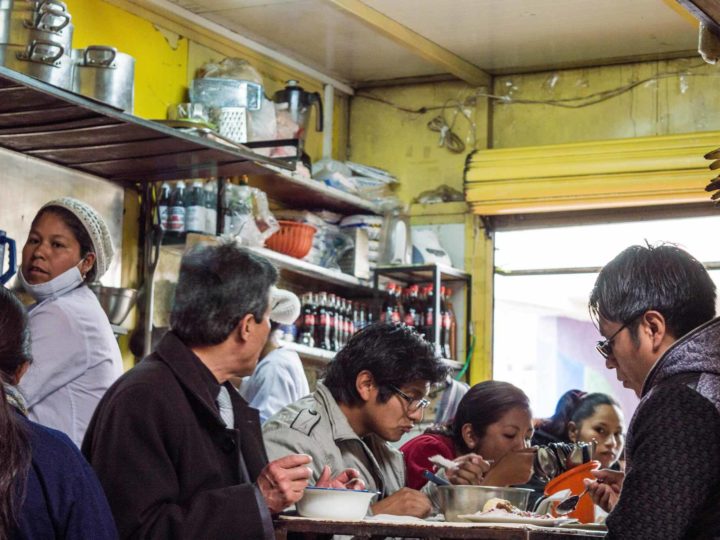
Options include taking a hike or even playing a round of golf, as well as diving into the local cuisine with a remarkably affordable fine-dining experience at Gustu .
Day Ten: Travel home
Alas, your ten-day trip has come to an end! Perhaps you can get one last glimpse of Mount Illimani from your airplane window as you fly away.
Two weeks in Bolivia itinerary
Overview of this 14-day Bolivia itinerary:
Days Ten to Twelve: Sucre
- Days Thirteen to Fourteen: La Paz
Days Ten to Twelve: Trek Huayna Potosí
- Days Twelve to Fourteen – La Paz
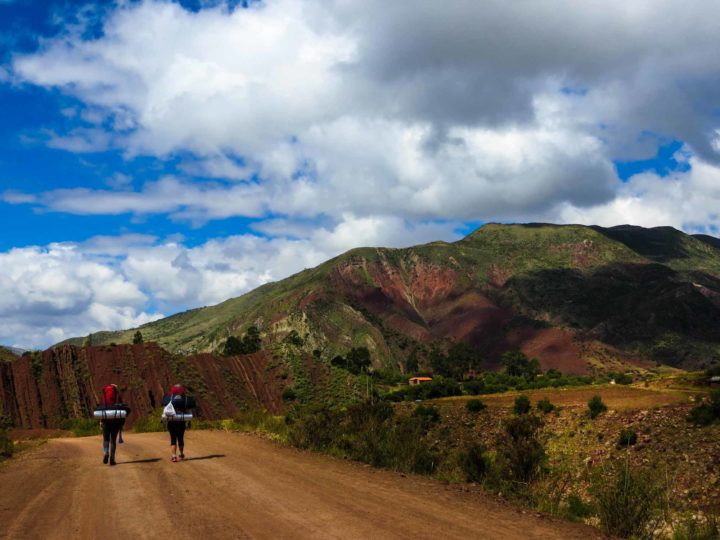
Want to extend your trip to a full two weeks? An extra few days in Bolivia will give you a chance to throw in plenty more things to see: either visit the striking, well-preserved colonial architecture of its capital city, Sucre, or a thrilling opportunity to summit a 6,000-metre peak.
OPTION 1 – Follow days one through eight of the ten-day itinerary above and then tack on a few days exploring Bolivia’s constitutional capital.
From Uyuni, travel overnight to Sucre by bus (8 hours). Sucre is technically the capital city of Bolivia, even though many of the government buildings reside in La Paz.
You can feel the history in this city as you walk streets lined by fine historic buildings that were constructed using indigenous slave labor following the arrival of the Spanish conquistadors.
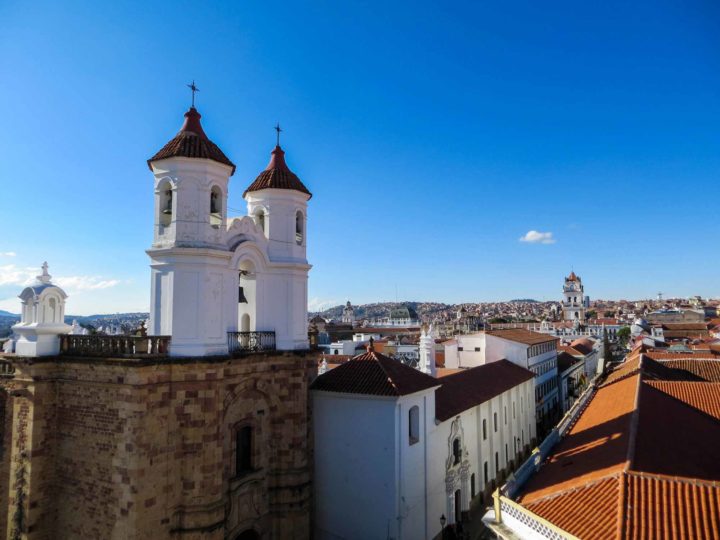
There are loads of things to see and do in Sucre , including visiting the Cal Orck’o wall which holds the world’s largest collection of dinosaur footprints!
Where to stay in Sucre: There are plenty of great options for accommodations in Sucre. Many of these hotels, like Mi Pueblo Samary ($120 USD double), Parador Santa Maria La Real ($129 USD double), and Hotel Independencia are located in renovated colonial buildings and authentically decorated to match the city’s historical architecture.
Days Thirteen to Fourteen: Final days in La Paz
Return to La Paz . Either take an overnight bus (12 hours), or, if this is a bit too long for you, fly from Sucre to La Paz instead (one hour).
Spend your last days in Bolivia in La Paz. If you ran out of time to see any attractions during your first few days, now is the time to make up for it!
On the final day, head back to El Alto to catch your flight home and enjoy your last glimpses of the sprawling city and snow-capped mountains.
OPTION 2 – Follow days one through nine of the ten-day itinerary above and then tack on a few days trekking one of Bolivia’s famous peaks!
Huayna Potosí and its 6,080-metre (19,974-foot) peak towers above La Paz’s skyline, and it is one of the first things most visitors notice when exiting El Alto International Airport’s doors.
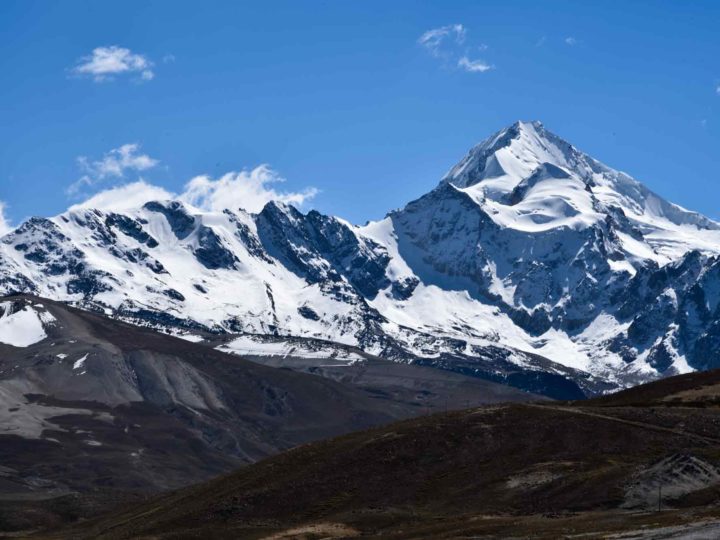
Even for beginner mountaineers, this mountain is possible to trek in just three days with a guided tour.
Many companies offer three-day, two-night excursions up the mountain, with the first day including an introductory course to mountaineering and using crampons and other ice climbing equipment.
If it’s on your bucket list to summit a 6,000-metre peak, Huayna Potosí might be the perfect mountain to tackle!
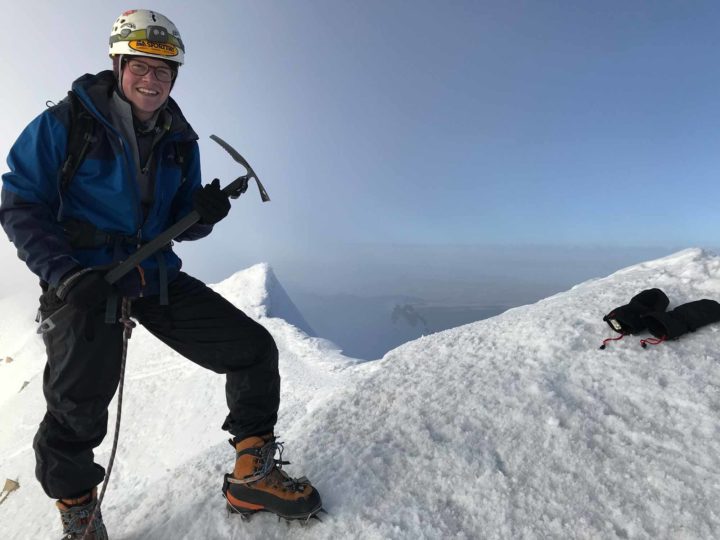
Days Thirteen and Fourteen: Relax and travel home
After your big trek, and exciting two-week trip, enjoy a day of rest and relaxation in La Paz before catching your flight home.
One-month Bolivia travel itinerary
An overview of a one-month Bolivia travel itinerary:
- Day Five: Coroico and Overnight to Uyuni
- Days Nine to Eleven : Sucre
- Day Twelve: Potosí
Days Thirteen to Sixteen: Santa Cruz
Days seventeen to eighteen: cochabamba, days nineteen to twenty-one: toro toro national park , days twenty-two to twenty-five: head to rurrenabaque, days twenty-six to twenty-nine: lake titicaca .
- Day Thirty: Fly home
Are you one of the lucky few who has an entire month for backpacking in Bolivia?
Check out this extended itinerary for Bolivia, where you’ll explore high-altitude La Paz and the otherworldly Salar de Uyuni before stopping in at the silver mines of historic Potosí.
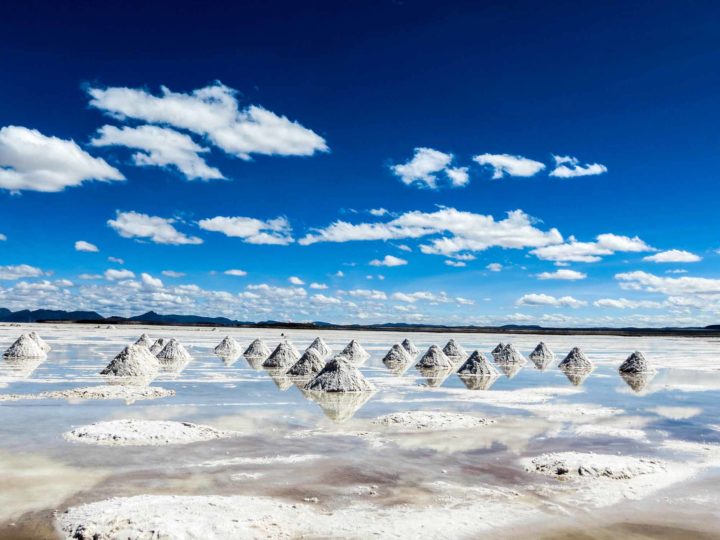
From there, you’ll tour some of Bolivia’s most diverse green spaces around Santa Cruz, Cochabamba and Rurrenabaque, before ending at the birthplace of the sun, the vast Lake Titicaca.
Start by following days one through eleven of the fourteen-day itinerary above and tack on another few weeks’ worth of Bolivian adventures!
Day Twelve: Potosí
After spending a few days in Sucre, check out another of Bolivia’s UNESCO World Heritage Sites, the city of Potosí (three hours).
Potosí was formerly the richest city in the world thanks to the Cerro Rico mine . It enriched the Spanish empire with silver and forced millions of indigenous people into slavery to work in the mines – with eight million people believed to have died in the inhumane conditions .
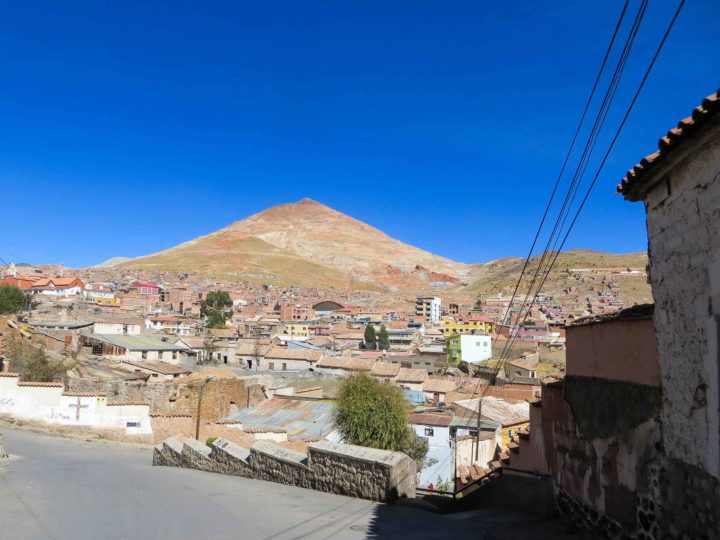
This still-working mine serves as a testament not just to Bolivia’s mineral wealth, but also, unfortunately, to the exploitative working conditions that many Bolivians deal with on a daily basis.
Guided tours through the mine led by former miners are available to visitors and a worthwhile look into the life of the local people – although be aware that you are putting yourself at risk by entering the mountain.
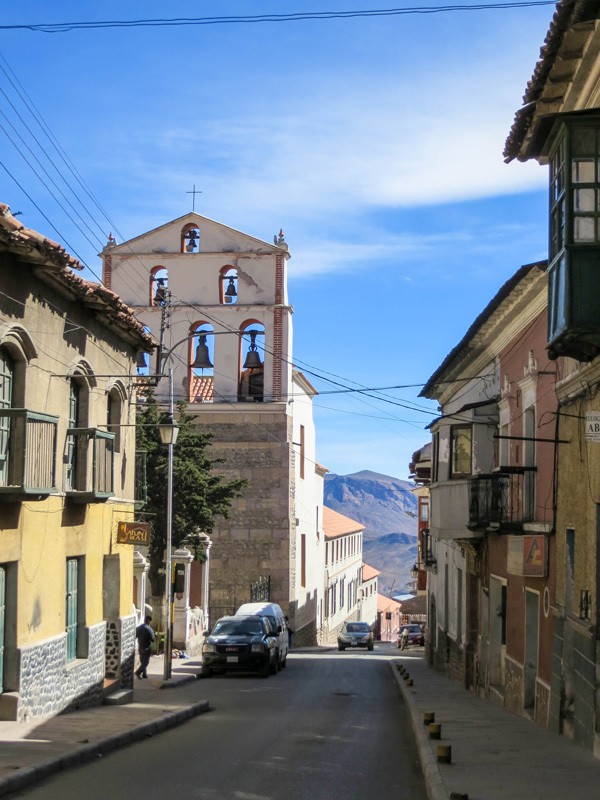
Another must-see place in Potosí is the Casa Nacional de la Moneda (the National Mint), whose museum covers the history of Potosí and its famous mine, while it’s worth just wandering the streets of the city, admiring the now crumbling grandeur of a city that has been abandoned to its fate.
If you choose to make your trip to Potosí in one day, you can return to Sucre on a late evening bus for the night.
Where to stay in Potosí: If you’d like to extend your time, there are several options for lodgings in Potosí such as hostels like Santa Monica ($69 USD double) or Colonial ($75 USD double).
From Potosí, head back to Sucre and onwards to Santa Cruz de la Sierra (13 hours by bus; 50 mins by flight), Bolivia’s largest city.
Santa Cruz is a highly commercial and modernized city compared to Sucre and La Paz. It also sits at a much lower altitude (only 400 m (1,300 ft) above sea level), meaning the temperature is warmer and the air more oxygen-rich.
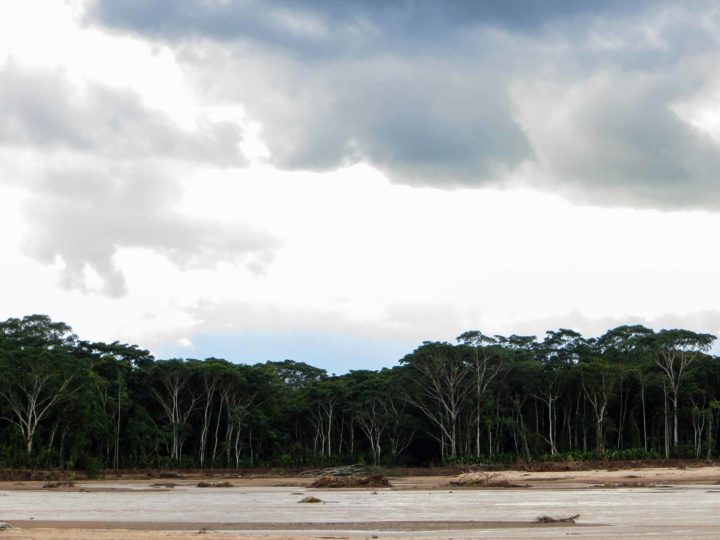
There are plenty of things to do in and around Santa Cruz, including visiting several of the nearby national parks. Amboró National Park is the closest to the city, and tour operators offer transportation to and from the park as well as guided tours to see the area’s diverse flora and fauna.
A good day trip option to experience a beautiful part of Amboró is the Jardin de las Delicias tour, which allows you to trek between several waterfalls, and cool off with a swim! Nick’s Adventure’s is one company offering Amboró tours, including the waterfall trek.
Another awesome adventure is to spend the day at the Lomas de Arena , where you can sandboard down a dune and keep an eye on the surrounding forest for wildlife – keep your eyes peeled for a sloth! Tour companies offering sand dune excursions include Nick’s Adventures and Ruta Verde .
If you want to spot some wildlife, but don’t feel like venturing too far outside the city, check out Biocentro Güembé . Güembé is an animal shelter for rescued exotic animals that are unable to be rehabilitated back to the wild.
Here, you can see monkeys, birds, butterflies, and other Bolivian wildlife, as well as relax and beat the heat in their many swimming pools. You can even stay on-site in one of their hotel rooms or cabins.
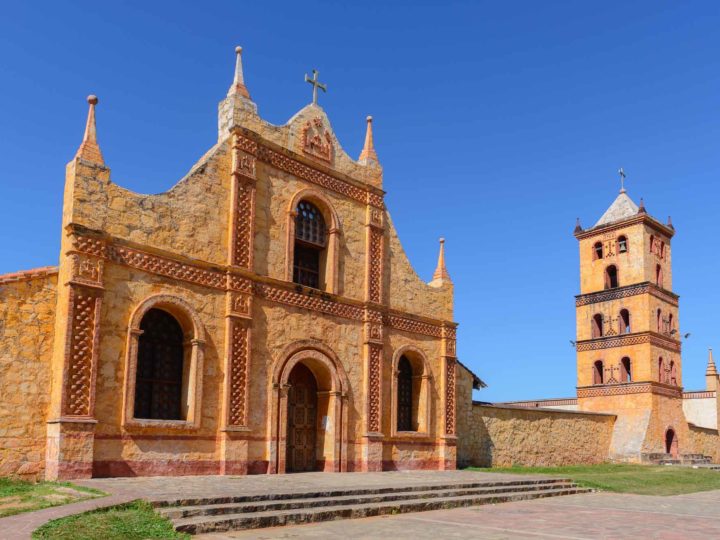
Another of Bolivia’s many UNESCO World Heritage Sites can be accessed easily from Santa Cruz. In the late 1600s and early 1700s, Jesuit missionaries built many missions throughout South America, and six of these remain standing in Bolivia and are among the country’s top tourist destinations.
There are several tours that offer multi-day trips to see all six of the missions, but to save time, I suggest booking a two-day tour through Nick’s Adventures or Ruta Verde which guides you to the San Javier and Concepcion missions.
If you’d like to see more than just two of the missions, you will simply have to alter your Santa Cruz schedule a bit to accommodate spending more than two days on a mission’s tour.
Where to stay in Santa Cruz: Aside from Güembé, the Nomad Hostel ($30 USD double) or Backpacker Suites Hostel ($22 USD double), both located near the city’s main square.
From Santa Cruz from your Jesuit, travel to the higher altitude city of Cochabamba (10 hours by bus; 45 mins by flight).
Cochabamba is home to La Cancha , South America’s largest open-air market, and the Cristo de la Concordia , the tallest Christ statue in the world (yes, a bit larger than the one in Rio de Janeiro).
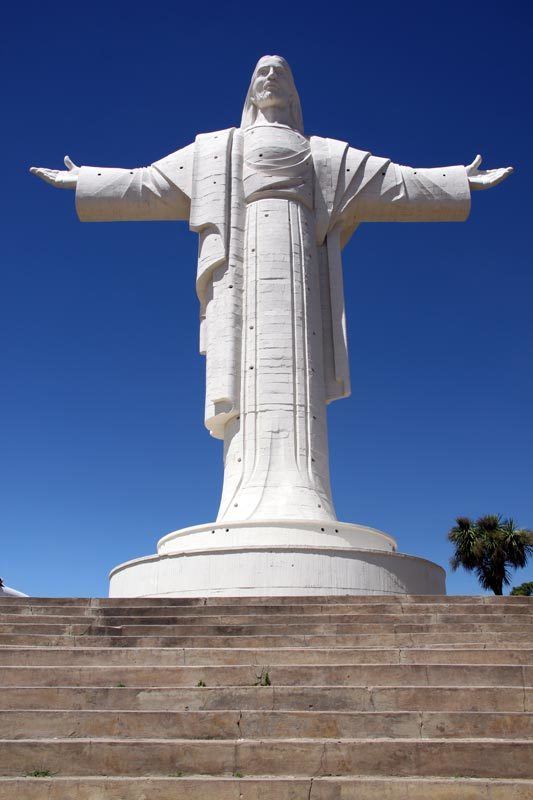
Take a cable car to the top of the Cerro San Pedro to see the statue up close and enjoy a great view overlooking the city.
Some Bolivians will tell you that Cochabamba is the country’s “gastronomic capital,” so be sure to try some favorite Bolivian dishes like silpancho or pique macho.
If you’re interested in a hike, Pico Tunari in nearby Tunari National Park is the tallest mountain in the area, with trekkers able to clamber up to 5,035 m (16,519 ft). There are several tour companies offering guided treks to the top, including El Mundo Verde .
Where to stay in Cochabamba: Cochabamba has a lot of nice hotel options for your stay, including Hotel Aranjuez ($85 USD double) and the fantastic Running Chaski ($38 USD double).
One of the coolest places to visit in Bolivia, Toro Toro National Park , can be accessed from Cochabamba. Bolivia is home to so many geological wonders, and Toro Toro is the place to see several of them.
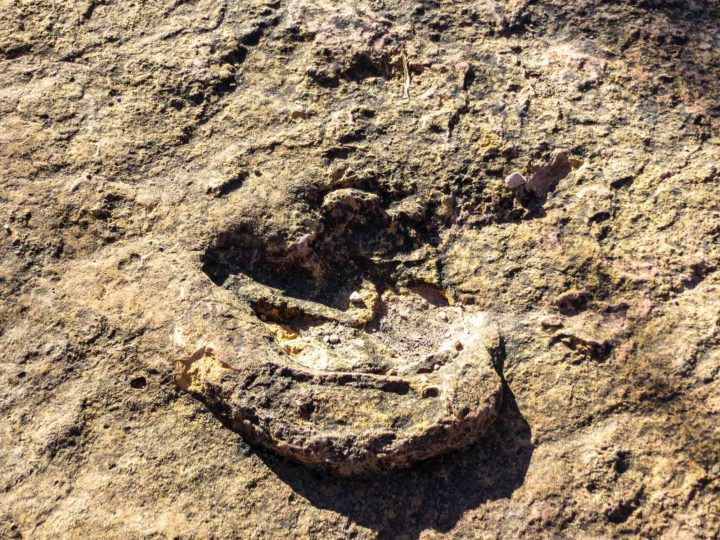
Go caving, hike through a canyon surrounded by red-fronted macaws, and observe ancient cave paintings, fossils, and dinosaur footprints.
Several companies, including Ruta Verde and Kanoo , offer three-day, two-night tours of the park.
Day 22 is a heavy travel day as you return from Cochabamba, back to La Paz, and on to Rurrenabaque .
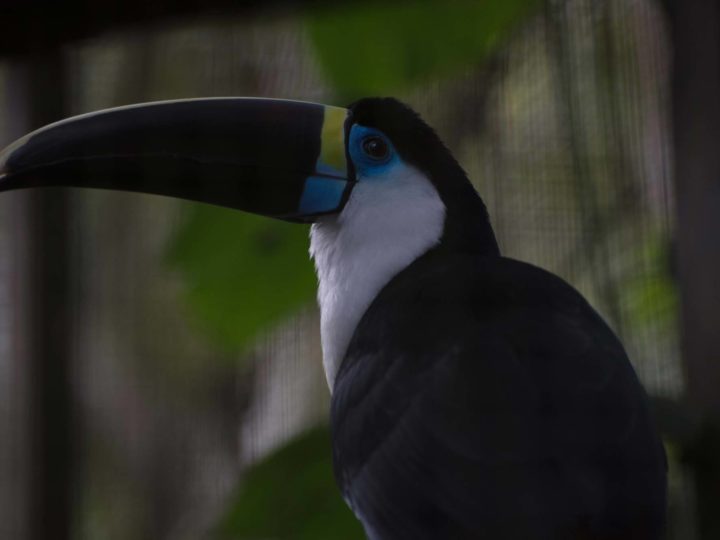
All of this can be done via bus (eight hours from Cochabamba to La Paz, and then 12 hours from the Villa Fatima bus station in La Paz to Rurrenabaque), via plane (45 minutes from Cochabamba to La Paz, 40 minutes from La Paz to Rurrenabaque), or via a combination of the two.
Rurrenabaque is a small town in the jungle region of Bolivia that is the gateway to Madidi National Park – which is one of the most diverse places on the planet and high on the list of underrated Bolivian highlights.
A guided trip through the park is a must for nature lovers. Read our guide to Madidi National Park for advice about which tour companies to use and what to see and do in Madidi.
Several tour operators in Rurrenabaque offer three-day pampas tours of the Beni River and surrounding wetlands area where you can see pink Bolivian dolphins, caimans, and anacondas.
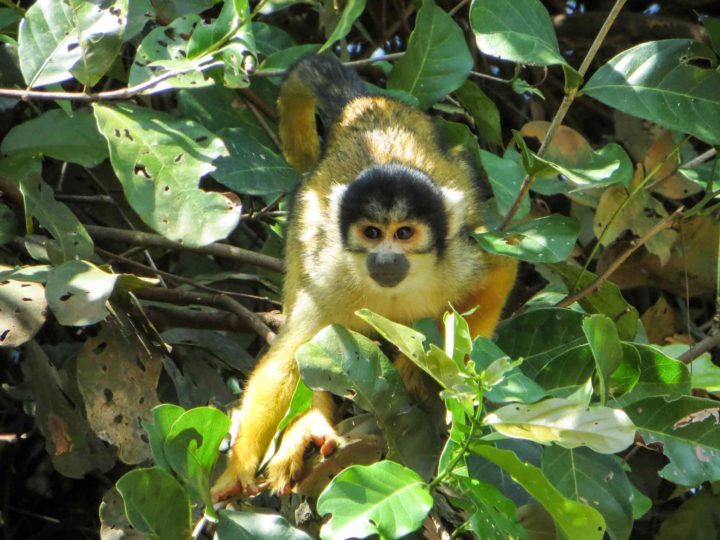
It’s also possible to do combination tours of Madidi and the pampas spanning several days.
After your jungle adventure, it’s time to head back to higher altitudes and check out another of Bolivia’s most unmissable tourist destinations: Lake Titicaca .
To get to Lake Titicaca from La Paz, catch a bus in the Cementerioarea headed to Copacabana (four hours).
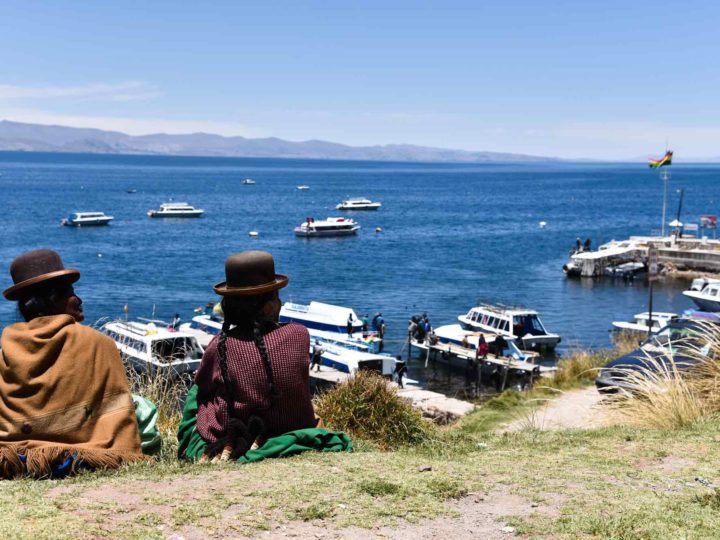
Copacabana is a peaceful town overlooking the world’s highest navigable lake (and South America’s largest lake ), sometimes considered to be the birthplace of the Inca.
From Copacabana, take day trips via lake ferries to nearby floating islands for a meal of fried trucha or lake trout, to the Isla del Sol where you can hike the Ruta Sagrada Inca trail across the islands ridge and see the Chinkana ruins, or the Isla de la Luna which has a set of ruins of its own.
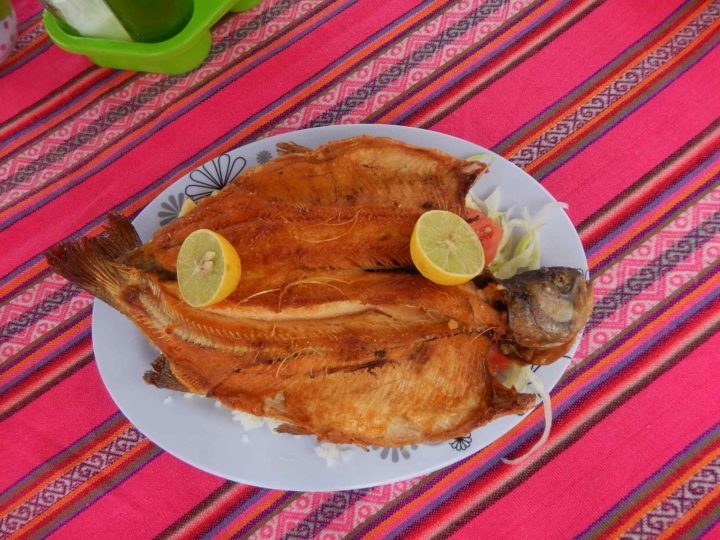
A hike along Isla del Sol’s Inca trail is a fantastic way to spend a day at Lake Titicaca.
Just be sure to take the earliest ferry to the island’s northern village, Challa Pampa, and walk south to the southern village of Yumani in time to catch the last ferry back to Copacabana at 4:30 pm.
On Day 29, catch a bus from the main plaza of Cochabamba to make the four-hour drive back to La Paz.
No need to purchase tickets ahead of time for this trip, as there are always plenty of buses lined up waiting to fill with passengers before heading out.
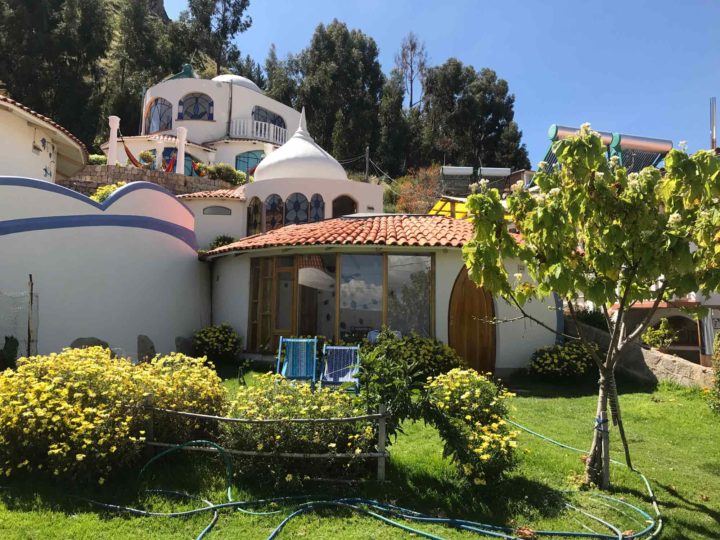
Where to stay in Copacabana: My all-time favorite place to stay in Copacabana is Hotel La Cupula ($39 USD double). With its clean and cozy rooms, fantastic views of the lake, delicious on-site restaurant, and yard filled with hammocks, it is the perfect place to relax after a day or exploring the area.
Day Thirty – Fly home
Wow! What a month! I’m sure your flight home will be filled with much-needed naps and sweet dreams of your incredible Bolivian adventure.
Bolivia Travel Guide [2024] – Everything to Know
![Bolivia Travel Guide [2024] – Everything to Know 1 la+paz+bolivia+mountains+south+america.jpeg](https://www.onmycanvas.com/wp-content/uploads/2019/01/lapazboliviamountainssouthamerica.jpeg)
Covid-Related Travel Update Jan 2024: Bolivia is now open to international travelers. As far as I have researched, Bolivia doesn’t seem to have any travel restrictions. Please do consult your local Bolivian embassy for precise information at the time of travel.
When I think of Bolivia, I remember stout, brick-red mountains. Women adorning traditional Bolivian clothes mending potatoes in fluorescent open fields. Bolivian men with wrinkled faces driving taxi up the steep streets and roads.
Potato and cheese empanadas being sold in kiosks on the streets in Bolivia. Bolivian soaps running on the television in local food courts.
People marching against the democratic government and Chile. Golden sunshine beaming in through the blue sky.
Enormous graffitis watching us from the walls of the big city of La Paz. The charismatic Uyuni salt flats and the blue lagoons sprinkled with pink flamingoes spread in the midst of the driest desert of the world. Tiny villages bustling with international tourists who went there looking for a simpler life from around the world.
The gorgeous high lake Titicaca where the indigenous Bolivian people first established themselves but now only a couple of thousand Bolivians live on the legendary islands on the lake. Sky trolleys flying people from their homes to run their chores in the administrative capital of La Paz. And the clingy high altitude that never leaves you oxygenated while you are traveling in Bolivia.
When I visited Bolivia from Peru , a year and a half ago, I didn’t know what to expect. Though I had been backpacking South America alone (Peru and Chile) by that time for around 7–8 months, I had understood that the continent was prepared to surprise me every day. I am sure that South America amazed the travelers from developed countries, such as the US, Canada, Europe, UK, and Australia, much more than it could ever surprise me; Not because I was half-Latino and half-Indian, though that would have been great but don’t tell my parents, but because I am used to the nuisances and problems of developing countries. And though the Bolivians have tried many governments, Bolivia has been one of the poorest and politically unstable states since its independence in 1825.
There was an undercurrent of a throttled economy that was too strong to ignore. The country’s finance runs mostly on agriculture, tourism, mining, oil, and gas. Bolivian people have to work hard to make a living which they mostly did by working in fields, cooking and selling foods in restaurants, running some part of the tourism industry, and the rest worked in mining industries, or with oil and gas corporations.
Due to the lack of jobs, you will see many Bolivians strolling around the central plaza or the square during the day and in the evenings. There was no London or New York or Mumbai like rush amongst Bolivians, except maybe in La Paz, and even there the speed of a Bolivian man or woman was one-tenth of a regular London worker speeding to the tube to get the earliest one and save 2–3 minutes.
I love the idea of a slow pace, but it would have been nicer if it wasn’t due to the lack of opportunities.
After traveling in Bolivia for about a month, I feel that this country is unique. I have mentioned some interesting facts about Bolivia above that make the country distinctive, but mainly I call Bolivia special as this country is an intriguing blend of raw nature, that is mostly undisturbed as not many people still visit Bolivia, and tough citizens who have made mountains their home and climb vertical streets as soon as they get out of the comfort of their places.
I loved my time in Bolivia. Let me take you through this Bolivia travel guide, and you will understand why, if I haven’t made it clear enough, yet.
Also Read: Best Experiences from my nine-months-long solo South-America Trip
What does this Bolivia travel guide contain?
Where is bolivia, how is the landscape and geography of bolivia.
- How to handle the altitude in Bolivia? And how the altitude could be related to cocaine consumption and production?
Is it safe to travel to Bolivia?
- History of Bolivia.
What type of government does Bolivia have?
What is the population of bolivia, what language is spoken in bolivia, how are the bolivian people, what is the best time to visit bolivia.
- El Salar de Uyuni, or Salt Flats Uyuni and Uyuni
- Copacabana and Isla del Sol
- Parque Nacional Toro-Toro
How to get a Bolivian tourist visa?
How to travel to bolivia, how to travel within bolivia, is bolivia expensive on a traveler’s budget, how should you carry money on your bolivia travel, what to pack for bolivia what to wear in bolivia, do you need a yellow fever vaccination for bolivia, how is bolivian food.
Bolivia is a landlocked country located in the center of the South-American continent where it shares borders with Peru, Brazil, Paraguay, and Chile, clockwise in that order. The country shares the Atacama desert with Chile and the highest navigable lake in the world, Lake Titicaca, with Peru.
Bolivian geography ranges from the Atacama desert to the high altiplano or the highlands and hills of the Andes mountains to the Amazon basin, which the country shares with other South-American countries.
I found the Bolivian landscape to be pretty surreal. The capital La Paz, one of the three big cities in Bolivia, is situated on the top of the Altiplano Andes, and you can see the Mt. Illimani in the background when the weather is clear. One day I was in the capital staring at a graffiti while high rainbow-colored mountains surrounded me from all directions, and Bolivians went about their days in sky trolleys as if everything was normal. Then the next day, I was wandering in quaint villages banked by an azure lake where life was much slower, and island towns where hippies roamed around selling handmade silver jewelry and bead bracelets.
I didn’t visit the Amazon in Bolivia, for I had already been to the Peruvian Amazon . But the landscape is flat there. Otherwise while traveling in Bolivia, you will find yourself struggling with its high altitude. So eat a lot and think of the roads as treadmills with an incline.
Suggested Read: Best things to do in Peru – With some of my secret places in Peru
How to handle the altitude in Bolivia? How the altitude could be related to cocaine consumption and production?
When I was researching the production of cocaine in Bolivia for this article, the first link that Google gave me was of an online seller of Bolivian cocaine.
Due to my non-existent curiosity in researching a country before I go there, I didn’t know that Bolivia would be so high (no pun intended). I have had a fair share of experience with the high altitude in Peru, but in Bolivia, even the densely inhabited cities could throw you out of your energy irrespective of the number of banana shakes you had with your breakfast. I felt I was trekking throughout, except when I was in the eastern part of Bolivia, that is Santa Cruz de la Sierra and Samaipata .
How do people deal with the altitude? Bolivians chew raw leaves of coca, a cash crop, and drink coca tea and ask you to do the same. For the Bolivian people, the coca leaves are so important to relieve fatigue and enhance physical stamina, that the president Evo Morales chewed the leaves at a UN meeting to get their domestic consumption legalized. He said how could I have eaten them if they were drugs, and the UN agreed.
The country is the third-largest grower of coca leaves after Peru and Colombia and sells a high amount of those coca leaves to Peru, who then processes them and sells them to Brazil for producing cocaine.
There is an illegal underground cocaine bar in La Paz , and many travelers I met had been there. I don’t feel comfortable visiting such places for I don’t have any interest in cocaine. As an observer and a writer, I would have liked to go, but then the risks were too many. You just ask a taxi, and the driver will bring you to the bar.
All harms aside, drinking coca tea and chewing coca leaves are part of the culture. So when you ask at your hotel or a tour guide while going dizzy, they will give you a bag of those leaves. You can also buy them in the local market.
For your information and use, just stick to coca leaves. And remember that cocaine is illegal in Bolivia, and up to 50 grams of cocaine is decriminalized but still illegal. In your first days in the altitude, take it easy, eat and sleep well, and let your body adjust to the height.
Now let me deal head-on with the question that all travelers ponder over when they think about going to Bolivia.
I felt pretty safe in Bolivia.
During the one month that I was backpacking Bolivia, I had no incident of pickpocketing or ATM kidnapping or anything that you might find on the internet. Neither did any of my travel friends faced any safety threat.
Of course, we followed the usual protocols that travelers always take care of in a foreign land. Don’t venture out late at night alone, keep your wallets and phone safely, don’t ask for directions from strangers who could have easily been part of mafia gangs, be vigilant if you go out to drink at night, and stay away from people who might cause trouble or try to sell drugs, which happen a lot in every country these days, even in India.
You know, common sense.
I heard pickpocketing stories about El Alto though. So if you go there, keep your hands in your pockets while moving around or use a money pouch/fanny pack. I bought one from San Pedro, Chile and used it a few times in Bolivia.
I also heard a lot of traveler traveling in Bolivia that La Paz taxi drivers were notorious for taking the tourist to an ATM at gunpoint and then asking her to withdraw cash. But while traveling Bolivia I didn’t worry about the taxi drivers, not because I am a Ninja fighter, but I hadn’t read that the drivers were nasty. I met some of the nicest taxi drivers who brought me where I was supposed to go after driving around the sinewy lanes for a dog year’s time and in spite of the directions that sometimes read straight out of Harry Potter books. Another time the driver helped me find the embassy of India which was hidden in a residential apartment without any sign on the front door. In yet another case, a driver called my hostel at five in the morning to have us two traveler girls get inside while we were freezing outside the hostel which was neither picking up the phone nor was opening their gate.
Having said that, I was recently watching news of Delhi where an Uber taxi driver stopped his car on an empty highway, called his friends who threatened the family he was driving to give their valuables at gunpoint, and ran away. So maybe I was lucky on my Bolivia trip, or on most of my travels.
Don’t take the chance and ask your hotel to call for a registered taxi which they trust and that can be tracked.
I only heard about one incident of fraud when my Dutch friend booked a ticket to Brazil from Santa Cruz, boarded the bus, but when he arrived at the border, the bus driver told him that he had to get down. My friend said that he had booked a ticket until Pantanal, but the driver said that he was only booked until the border, and they couldn’t help him. So he was at the Bolivia-Brazil border, with almost zero bolivianos, no phone, and no easy commute to any humanity closeby.
Long story short, he arrived at Pantanal forty-three hours later with hunger hitting his stomach hard and fatigue shutting down his eyes.
But we have to be careful with bus companies and tour bookings always. Regular buses are notorious in Bolivia for petty thefts and delayed runs, so many people would advise you to take tourist buses such as Todo Turismo. I didn’t know that the regular buses might be dangerous, so I just took whatever bus fit in my time and budget. Once I had to make a trip back from San Pedro, Chile, to Uyuni to La Paz back to back in buses, and then from La Paz to Chile again as fast as I could (due to a visa fiasco whose tragic story is too long for me to rant here), I just went on with the bus that was ready to take me.
The overnight notorious bus from Uyuni to La Paz and vice-versa turned out to be safe, and we had no incidents. The overnight buses rarely stop, giving you plenty of time to sleep and relax. Buy tickets for the “bus cama” or sleeping bed type of seat type of buses in which you can sleep. The cheaper options might not be that comfortable.
Also remember, if a bus company promises to take you where you have asked them to, always make sure that you have a ticket to the destination, and not to a place that comes before, take a photo of your ticket, also do keep some local currency for emergencies, and try to board buses that arrive during day time.
Don’t carry your valuables when you go out and take soft copies of your visa and passport and not the actual ones.
The internet says a lot of bad things about Bolivia, which is expected since Bolivia is a poor South-American country. But Bolivia is safe to travel if you take the regular precautions.
Also Read: The day I was mugged in Santiago, Chile
Now as we have moved on from the biggest concern of safety, let us talk about other things.
History of Bolivia
I wouldn’t have talked about Bolivian history if I didn’t find an excellent education website that explains the history in laymen’s terms.
Let us see if I will be able to make the most boring subject, mainly because of a monotonous teacher, into an interesting one.
After the fall of the mighty Tiwanaku empire who was located in the South of Lake Titicaca thousands of years ago, Incas invaded Bolivia in the 15th century and made it their home. But soon Spanish conquistadores, who overshadowed South America like an egoistic dark cloud who didn’t want to move, entered Bolivia and took control in 1525. Bolivians were ruled by the Spanish for around 300 years when under the guidance of Simon Bolivar, on whom the country is named after, overthrew the Spanish in 1809 to declare independence.
Even travelers need to read about a country’s history and government for when you know a state’s political philosophy, you understand a lot more about the country, and your expectations are also in place.
So, on I go.
Bolivia has had an unstable political condition for almost two centuries now. After independence, Bolivia lost many wars with her neighbors, and one of the most significant ones was against Chile in which Bolivia lost the Pacific coast and became land-locked. Though the war happened more than a hundred years ago, Bolivian citizens hold a long march against Chile on March 23 every year, and I witnessed the 2017th one in La Paz.
But apart from the wars, the country has had internal government issues and irrespective of the regime the people believed in, whether democratic or military, the political situation and the economy haven’t improved. Currently, the country has a presidential-represented democratic republic headed by Evo Morales since 2006.
Due to the unstable politics, Bolivia is constantly hit by too many strikes.
Update 2020: Evo Morales was forced to step down as the president and is now exiled in Argentina. The country is temporarily under control of the right-wing Jeanine Anez and the military.
Update October 2020: Current political information about La Paz: Bolivia’s year-long interregnum has finally ended , and Luis Acre formed the government in October 2020. The political unrests and the street protests should have ended now.
Don’t you want to know how many Bolivians you can expect to be surrounded by while walking on a road?
In 2018, the population was almost eleven(11) mn. Though India is only three times the size of Bolivia, our population is 122 times that of the Bolivian population.
An emphasis on the population to size skewness is essential because Latinos asked me about India’s population almost a hundred times, and when they heard that we are more than a billion, as if they didn’t know it already, they were shocked beyond measures.
Spanish, Quechua, and Aymara are the three official languages of Bolivia. Not all the people can speak all the three, but about one-third of people speak Spanish. And most of the people who were born and brought up in Bolivia speak at least one of the native languages, which is Quechua and Aymara. Even though I spoke fluent Spanish by the time I was backpacking Bolivia, I understood neither a word of Quechua nor of Aymara. You are free to try your luck.
Bolivia is a favorite of travelers to learn Spanish. Many of my friends went to Sucre to learn in a Spanish school. They took one-on-one classes and felt happy about the pace of the course and the ability of their teachers.
Also Read: Common Spanish phrases every traveler needs to know and my 25 tested and successful tips on teaching yourself a new language
Many travelers who had visited Bolivia told me that the Bolivian people are rude. I disagree. Though Bolivians are not so forthcoming as some other Latin American people, I will not call them rude. Service was always with a straight face, and I blame that to the lack of hospitality training.
As compared to the Chileans and Peruvians, Bolivian people asked me fewer questions about India. Not only the Bolivians were less excited about the tourists, overall, I even felt a hint of resentment, on some incidents. Though Bolivian’s cold behavior made me conscious at that moment, I don’t blame them in hindsight. For a country with such dire financial and political problems, citizens become frustrated.
Bolivian families pray to nature gods, which is much like many other Latin American countries and India. Women wear fluffy skirts, braid their hair in long buns hastened at the end with ribbons, and put on a bowler hat. These traditionally-dressed women are known as Cholitas, and their dressing style is trending now. Of course, when the president would celebrate his win in traditional attire, then that dress code is bound to get more eyeballs.
Traditional Bolivian men wear cotton trousers, bright ponchos, and woolen caps called chullas .
Identifying Bolivians wasn’t easy as some of them had features that are peculiar to people who live in the mountains, such as the people from the Himalayan belt in India, but a lot of Bolivian men and women resembled Europeans, too. And why wouldn’t they? Europeans constitute twelve(12) percent of the Bolivian population, and thirty percent(30) of the Bolivians are of a mixed race. Many Dutch hostel owners who have married Bolivian men and women and have settled in Samaipata(a Bolivian village) told me that they traveled to Bolivia years ago and could never leave.
Aymara and Quechua, the indigenous people, constitutes about forty-seven percent of the population.
Also Read: 13 Chilean cultural conventions that will surprise you
Now let us answer your specific questions about traveling in Bolivia.
I was traveling in Bolivia in March and April, which is when the summer ends as the Bolivian sun is the strongest from November to March. Though the country receives rainfall during summers, I don’t remember being thrashed by the rains even once. Now the scantiness of rain might mean that it was a dry summer or that I am getting more forgetful with age.
May to September are the coldest and driest months. And then comes along spring when it is not too cold, with a little rainfall, and more sunshine and this gay weather lasts until November.
Spring and early summer would be the best time to visit Bolivia for the pleasant climate, golden sunshine, and less rain.
What are the best places to visit in Bolivia?
During the one month that I traveled in Bolivia, I saw some gorgeous landscapes of Bolivia. Let me summarize those places here, for I have detailed posts coming up on most of them soon. Stay tuned.
1. El Salar de Uyuni, or Salt Flats Uyuni and Uyuni
The Salt Flats are the favorite of travelers and a quintessential place to experience when you travel to Bolivia. And why shouldn’t they be?
Uyuni salt flats are a vast, planar area that is covered with endless salt hexagons that fit together like a crossword puzzle. As per an Aymara legend, a love triangle between the surrounding mountains Kusina, Kusku, and Tunupa caused the formation of the salar. Kusku betrayed his wife Tunupa for the love of Kusina, and the sad Tunupa cried so much that she filled the area between the mountains with her tears.
And the scientific version narrates that the salt flats were formed when the growling Andean sun evaporated the water that had collected from the surrounding Andean peaks in the plane. Now the area which was a lake once holds ten(10) billion tonnes of salt that contains enormous lithium deposits underneath.
When it rains, the water collects to form natural reflective surface on the salt planes. Hence the salt flats are famous for reflection photographs, and also for trick photography as the salt is so ubiquitous that you can pretend anything to be anywhere.
A lot of travelers believe that they should book a tour to the salt flats before going to Uyuni. Though you might think that pre-booking the tour is essential, I suggest you go to the town of Uyuni and book the tour there. Most of the agencies always have availability, and they club the tourists together if they don’t have exactly 6 people, which is the average jeep size, so there is no point being particular about the company.
I arrived in Uyuni a night before the tour. In the morning, we went to many tour groups near the plaza and asked for the prices and availability. The company we traveled with had 4 Columbian women and were happy to add two of us to maximize the potential of the jeep and thus their profits. But the women resented us throughout the trip, and even smiling at us seem to have cost them a few flamingoes.
The town Uyuni doesn’t have much to see so you can either skip it or if you are forced to spend a day there get a hotel room, eat pizza, drink beer, and watch Netflix, which is what I did.
Where to stay — Many small hotels and hostels are located around the Uyuni plaza, and you can get a private or shared room for cheap. The accommodations are basic so don’t expect much. Or book a hotel with good ratings on booking.com which is what I do if I want to be sure. The tour provides you accommodation for three nights in the salt flats, and one of those nights you will stay at a hotel which is made out of salt, completely.
What to eat — All kinds of multi-cuisine restaurants sit on Uyuni’s main plaza or the central square. Hop onto any one of these places and try the versatile menu. I spent a day eating pizza and drinking juice at one of those eateries, and it even served hookah though I wasn’t in the mood to fill my lungs with flavored smoke. And if you walk away from the square, you will find small eating joints that serve local people. You will get delicious food on the tour, so for three days, you will be the king.
Also Read: My guide to the Salt Flats Tour in Uyuni, Bolivia
2. Copacabana and Isla del Sol
Copacabana is set on the shores of the pristine Lake Titicaca, which is one of the highest, largest, and deepest lakes in the world and looks like an ocean. Though the Bolivians are depressed about losing the war for the Pacific coast against Chile, this majestic water body should bring some peace to the Bolivians.
I went to Copacabana from Cusco with another friend and spent a few days there. The small town felt very cozy even though it was flooded with tourists who wanted to go to Isla del Sol, a popular island on the lake. Copacabana had the regular tourist vibe, a small market with souvenir shops and fruit stands, a lane of restaurants that runs like a red carpet to the bank of the lake, lakeside food stalls run by the cholitas who prepare fresh fish in many mouthwatering forms, multiple bus agencies, and a green countryside which is good for hiking. So while you are there pick a hill and go to the summit. I assure you brilliant views.
Isla del Sol is a quaint island on the Lake Titicaca. The Incas believed that the sun god was born on the lush island, which is surrounded by crystal clear water and is inhabited by indigenous people. We even saw beautiful hairy donkeys at the shore of the island, and I wouldn’t say that I didn’t fall in love, almost, with one of those solemn animals.
So go to the peaceful island, dive deep into the beliefs of Incas, hike around in nature, and watch the molten sun go down the gorgeous sapphire lake with a cup of mate in your hands.
Where to stay in Copacabana — We stayed at Casa del Sol which was a few lanes away from the center but offered spacious rooms with private bathrooms, a kitchen, an open sunlit courtyard, and the company of a furry dog. I highly recommend this place for its friendly owners and the comfortable stay.
Where to stay in Isla Del Sol — Take a boat from Copacabana to the South of the Isla del Sol. As you get off the boat, the locals will demand tourist tax to visit the island. Once you have paid them, you will meet a row of homestay owners who want to take you to their homes and rent you a room with a shared or private toilet at a budget price. We stayed at a small house with basic facilities near the shore. And when we took a boat from the Yumani in the South to go to Ch’allapampa in the North, we found a simple hotel in the hills by walking up the stairs.
What to eat — In Copacabana, I bought fresh vegetables and quinoa and cooked myriad meals which were a hit in the hostel. When I was feeling too fancy to cook or wanted to taste the local preparations, I walked to the lake and ate fish at one of the lady’s stall. In Isla del Sol, we ate at local restaurants, but I didn’t like much of the food that I ate there, and service was slower than the rest of Bolivia, which isn’t famous for fast service anyhow.
Important Note — The island is undergoing some conflict regarding revenue and free connectivity between the North and the South, and tourists can only go to the South for the boats are not allowed to go to the North. So visit the South but don’t be disappointed if you can’t hike to the North. And please let me know if you go there and find that the conflict has resolved.
If you plan to visit Copacabana, read my story of the town and the things to do in Copacabana Bolivia.
3. Santa Cruz
Santa Cruz is in eastern Bolivia and out of the typical backpacking route. Santa Cruz is by and for the rich of Bolivia, and a lot of industries are based out of there which explains the presence of riches.
Though I didn’t find the town as exciting as the other parts of Bolivia, I didn’t dislike it. It has three national parks in its vicinity, the center of South America is located here, the city is the gateway to Brazil, a botanical gardens with the options of seeing wildlife and the dunes of Parque Lomas de Arena are both an hour away, the central plaza adorns a cathedral which you can climb to the top of to get a good view and spot hawks atop antennas and great options for local and international food in restaurants and on streets.
I am also guilty of relaxing in the green park in front of my hostel, watching men play football, which is a craze in Bolivia, or sitting at the plaza and drinking coffee while the local life went on.
Even though the city is crowded with malls, which is unlike all the other Bolivian places we went to, it is an excellent place to slow down. And when I got bored of Santa Cruz, I went to Samaipata, a village which is a few hours away from Santa Cruz by bus.
Where to stay — I stayed at the comfortable Jodanga hostel and paid almost 80 bolivianos or 12 USD for a bed in an 8-bed mixed dormitory. The hostel is always busy with travelers. They have a big swimming pool, a pool table, a kitchen, a bar, a common room with television, multiple shared bathrooms, and is walkable from the central plaza. You will have a comfortable and fun stay here.
What to eat — when you go around the city, you will find a lot of street vendors and local markets to eat at. While walking back to the hostel one day, I stumbled into two brothers from the middle east who were selling delicious kebabs on the road. We chatted, and I ate a chicken kebab roll there.
Then another day we found a tiny restaurant that sold grilled black-pepper chicken which was so juicy that when I think of it, I curse myself for quitting non-vegetarian food. I even went all in and ate at the Indian restaurant called Taj Mahal ( the internet says it is closed now) which served a rich chicken curry and gulab jamun and fixed my cravings. The rest of the meals were at the tiny stalls, or in the hostel kitchen when I cooked quinoa with fresh vegetables.
If you are visiting Santa Cruz, my experiential guide about the city will help you. Read it here: The Best things to do in Santa Cruz, Bolivia
4. Samaipata
This tiny peaceful village is my favorite place in Bolivia. I will publish a complete article on Samaipata in a day, but for now, I can say that the more I stayed in the quaint village, the more I fell in love with it. It is a sort of place that slows you down while reminding you about the important things in life. If you are backpacking Bolivia, definitely visit this beauty for a few days.
While you are there, you can hike in the Parque Amboro, go to the Inca ruins of El Fuerte, visit a few gorgeous waterfalls, laze around in an animal rescue center with monkeys, eat empanadas and yuca sticks along with a mate, and relax and soak in the serene vibe.
Where to Stay — Go to Jaguar Azul, take a treehouse, and see how beautiful life could be. Though the place scores average on cleanliness and a great shower or clean toilet is a dream there, as soon as you climb up to the treehouse you would be feeling too good to care about any of those things. And if you want a cleaner and a comfortable place, go to hostel Serena. I know the Dutch owner Bert who invited us home when we befriended his father who drank coffee at the plaza every day. I guarantee you will have a great stay there. And do say hello from me.
Where to eat — Jaguar Azul didn’t give breakfast, so we usually walked to the nearby empanadas and yuca sticks stall. At the plaza, there are many cool places, and one of my favorite for coffee is cafe 1900. Then there was an upcoming place for falafel called La Chakana which was gaining popularity. The bar La Boheme which is right at the square is a fun place for some drinks and conversation.
We ate many meals at Isa’s roadside restaurant which was a few streets away from the plaza. She took our order by peaking out of her window. Then we waited for our food while watching the kites gliding in the sky and losing ourselves in the sweetness of the caramelizing onion wafting out of her window. Ask for Isa and wayfarers will tell you the way.
Recommended Read: My fun travel guide to Samaipata, Bolivia
5. La Paz
I have never seen another capital like this one. While the mornings brought the crowd to the streets, by the evening, they were going back to their homes in those sky trolleys I have already mentioned a few times in this post, or my mind at least. Though the capital is of the busiest cities in Bolivia, it has maintained, if not promoted, the Bolivian culture; and almost no other cosmopolitan cities or capitals can claim that they secured their country’s culture.
I hung out in La Paz for a week, on two trips, and visited local markets such as Mercado 16 de Julio, flew in teleféricos , ate stomach full of salteñas and baked chocolate eclairs, went to the witches market which I found to be overhyped and had nothing much to do with witches, visited the Chile consulate to and fro (more on this in a separate article about fighting for Chile visa), and wondered if I should bike down the death road, which I didn’t. You can also climb to the top of Hyuna Potosi if you are a close friend of adrenaline.
Where to Stay — I stayed at Hostel House Wonderful which had both dorms and private rooms. The breakfast was minimal, but the stay was comfortable and the hostel staff attended carefully.
Hotel House Wonderful is permanently closed now. Browse hotels and hostels in La Paz below on Booking.
Where to eat — You have a lot of options from fine-dining restaurants to food courts to malls to streetside tiny stalls and kiosks to local markets.
I flew to this white city from Santa Cruz to see a friend and am glad that I went there to meet her.
Sucre has become a hub for travelers who aspire to learn Spanish as many Spanish schools have sprung up in the city over the past few years. I didn’t take a Spanish course for I could speak Spanish by then and instead spent my time on the streets, visited the white-washed cathedrals, shopped from the Tarabuco market, basked in sunshine at the plaza, clicked pictures of the white colonial buildings with red-tiled rooftops and wooden balconies, and ate chocolates, for there are some great places for coffee and chocolate.
Where to stay — I stayed at the hostel Wasi Masi, but I wouldn’t recommend it to you. For even though my friend stayed there for two weeks, and because of her a few other travelers, including me, boarded in the hostel, they fought with her the day we checked out. My friend had informed the reception that we would check out late for we were packing and saying goodbye to our friends. But for a pre-informed delay of two hours, Wasi Masi made us pay for the full day. When I refused to pay and said that they were being unprofessional, the lady at the reception told me she would inform the police, the immigration, and then followed us out of the hostel until we paid. Update October 2020 – Wasi Masi seem to have shut down.
Where to eat — Great coffee places all around the plaza and the city. The cafe Condor at the square has empanadas as big as the size of a sheep, crisp coffee, internet, and you can sit there for hours. Local food shops offer a set menu and are plenty. You can also indulge yourselves in sinful wine bars. Doesn’t the town sound like a dream?
7. Parque Nacional Toro-toro
I didn’t go here but my friends who visited told me that the park has billion-year-old footprints of dinosaurs and surreal landscapes. You can go to the Torotoro canyon, wander through the limestone caves of Umajallanta, and fill-in the dinosaur footprints that bring thousands of tourists to this part of Bolivia. You can go to Torotoro from Cochabamba via bus which usually takes about six hours.
Where to stay — Stay in the Torotoro village which has a basic market, a few restaurants, and limited accommodations.
Where to eat — Don’t expect much but there are ample local options to choose from.
Though Bolivia gives a paid visa on arrival to most western countries (excluding the USA), other South-American countries, and India, I got a visa for Bolivia in Cusco, Peru. You only get the visa on arrival if you land at the La Paz and Santa Cruz airports, and I was crossing into Bolivia via land. Also, I have heard from some people who tried getting a visa on arrival that the authorities at Santa Cruz weren’t the best to deal with, and they took hours to issue a visa. So confirm before you go.
The visa application process at the Bolivian consulate in Cusco was smooth, and I got a 30-day validity visa in an hour. I could enter and exit Bolivia only once on that visa. My guide to Bolivia Visa for Indians which also includes the visa extension Process in Bolivia will tell you all.
You can cross into Bolivia from San Pedro de Atacama, Chile, and from Peru. But if you are flying to Bolivia, you can take a direct flight to Santa Cruz, Sucre, or La Paz, the main cities in Bolivia.
I don’t miss any chance of overland travel, so how could Bolivia be any different? I boarded a bus from Cusco to Copacabana, the nearest Bolivian town. At the Peru-Bolivia border, all us travelers got down in Peru, got our passports stamped, and then walked through the border. Then we showed our passports to the immigration officer of Bolivia, who sealed it and let us in.
The bus driver was supposed to pick us up on the Bolivian border side, but he strolled to us and said that he was only supposed to bring us to the border.
As all the passengers of the bus had bought bus tickets to Copacabana, a group of Chilean travelers fought with the Peruvian bus driver until he paid us for our journey to Copacabana, for we didn’t have any bolivianos on us, and also, for the principle involved. Unhappy with the three bolivianos he had given us for a journey that cost four, we narrated our story to the Peru immigration officer, who then asked the driver to pay us or the driver’s license was to be banned. Giving up in front of our setting-things-right attitude, the furious driver drove us to Copacabana, but only after we had crossed the border multiple times in the process.
When in South America, make sure the driver takes you to the destination you have paid for. Keep the ticket safe, click its photo, and speak up when you think the drivers or guides are ditching you at a no man’s land because you are a tourist and can’t speak their language.
Also Read: My journey of learning Spanish in Chile
Bolivia is enormous, and journeys are long. So consider flying even though you don’t do that usually, like me. While traveling in Bolivia, I took two flights; one was from Santa Cruz to Sucre, and the second one with Boliviana de Aviacion was from La Paz to Santa Cruz for 523 bolivianos or 75 USD. I took this flight a day before I had to fly and was surprised to find that it wasn’t liquidating my assets.
Leave that overlanding pride and go on a flight for they aren’t that expensive. You might also save your ass hours of jumping on a rough seat of a promising bus, while its blocked toilets tease your bladder that we are there, but you can’t go. And these beautiful memories bring me to the option of traveling by bus.
I have written a lot about the Bolivian buses in the “Is it safe to travel in Bolivia?” section. But to summarize my day-long journeys in rickety Bolivian buses, I can say that I never had a theft nor did I feel unsafe, unlike the general opinion on the internet.
Also, I was stuck at Uyuni and La Paz, for a day each, as the buses to another destination, which was eight or more hours away, only ran at night. So irrespective of how urgently you have to leave, which I guess wouldn’t be your case as you are a travel junkie, you cannot go until the evening dawns upon you.
Just walk to a bus terminal or take a taxi to one, ask for the prices and the timings, and then buy a ticket. If you have a smirk on your face right now and you think that I will book online, let me tell you that the online booking system in Bolivia was much worse than Indian government websites which at least work sometimes. Now wipe off that smirk and get to work, my friend.
I never felt that Bolivia was expensive. And I will tell you why.
For accommodation — In a comfortable hostel of a prosperous city, a single bed in a mixed dorm cost me 80 bolivianos or 12 USD which felt expensive at that time for I was used to paying much less. A shared room with a private bathroom in Copacabana costs 10 USD per head in a good homestay.
While traveling in Bolivia, on average, I didn’t pay more than 10 USD per night for the month, which included private rooms, beds in a mixed dorm, and treehouses. Only once I remember spending a bit more when I took a single room in La Paz when I was exhausted, sick, and a visa emergency had decided to surprise me. Prices are affordable if you aren’t going for anything fancy.
For food — Depends on you. I ate a full meal or a set menu that includes a soup and a main course for 4–5 bolivianos sometimes, while at other times I even paid 30 bolivianos for a meal. The difference was mostly if the place was a shabby stall on a dusty road or if it was a cozy restaurant with a proud chandelier in the center.
If the hotel wasn’t benevolent enough to provide breakfast, I gorged on roadside empanadas and salteñas while walking on the streets and asked the vendors to fill my bottle with manzanilla(chamomile) mate. You can even buy groceries and cook for Bolivia has a lavish spread of organic vegetables and fruits. I went wild, almost, while shopping from the local markets which felt as if a Color God had brightened the carrots, tomatoes, and eggplants to lure you into buying them.
For commute — Buses, flights, and taxis were cheap. The purchasing and spending power of Bolivia is low, so you cannot expect soar prices. That being said, the standard rules apply, like if you are taking a flight the next day, expect to pay a bit more than you thought.
For shopping — I never shop much. But if food, transport, and stay aren’t expensive then why would shopping be? Buy yourself some local weavings from the Tarabuco market in Sucre; they say that this market got the two best weavings of South America.
While traveling around South America, I withdrew money with my atm debit card. Take out enough cash for a week so that you don’t have to pay the taxes every time you withdraw with your international card. Of course, these taxes work differently for each country.
Never carry all the cash when you go out in Bolivia. Just carry double of what you think you need so that if you lose it, you don’t end up missing much. As most of the places in Bolivia didn’t accept a card, I didn’t even carry it except for the times I ran out of cash. So any taxi mafia could not even ask me to withdraw all my money at an ATM.
The rest is easy.
Bolivia is a cold and windy country for most of the year. The summers go up to a maximum of thirty degrees on average. So make sure you have enough warm jackets, full-length leggings, jeans, robust walking shoes, rain jacket, sunblock, and altitude sickness pills.
I never saw any Bolivians in short clothing, which could be due to the culture or because of the strong winds. Only in the rich town of Santa Cruz and the hippie Samaipata, I found people with shorter clothes most of which were of cotton. And why not? The sun was shining brightly upon our heads when I went to those two towns at the end of March.
Here are some of the essential things that you should bring to Bolivia.
- A couple of dresses for women – Some long and short dresses can be worn anywhere in Bolivia.
- Short for women and shorts for men – For everyday travel.
- A good pair of jeans – Even though I am not a big fan of wearing jeans and love many other more comfortable bottoms, sturdy jeans will keep you warm in Bolivian Andes and the surrounding countries. I wore mine frequently.
- Swimwear for women and swimwear for men – If not anywhere else, you would need them in the hot geysers of your Uyuni tour.
- good hiking shoes for women and good hiking shoes for men – A must-have in South America.
- a rain jacket – Always carry one in the Latin-American countries for you never know when it might rain.
- warm jackets for men and for women – You might even need these on a rainy day in the summer.
- warm and waterproof gloves – essential for hiking and the outdoors.
- woolen socks for women and for men – For hiking and to survive the chilly winds of Bolivia.
- a woolen sweater – You can also buy gorgeous and warm woolen jumpers in Bolivia at affordable prices. But I like Peruvians’ sweaters better.
- a scarf for women and for men .
- a pair of warm leggings or thermals for women and for men (I wore them under my dresses to stay warm.)
- yoga pants for women and for men – suitable for long buses, which you will take many in Bolivia.
- A fanny pack to carry your passports and money.
- Also, bring a strong backpack as you would travel in weird weather and on rough routes – I have been using a North Face backpack for about four years now and have no complaints.
- A travel towel – Carry a light travel towel like this one for it will save you a lot of space.
- Lifestraw water bottle – Comes with an inbuilt filter, and you can fill it anywhere. A filter water bottle is essential for you cannot drink tap water everywhere in Bolivia.
- Memory foam travel pillow for a good sleep while traveling
- A good camera – Nikon D3400 is a very good choice for the price. I use Nikon for all my photography now (the pictures in the article though have been clicked with my phone for I have been using Nikon only for the past nine months). This camera comes with two lenses, and the one with the higher resolution is perfect for bird photography if you are interested.
- A first-aid kit – Always carry one while traveling. Carry essential medicines as in the remote islands of Titicaca and while hiking in the Andes, you would not find any medicine shops.
- Strong sunscreen – Andean mountains can be pretty sunny, and you would burn in a minute
- Mosquito repellant – Much needed for Bolivian Amazon and other national parks.
- Altitude sickness pills – remember most of the Peruvian places are above sea level and sometimes as high as 4000 to 5000 meters.
This is my list of basic things to bring to Bolivia.
Needless to say, you should carry a printout of my list of important Spanish travel phrases that will save you in South America (printable link in the guide).
The internet says that if you are traveling to Bolivia from a country with a risk of yellow fever you need a yellow fever vaccination. You would be at a yellow fever risk if you are coming from the Amazon near Iquitos, the dense and more-humid jungle of Peru, or some other yellow-fever prone area and going into the Amazon in Bolivia, the tropical, yellow-fever prone part. But as I hadn’t been to Iquitos and wasn’t going to the Amazon of Bolivia, the consul of Bolivia didn’t request a yellow-fever card while issuing my travel visa.
There are mixed reviews about the need of a yellow-fever vaccination while entering Iquitos. Some of the posts I read and the people I met told me that the vaccination wasn’t mandatory and many survived without getting one. A few got the shots in a precautionary manner. But if you are going to the Bolivian Amazon, I would suggest you get vaccinated. Also, remember that you need to get the shots ten days before your Bolivia trip for that is how long it takes for the medicines to work against the mosquitoes. And when you get vaccinated, you get terrible side effects such as dizziness, fever, and more. So don’t get vaccinated while traveling Bolivia even though getting the shots there might be cheaper.
I speak with some authority on the mosquito issue as I have had dengue twice — take those shots if there is even a chance of getting the disease.
I have kept the best for the last.
I won’t delve on this much as I have already written a lot about Bolivian food, but I will say that don’t worry about food if you are going to Bolivia and you can eat animals. If you are a vegetarian then you might have a difficult time as I found that almost all the courses of a meal had at least one type of meat in them.
And don’t ever forget to ask that which dish has meat, for even if you tell Bolivians that you don’t eat meat ( or in my case beef) they will serve you soup which will have floating pieces of a dead cow that might kill your appetite at the first glance. I don’t hold them accountable for the country don’t have much of a vegetarian crowd. I passed the soup with carne(meat) to my friends who eat animals casually and never say no to a full bowl of hearty soup. And then I had the main course for I was a non-vegetarian then who ate chicken and fish and goat.
On your lucky day, you might find quinoa soups to start your meal with. But in the traditional Bolivian food, the main course is generally fish or chicken or beef. So what do you do then?
Taste the vegetarian dishes, and then tell your heart to compromise and buy groceries and cook your own food for a majority of the hotels and hostels and homestays came with a fully-functional kitchen. Also, remember or write down the words for animals and meat and vegetarian and non-vegetarian on a piece of paper and show them to the waiter who serves you.
Do eat at chifa restaurants. They serve a fusion of Chinese and Bolivian, and I am drooling here thinking about the many meals that I relished in the Bolivian chifas. Let me end this article and cook now for the hunger pangs are hitting hard.
Also Read: My ultimate Guide to Travel in Chile
I hope I have done justice to this Bolivia travel guide and to my month-long adventures in a country I never imagined I would visit. But if you have any more questions about Bolivia, please leave a comment. Hope this beautiful country can intrigue you as much as it impressed me.
Recommended Read: Your One-Stop South America Travel Guide
Have you traveled to Bolivia or are you planning to visit? Let me know what helped you or what could I have told you better.
Like my Bolivia travel guide? Please pin it!
Disclaimer: This post contains affiliate links to products I like; if you choose to click through and make a booking or purchase a product, I will earn a little bit at no extra cost to you. Thank you.
Want similar inspiration and ideas in your inbox? Subscribe to my free weekly newsletter "Looking Inwards"!
29 thoughts on “Bolivia Travel Guide [2024] – Everything to Know”
Your article on this stunning country is truly comprehensive and commendable. A thousand congratulations on capturing its essence so vividly! Having visited Bolivia over 10 times myself, I feel compelled to share a valuable piece of advice with fellow travelers: always opt to cross the border during daylight hours, ideally before 2 pm.
For those who may not be fluent in Spanish, I highly recommend crossing at the Copacabana side. Here, you’ll find a larger number of fellow travelers making the crossing, which can be reassuring. Additionally, there are daily buses with English-speaking guides facilitating the border crossing, ensuring a smoother and more accessible experience for all.
Here’s to embracing every moment of your Bolivian adventure!
Enjoy Bolivia to the fullest!
I have not yet managed to get to this part of the world. It looks very tempting and beautiful! Thanks for sharing!
Hi priyanka, I am from Jamaica and I really want to do the Salar de uyuni tour but I only have a week to do so it would be lovely if you could tell me the best possible way to execute this trip. Thank you!
Hey Jermani Earle. Thanks for writing to me. Do you have a week in Bolivia or in Salar de Uyuni? If you have a week in the salt flats, you have more than enough time. But if you have a week in Bolivia, you can also take a one or two day tour to the Uyuni flats than a four-days long one. Hope this helps. Let me know if you have more questions.
You’re great, I will like to know you more. Thanks
haha. Thank you so much. I am not great, just listening to my heart and being honest with what I want to do.
Hi Priyanka Thanks for the post on Bolivia. I am to leave in 2 weeks for 3 days to La Paz and was wondering if on the food side, if you knew some book, perhaps also ranging to Peru or Chile (where also I plan to visit)? I am looking at the Inca crops and to understand their taste before eating them….their origins, stories etc. I plan to perhaps drop down with some sketching being an architect and I guess that’s all, since the things may not be as enticing as Europe aesthetically speaking!
Let me kniw should you something to share if you ever found out after your trip.
What would I say about this lovely post! It shows the passion in you. I salute that passion. I have never been to Bolivia and would love to. I learned many new things today from this article. Thanks and keep exploring and creating.
Awwww. That is a beautiful comment. Please visit as the country is beautiful. Let me know if you have any more questions. Would love to hear more from you 🙂
Hi!! Your blog is certainly going to help me in planing our upcoming trip to Peru & Bolivia. How do I connect with you? I have a few questions.
Hey. Thanks for stopping by. Please check the articles here – https://www.onmycanvas.com/south-america/ . There are a lot of guides on Chile, Peru, and Bolivia. If you have questions do leave on the blog post. That would help others find that information, too. If none of these methods work, please send an email to [email protected] . Thank you 🙂
I have never been to Bolivia even though I used to live relatively near. But thank you for the altitude note as I tend to get easily sick in high altitude places the first few days. but definitely would love to visit one day.
Thank you, Diana. You can take the first few days pretty easy, and then see how it goes. Plan a trip, and first go to east Bolivia, for that is relatively planar, and then increase your altitude slowly. Let me know if you have more questions.
What a thorough guide! I am so sad that I didn’t get to visit Bolivia and see the salt flats while I was in Peru. Also nice to hear that Bolivia is relatively inexpensive. Great post!
Thank you so much, Kelly. Bolivia is relatively inexpensive, and you should definitely go on your next trip 🙂
Holy moly, this is FANTASTIC! I’ve never really considered Bolivia before, but you’ve really sold it to me! Your photos are beautiful and this has SO much info! Thanks so much for sharing. 🙂
Thank you so much, Clazz. I am glad I could sell Bolivia to you. You should definitely go. It is a beautiful place 🙂
Excellent post! In terms of the altitude, did you bring diamox? Or did you stick to the coca leaves? Were there any side effects?
I just stuck to coca leaves. I didn’t even know that Bolivia would be so high that you will feel as if you are above the rest of the world all the time. There were no side effects of coca. Feel free to just chew on a few leaves of it or have a coca tea after breakfast before heading out and then keep some in your bag. Thank you for stopping by 🙂
Great job- you’ve covered so much info! I was in Bolivia for a month or so this year and already miss it after reading this 🙂
Thank you so much, SJ. I miss Bolivia, too 🙂
Wow you have a lot of great information on your post! I spent only a week in Bolivia and just absolutely loved it! I can’t wait to go back!
Thank you so much, Queenie. I try to put down as much information as I can. I love Bolivia, too, and want to go back.
What a beautiful and interesting country. La Paz looks HUGE, I had no idea!
Thank you for reading, Leigh. La Paz was indeed huge. Planning to go to Bolivia soon?
This is such an amazing and informative guide! Loved reading your inputs!
Thanks for sharing
Thank you so much, Mayuri. This one took me a week to write. I am glad you found it useful 🙂 Would love to hear more from you.
This is such a great guide!! I love when a guide can be a one-stop shop for all the info you need <3 great job!
Thank you, Geena. I love those guides, too. I hope you keep reading and please stay connected 🙂
Leave a Comment Cancel reply
This site uses Akismet to reduce spam. Learn how your comment data is processed .

Best Time to Visit Bolivia

Climate Overview

Geographical location
Climate in bolivia.
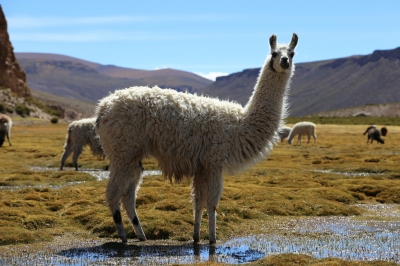
Beach Vacation in February

Best Time to Visit Bolivia: Overview
When to visit bolivia, best time to visit the regions, climate charts bolivia.
In the following, you will find climate charts for the regions.
Furthermore, there are some charts you can use for quick comparison of climate between the regions.
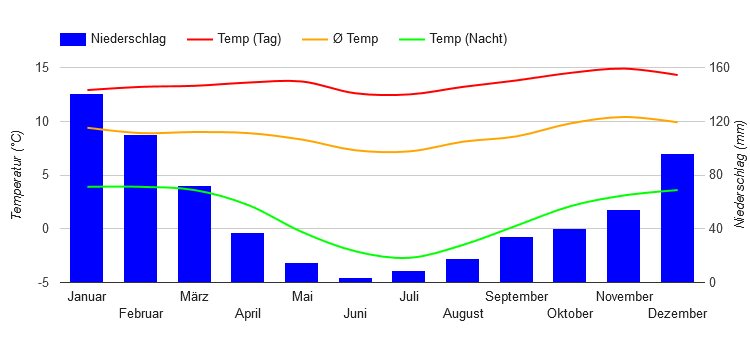
Day Temperatures
Night temperatures, average temperatures, precipitation.
Source of Data: German Weather Service (Offenbach) and Wikipedia
Climate Tables Bolivia
Temperatures, precipitation, sunshine in la paz (bolivia), temperatures, precipitation in trinidad (bolivia), temperatures, precipitation in sucre (bolivia), highlights and attractions, popular activities, more attractions, current weather and forecast.
Activities and Attractions
Distances to bolivia, where’s bolivia, continent: south america, share your experience and win.
Bolivia and its rainforest
Destinations in the vicinity ….
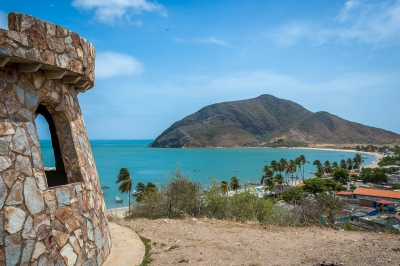
- Imprint / Privacy
- Image Sources
Travel Articles
When is the best time to visit the Uyuni Salt Flats?
Go to the accelerated mobile version
2020-03-05 Updated: 2020-03-05
Late April is the perfect time to visit Uyuni, as you can expect to see both the dry salt desert and the giant mirror effect. It is not as cold as in winter and rainfall is limited. The smaller number of tourists also means that you can get better deals for hotels and tours.

Salar de Uyuni, best time to go
Honestly, there is no good or bad time to visit the salt flats, it is simply a question of what you are looking for. Here are some tips to help you decide when to visit the Salar de Uyuni:
If you want the best climate, visit between September and November.
If you want to see the wet salt flats, visit between December and April.
Other than that, any time is good to visit the Salar de Uyuni. Each season offers a unique perspective and features.
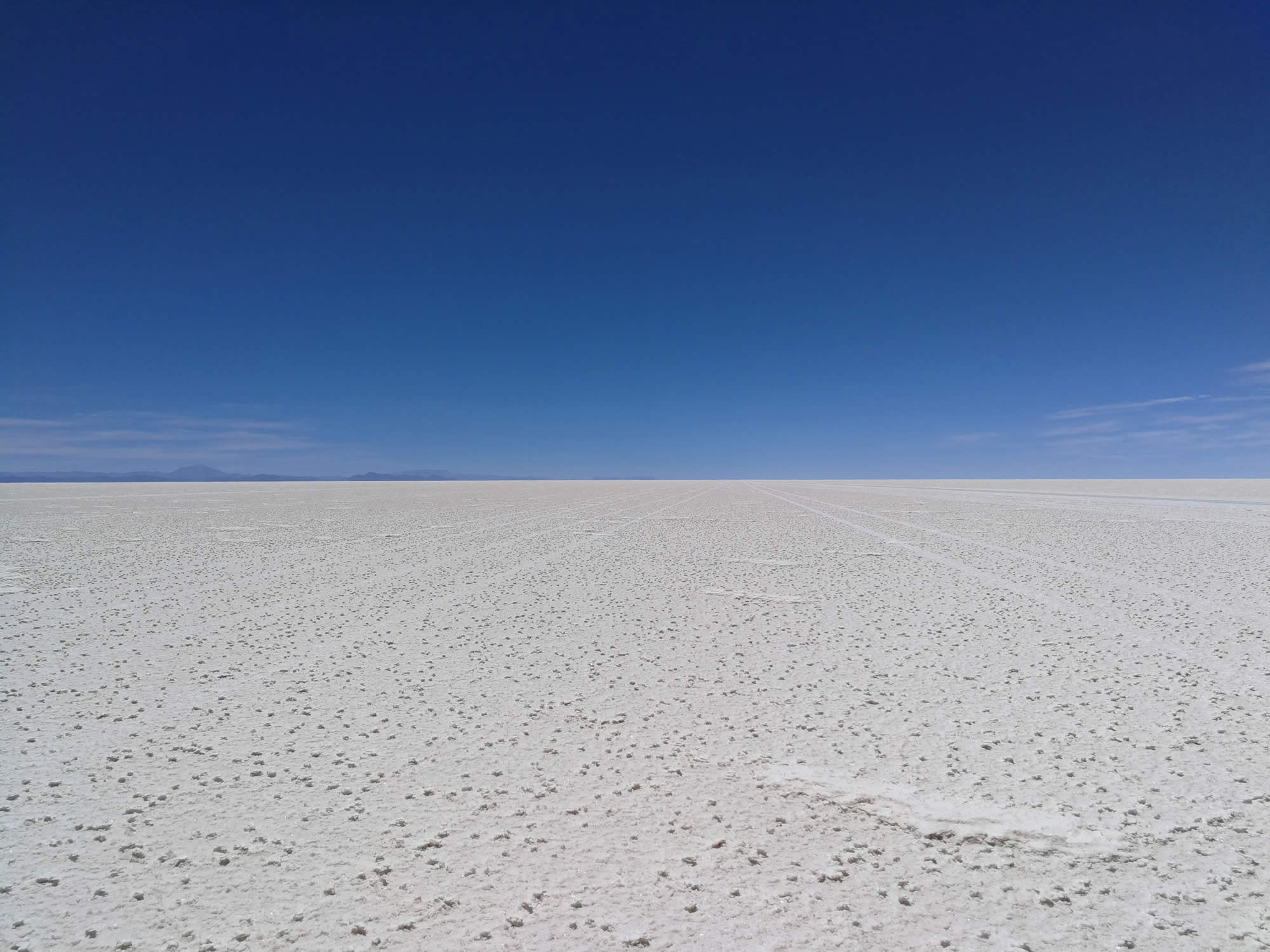
The Uyuni salt flat in the dry season (April - November)

Water covering the salar in the wet season (December - March)
December - January - February: The Great Mirror
As this giant desert of salt is covered by water during the rainy season, it reflects light creating almost impossible optical illusions. This time of the year is highly popular with tourists for visiting Uyuni.
It tends to rain the most in February, but this can be quite unpredictable. Also, be aware that too much rain will melt the salt and make large parts of the salt flat unaccessible for tours.
During and after New Year's Eve some tours don't leave. Be sure to check in advance if you plan to travel during these dates.
When can I see the mirror effect?
In summer, between January and March. Generous rains fall on the bolivian highlands, turning the Uyuni Salt Flats into something similar to a giant lake a few centimeters deep. In some years, depending on precipitation, you can still see this effect in the beginning of April.
Does the water cause difficulties for the travellers?
Depending on the amount of water that accumulates, access to Incahuasi and Fish islands can become restricted for safety reasons. During the rainy season the tours are often limited because the melted salt is dangerous to traverse.
Why the flooding?
Several rivers deposit their sediments in the Uyuni Salt Flats and the water accumulates on the nearly waterproof salty surface.
Another less-known attraction is the large number (around 25000) of flamingos that gather at the Red Lagoon in the Eduardo Avaroa Reserve during the rainy seeason for mating.
March - April - May
There are far fewer tourists during these months, so you can get better deals from tour operators. The weather is still warmer and with a good guide you can find some places with water to see the mirror effect.
June - July - August: Cold, dry, white
Winter. Dress warm. Take extra blankets. The Salt Flat is a huge white beach-like desert during this time. It almost never rains, but can get bitterly cold.
September - October - November
These months are less cold, still dry with occasional rains.
In general, you can expect sunny warm weather during the daytime, and freezing, bone chillingly cold winds at night. The air temperature during the day is usually at around 21°C between November and January and doesn't often get any lower than 13°C in June. This means you can't really feel how strong the sun actually is, and you can get a sunburn in minutes without sunscreen.
The best time for stargazing is either during the winter months when the sky is crystal clear or on a lucky night during the rainy season when you get the chance to see the starry sky reflected in the still, mirror-like surface of the Salar. Don't forget to check the moon cycle for the best experience!
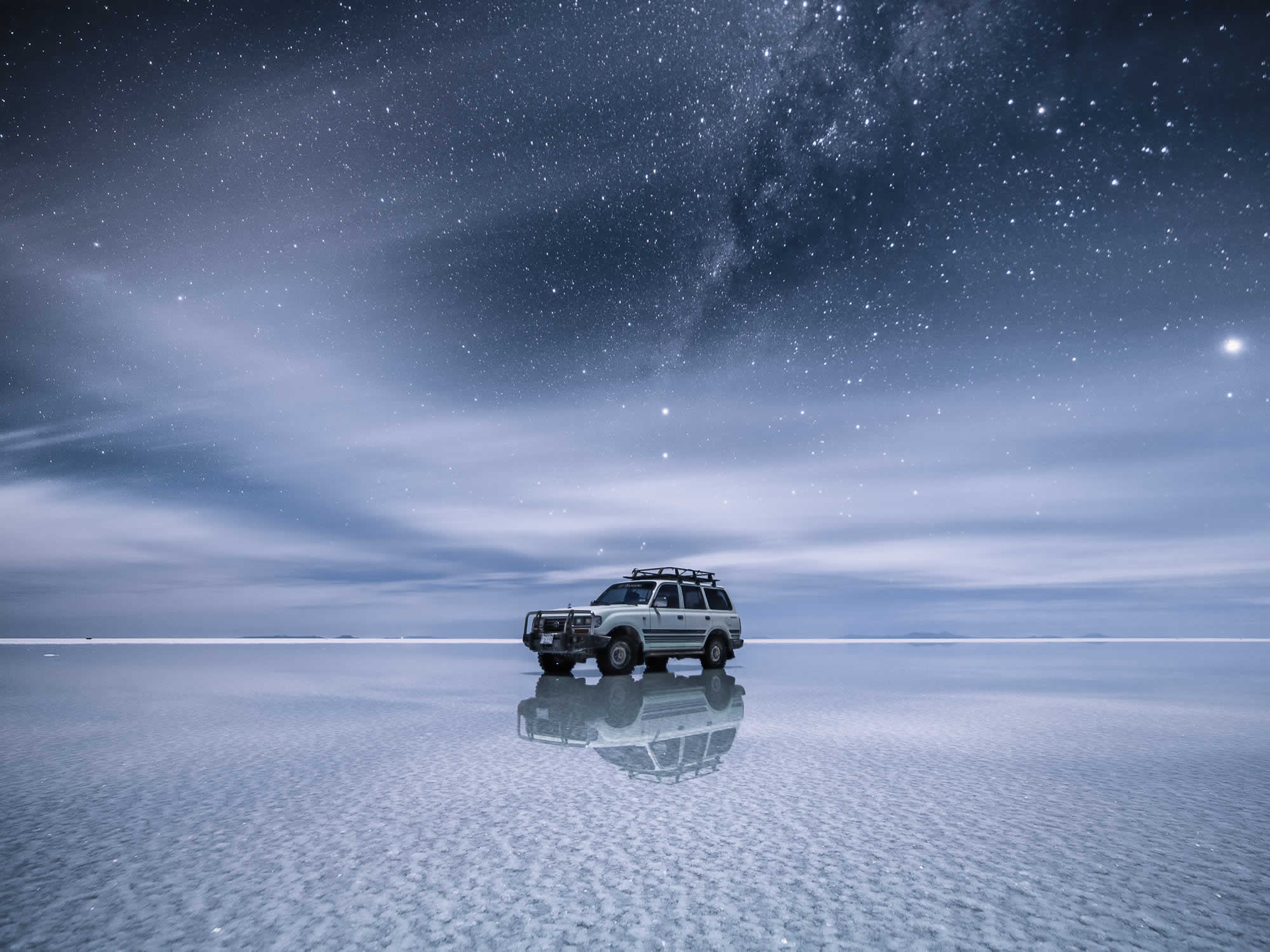
Stargazing during the wet season
Recent reviews of this article
Rating: 5.0
Add a review:
San Pedro de Atacama - Eduardo Avaroa National Park - San Pedro de Atacama Day Tour
Private tour San Pedro de Atacama - Eduardo Avaroa National Park - Uyuni Salt Flat
Uyuni Salt Flat and Thunupa Volcano Private Tour
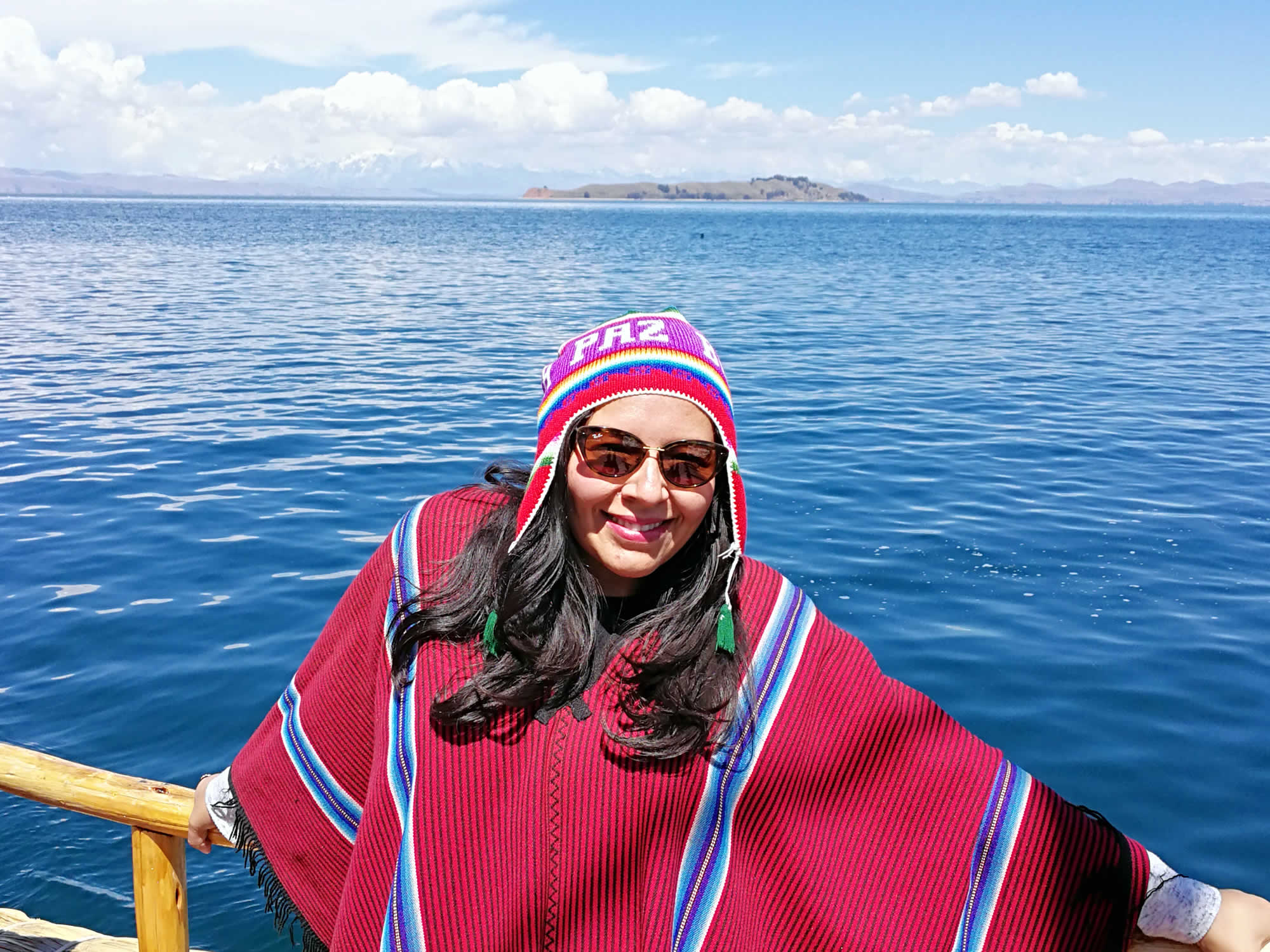
Bolivia Travel Expert
Related travel articles:.
How to get to Uyuni and when to go
The Great Salt Flat of Uyuni and its Surroundings
How to choose your tour in Uyuni?
Advantages of booking your Uyuni Shared Tour with us
All you need to know about the Salar de Uyuni
Follow us on
Bolivia travel information.
- Where to go ?
- Lake Titicaca
- What to do?
- How to get there?
- Bolivia travel articles
MOST WANTED
Contact vivian, our chief bolivia travel expert.
Send us some details so we can start creating your tailor-made trip. Or if you would like to speak to us directly, call us via Skype or Whatsapp.
- Departure date: Number of Participants:
- Tour Length (days): Type of Accomodation: Premium Basic
- Country: Afghanistan Albania Algeria American Samoa Andorra Angola Anguilla Antarctica Antigua and Barbuda Argentina Armenia Aruba Ashmore/Cartier Islands Australia Austria Azerbaijan Bahamas Bahrain Baker Island Bangladesh Barbados Bassas da India Belarus Belgium Belize Benin Bermuda Bhutan Bolivia Bosnia and Herzegovina Botswana Bouvet Island Brazil British Indian Ocean Territory British Virgin Islands Brunei Bulgaria Burkina Faso Myanmar Burundi Cambodia Cameroon Canada Cape Verde Cayman Islands Central African Republic Chad Chile China Christmas Island Clipperton Island Cocos (Keeling) Islands Colombia Comoros Democratic Republic of the Congo Congo, Republic of the Cook Islands Coral Sea Islands Costa Rica Cote d\'Ivoire Croatia Cuba Cyprus Czech Republic Denmark Djibouti Dominica Dominican Republic East Timor Ecuador Egypt El Salvador Equatorial Guinea Eritrea Estonia Ethiopia Europa Island Falkland Islands (Islas Malvinas) Faroe Islands Fiji Finland France French Guiana French Polynesia French Southern and Antarctic Lands Gabon Gambia Gaza Strip Georgia Germany Ghana Gibraltar Glorioso Islands Greece Greenland Grenada Guadeloupe Guam Guatemala Guernsey Guinea Guinea-Bissau Guyana Haiti Heard Island and McDonald Islands Holy See (Vatican City) Honduras Hong Kong Howland Island Hungary Iceland India Indonesia Iran Iraq Ireland Israel Italy Jamaica Jan Mayen Japan Jarvis Island Jersey Johnston Atoll Jordan Juan de Nova Island Kazakhstan Kenya Kingman Reef Kiribati North Korea South Korea Kuwait Kyrgyzstan Laos Latvia Lebanon Lesotho Liberia Libya Liechtenstein Lithuania Luxembourg Macau Macedonia Madagascar Malawi Malaysia Maldives Mali Malta Man, Isle of Marshall Islands Martinique Mauritania Mauritius Mayotte Mexico Micronesia Midway Islands Moldova Monaco Mongolia Montserrat Morocco Mozambique Namibia Nauru Navassa Island Nepal Netherlands Netherlands Antilles New Caledonia New Zealand Nicaragua Niger Nigeria Niue Norfolk Island Northern Mariana Islands Norway Oman Pakistan Palau Palmyra Atoll Panama Papua New Guinea Paracel Islands Paraguay Peru Philippines Pitcairn Islands Poland Portugal Puerto Rico Qatar Reunion Romania Russia Rwanda Saint Helena Saint Kitts and Nevis Saint Lucia Saint Pierre and Miquelon Saint Vincent and the Grenadines Samoa San Marino Sao Tome and Principe Saudi Arabia Senegal Serbia Seychelles Sierra Leone Singapore Slovakia Slovenia Solomon Islands Somalia South Africa South Georgia/South Sandwich Islands Spain Spratly Islands Sri Lanka Sudan Suriname Svalbard Swaziland Sweden Switzerland Syria Taiwan Tajikistan Tanzania Thailand Togo Tokelau Tonga Trinidad and Tobago Tromelin Island Tunisia Turkey Turkmenistan Turks and Caicos Islands Tuvalu Uganda Ukraine United Arab Emirates United Kingdom United States US Minor Outlying Islands Uruguay Uzbekistan Vanuatu Venezuela Vietnam Virgin Islands Wake Island Wallis and Futuna West Bank Western Sahara Yemen Zambia Zimbabwe Palestine Vatican City Montenegro
- *Please note that we are unable to respond to aol.com e-mail addresses due to restrictions by AOL's filters for Bolivia.
- Budget Estimate
- Send Inquiry
+591-68583553

Best time to visit Bolivia’s Salt Flats
When is the best time to visit Bolivia’s salt flats?
The Uyuni Salt Flats are one of those incredible sites that must be seen to really be believed.
Over 4000 square miles in area, you’ll see a sea of white in all directions further than the horizon , or even better a perfect mirror reflection (if visiting during the wet season).
There’s also many other incredible natural landscapes and phenomena to see in this region too! In this guide we’ll explore the best time to visit Bolivia’s Salt Flats, which includes whether this region is worth visiting as well as how long we recommend spending here.
As well as looking at 5 of the very best things you can do in the Salt Flats, we’ll also answer your most burning questions in our FAQ section.

What's in this guide?
You can visit any time of the year to see the incredible region, although it’s important to note certain months have advantages over others.
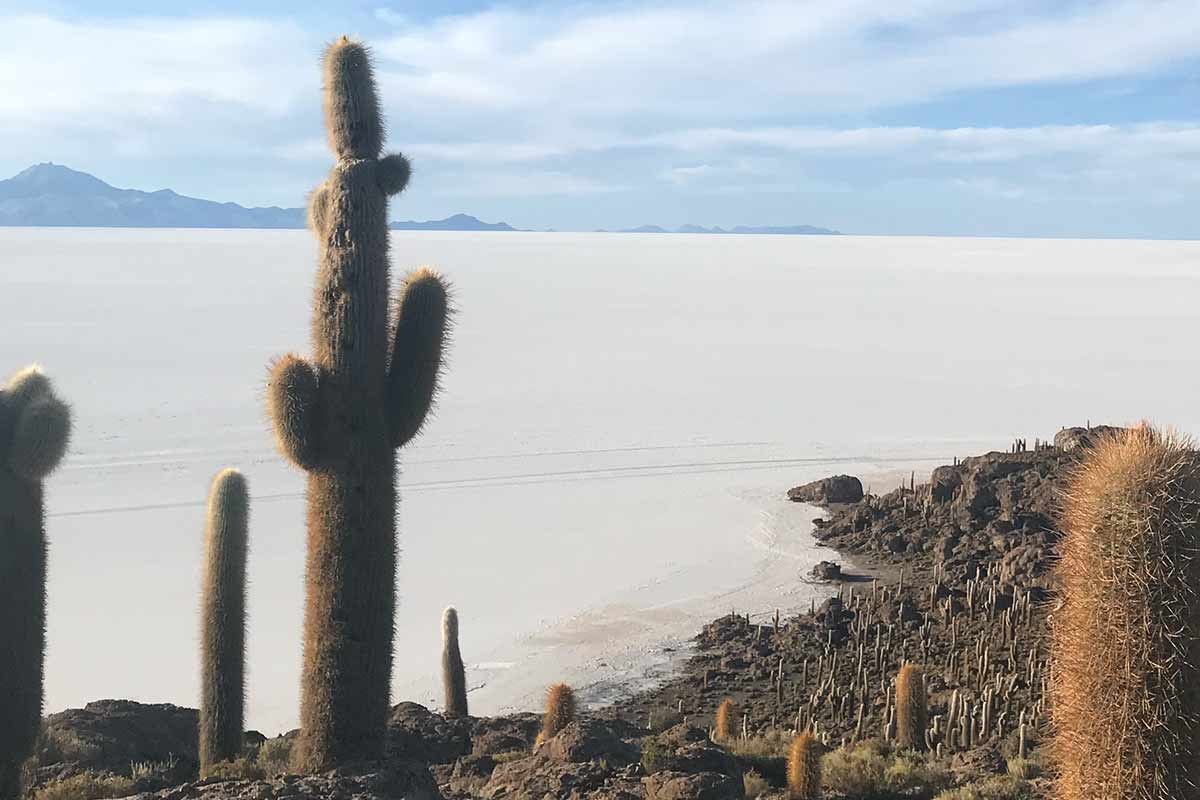
Those who want to see the massive white mass will want to visit in either May, September or October when temperatures are not so nail-bitingly freezing.
If you want to see the perfect sky reflection, then you’ll want to visit between November and February .
Are the Uyuni Salt Flats worth visiting?
Quick Answer: Yes! An absolute must in any backpacking trip through Bolivia (or South America in general), the Uyuni Salt Flats offer a truly surreal landscape to travelers that make it down here.
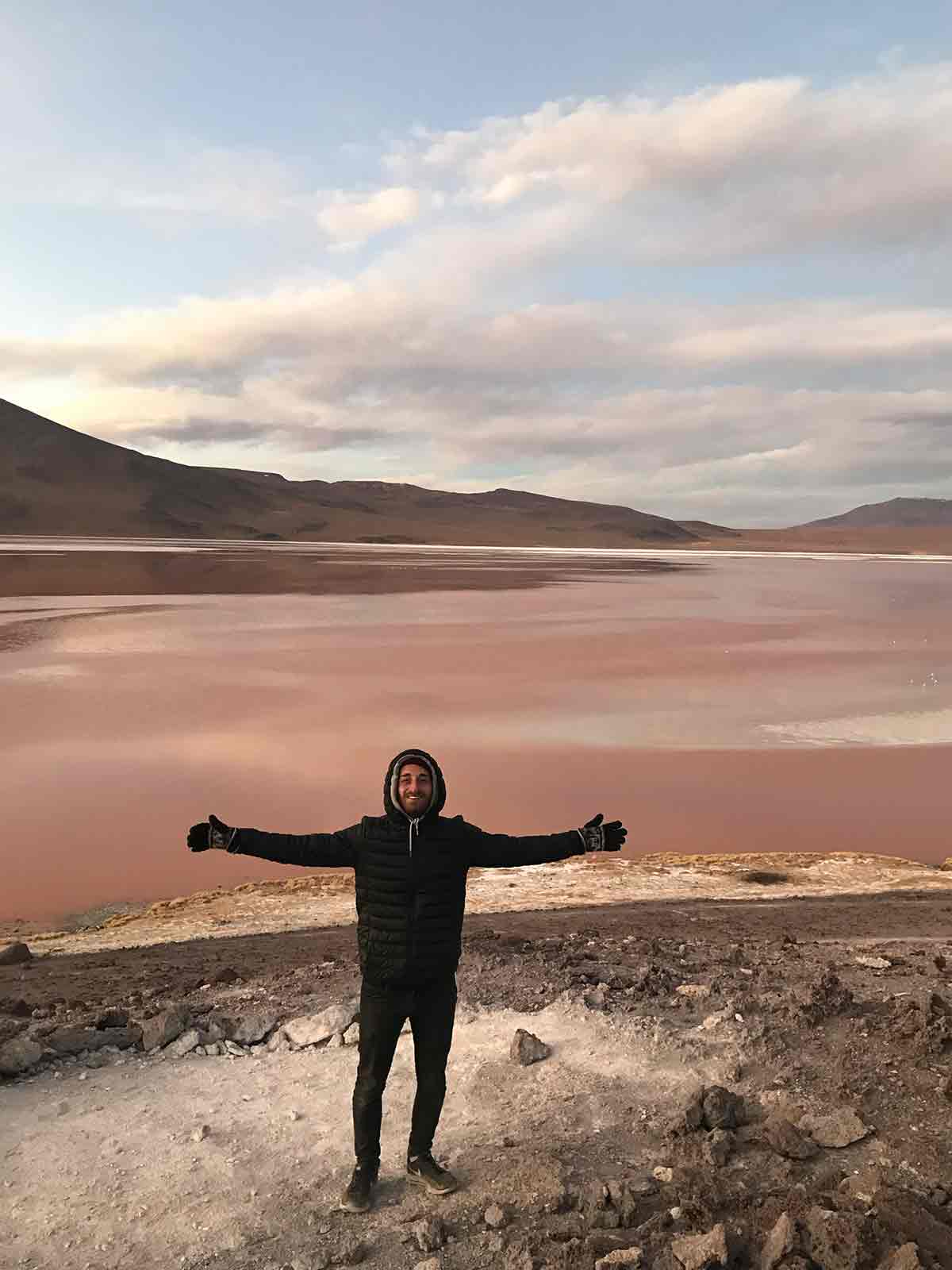
During the dry season you can whizz around the Salt Flats in a 4×4, get those infamous forced perspective shots and even visit the cacti-ridden island of Incahuasi.
During the wet season, you’ll think you’re in heaven as the tiny layer of water on the flats will perfectly reflect the sky on the land in all directions.
It’s not just about the Salt Flats, though. On This 3 Day Tour you can also visit some other incredible landscapes. I (George) have done this which I highly recommend for those who love both crazy landscapes and wildlife.
The lagoons are a highlight, and here you’ll visit both a bright green and blood red lagoon, along with many Pink Flamingos resting on the shores which you can get up and close with.
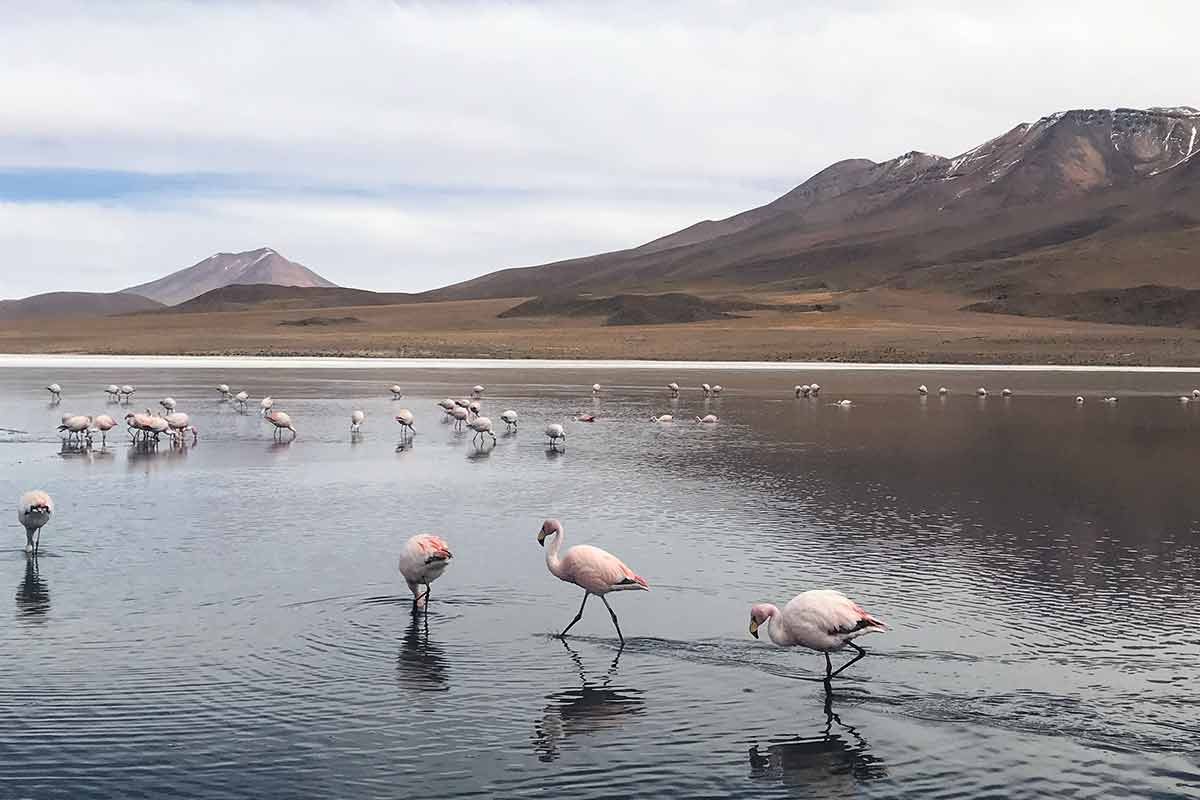
You’ll also get to see the hot, steaming geysers of Sol de Mañana, with the early morning visit met with an incredible sunrise. Other highlights include towering extinct volcanoes , vast deserts and many curious animals along the way (such as Vicuña, Viscacha (Desert Rabbits) and Alpaca.
What is the best month to visit Bolivia’s Salt Flats?
Different months are ideal for different travelers – both for the weather and the experiences you’ll have.
Those who want to see the giant white flats will want to visit between May and October (the Dry Season). Rainfall is virtually nonexistent during these times, which makes access around the region easy.
Temperatures are coldest this time of year, and keep in mind that they can get really cold between June and July (averages of 37°F, highs of 66°F and nighttime lows of down to 26°F).
Despite feeling seemingly cold during the day, you’ll still need to apply sunscreen since it’s really easy to burn at these higher altitudes. The overall best month to visit during the dry season is October .
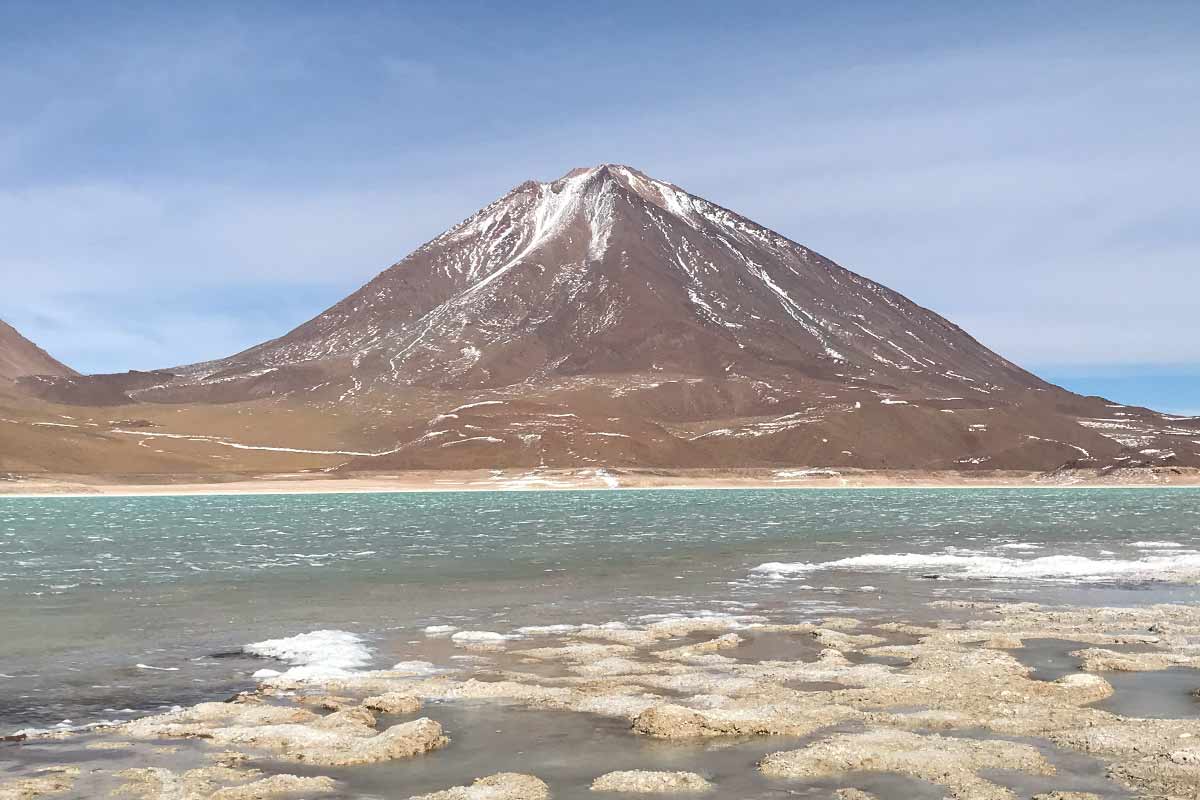
If you want to see the dramatic “heaven on earth” landscapes, then you’ll want to visit between November and April (the Wet Season). There will be some rainfall in the region which makes this phenomenon possible, with a maximum of 2 inches in any month.
It’s important to note that the heavier rains can make driving difficult and pose logistical issues.
The benefit of visiting during this time of year is that temperatures will be much warmer. Average daily temperatures range from 52-54°F, with highs of 69°F and lows of 36°F.
The overall best month to visit during the wet season is January (which is both the warmest and wettest – and also the best for seeing the otherworldly mirror phenomenon).
How many days do you need in Bolivia’s Salt Flats?
From our experience, we recommend travelers to spend around 2/3 days in the Uyuni Salt Flats . There’s multi-day tours for each option, and you’ll get to see many more incredible landscapes than if you just went on the usual day tour.
It’s important to note that you can’t drive around this region by yourself, and it’s mandatory to go with a tour. Not only are distances pretty big (you can take advantage by napping as a passenger), the terrains also require both a large 4×4 and expert driver to properly navigate.
If you’re adding the Salt Flats to a longer backpacking trip through Bolivia, then you can check out our Bolivia Itinerary for a better idea on how to plan a trip through this breathtaking country.
Got travel insurance for the Uyuni Salt Flats?
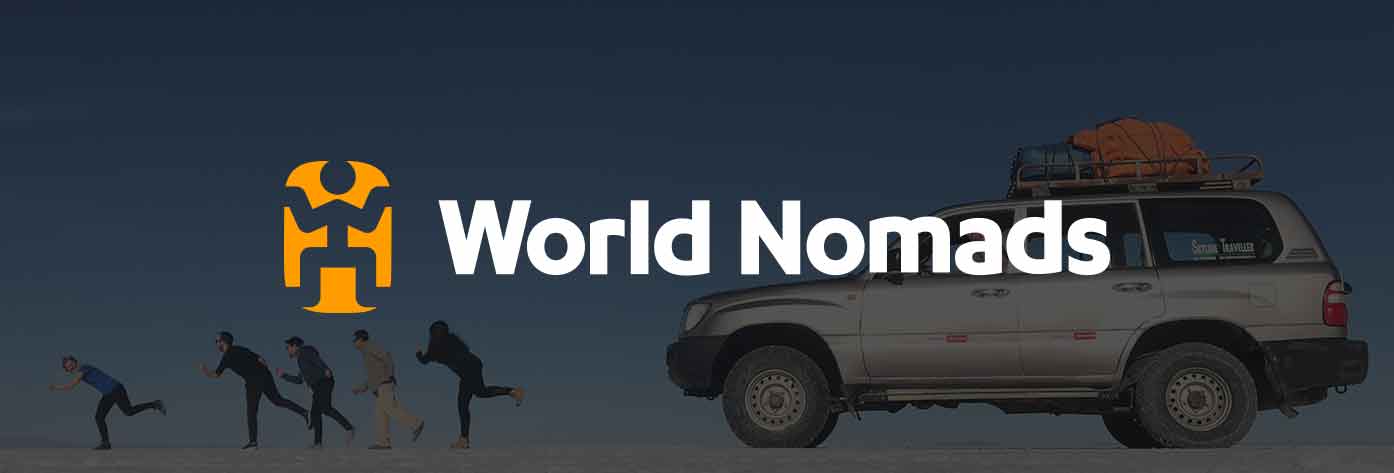
Top Things to do in Bolivia’s Salt Flats
Let’s now explore 5 of the very best things you can see and do when in the Uyuni Salt Flats (and surrounding region).
Get some incredible Salt Flat Photo Shots
The best thing about heading to the Uyuni Salt Flats is that regardless of when you’re visiting, you can take some truly incredible photos.
During the dry season you’ll have a massive blank white canvas to play with, which is perfect for a forced perspective shot (you can make objects or people much larger or smaller than other things in the shot).
When I (George) went, this meant a whole range of opportunities, and really the sky’s the limit. The car-chasing-down-people snap was a fun one to do, and you can also use other props to make your own fun experiments. The tour guides usually bring their own you can use, which is part of the package when heading on this Day Trip to the Salt Flats .
The wet season also brings its very own advantages too. Here you’ll be surrounded by a perfect reflection of the sky on the salt flats , which make for a really impressive mirror shot.
Whilst anytime of the day is great, the evening sky with its orange and red hues is something that you’ll never forget.

Visit various Stunning Lagoons
One of the main highlights of heading on a Multi-Day Uyuni Tour is the fact that you’ll head further into the remote region – which is where various colorful lagoons are waiting for you.
Hedionda Lagoon is the first you’ll visit, which is a sky-blue lagoon with an incredible backdrop of snow-capped peaks. The best thing of all is that crowds of Pink Flamingos strut around its shores, and you can get quite close too for a scenic wildlife shot.
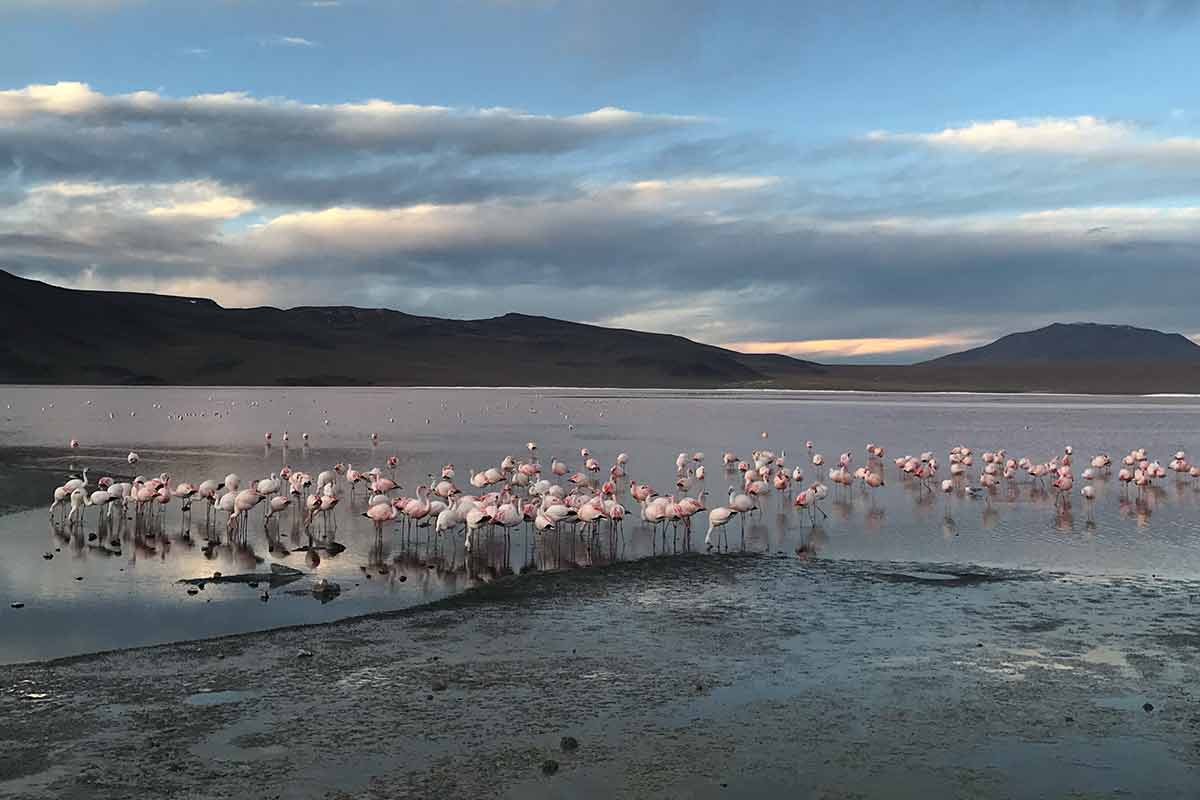
Another you’ll visit is Laguna Colorada, which has a deep red hue and well… is memorable for that reason alone! Along the banks of the mirador you’ll also see many friendly Alpacas and Llamas which are perfect for that selfie shot.
Laguna Verde is the final of these three incredible lagoons, which has a bright green color. It’s located way south near the border with Chile , with the impressive 6000 ft Licancabur Volcano setting the backdrop.
Explore Incahuasi Island
This island has plenty of history, and also some memorable landscapes too. If visiting during the dry season then you’ll easily be able to reach this unorthodox island.
It’s filled corner-to-corner with rows of cacti , with some reaching as high as 40ft! It’s pretty small, and you can walk around the rocky paths within an hour.
However, given the once-in-a-lifetime photo opportunities, it’s worth taking your time to find all kinds of incredible angles (or just to sit on top of the mirador enjoying the views of these cacti with a solid white backdrop).
Even if you are visiting Uyuni during the wet season, you can still see it from a distance which is still pretty awesome.
It’s thought that Incahuasi was an ancient site that was once settled by the Inca, and here you can see some remains of what looks like a small town that was built on the top. If you want to see larger ancient ruins, then be sure to visit Tiwanaku which is close to La Paz .
Marvel at all kinds of Rocky Formations
Whilst it’s easy to only get your hopes up for the more extraordinary sites (like the Salt Flats and Colorful Lagoons), on the longer tours you’ll also get to see some pretty beautiful and bizarre rocky landscapes too.
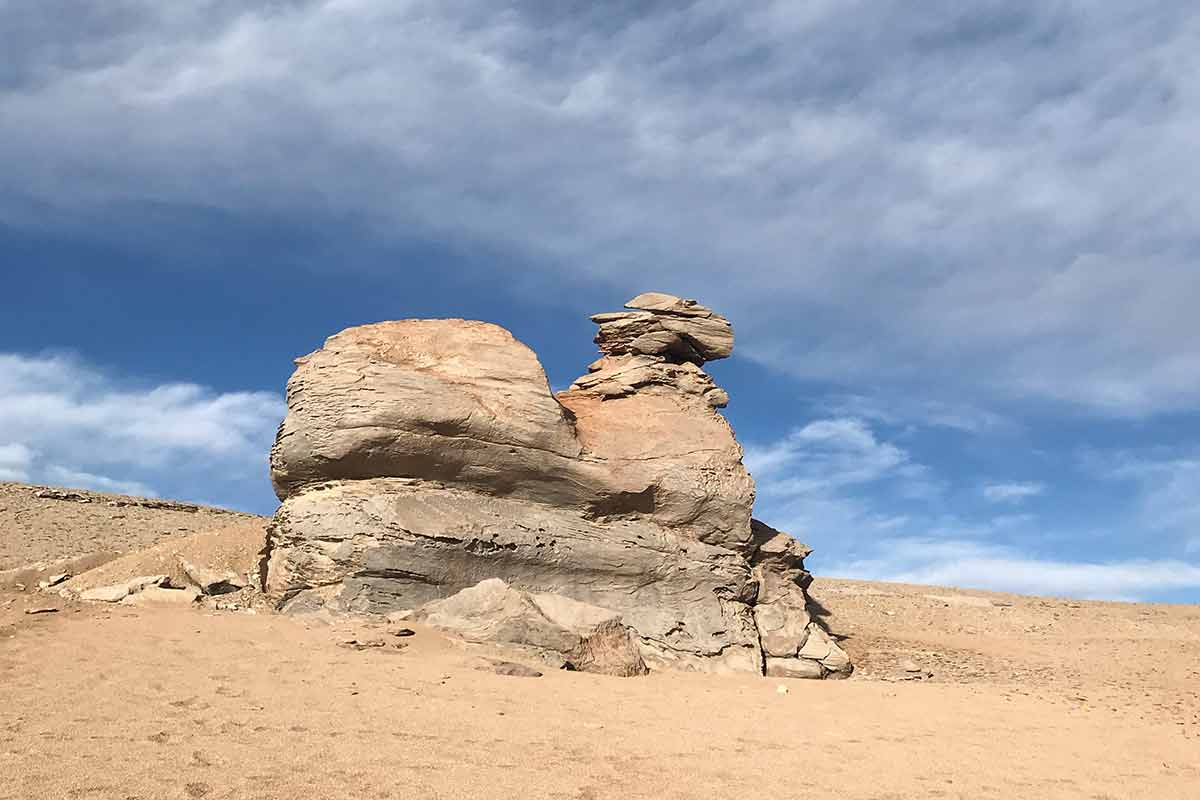
The most famous of all is the Piedra de Árbol (Tree of Rock) which is located in the middle of a desert. The surrounding area also has many kinds of eccentric shapes that look like human faces, mushrooms and even animals too.
Another worthwhile visit is the Bosque de Piedra, which is actually the last destination you’ll visit on your way back to Uyuni.
Here you’ll literally be in a rock labyrinth, with all kinds of unorthodox shapes and towering formations to discover. Be sure to stay close to your guide since it can be easy to get lost here.
As well as these two, be sure to keep your eye out and ask your driver to stop if you see anything interesting. You can sometimes find wild animals too such as Viscacha and Vicuña hanging out in the shade of these rocks too.
Get up and close with the Fiery Geysers of Sol de Mañana
One of my personal highlights (George) has to be the Sol de Mañana Geysers.
Located much further south towards Chile, this area has high tectonic activity which has led to various bubbling pools and steam shots penetrating the rocky surface.
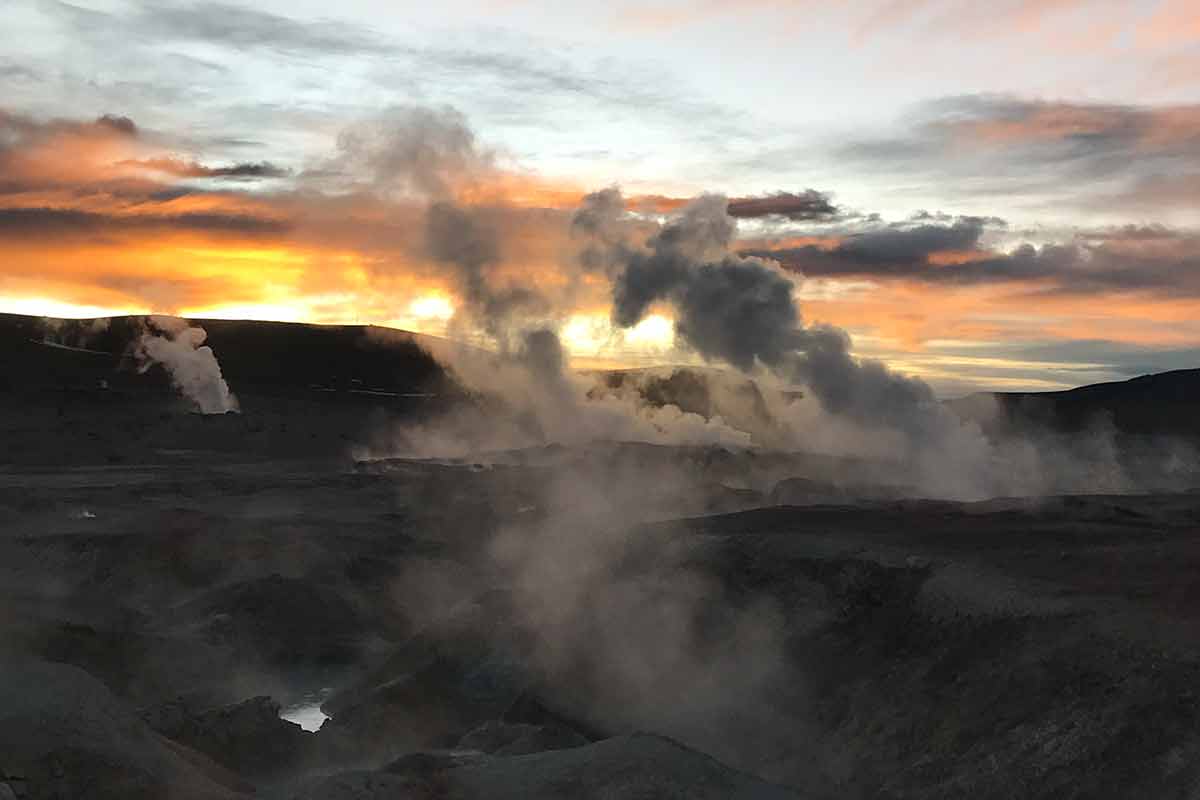
Whilst most travelers prefer visiting the more popular El Tatio Geysers near San Pedro de Atacama , this remote site is actually more impressive given it’s located closer to the volcanic heat source.
As a result temperatures can reach as high as 500°F (260°C), so you’ll need to be careful when walking the path and follow exactly where your local guide walks.
The most memorable part of a visit here is that, during the 3 Day Tour , you’ll head here around 4 or 5 in the morning. This means you’ll get to have an incredible sunrise in the background of these ever-burning geysers.
Salar de Uyuni FAQ’s
What is special about salar de uyuni.
This area is one of the most unique in all of South America. I mean how often can you see a bright white floor in all directions as far as the eye can see?! Not only that, but it also drastically transforms during the wet season too where you’ll feel like you’re walking on the clouds.
How to get to Bolivia’s Salt Flats?
You’ll first need to head to the town of Uyuni, which is a 9 hour bus ride from the capital of La Paz, or 8 hours from Sucre. Once here you can head on day tours to the salt flats, which includes all transport, a lunch and also time on Incahuasi Island. Also note that you can visit the flats with tours leaving from Tupiza further south.
How much does it cost to go to the Bolivia salt flats?
At this time of writing, Day Tours from Uyuni begin around $60 (although you can find them cheaper if heading to Uyuni on the day and looking around local companies). This Ultimate 3 Day Tour where you’ll visit literally everything in this region costs roughly $360, which includes all accommodation, food and transport. If you’re heading on a tour that drops you off in San Pedro (Chile) at the end, then you can expect to spend $400+ for the 4 day adventure.
Can you swim in Bolivia salt flats?
Thanks for reading this guide on the best time to visit Bolivia’s Salt Flats.
This epic destination is perfect for adventure seekers. Mostly known for its giant white mass, there’s also many other secrets to explore here.
From traversing its scorching deserts to chilling with Pink Flamingos on a red lagoon , you may even find the lesser-known gems to be more memorable than the Salt Flats themselves.
In this guide we’ve covered the best time to visit Bolivia’s Salt Flats, as well as our own personal recommendations for you to get the most out of a trip here. At the end we’ve also answered your most burning questions in our FAQ section.
Be sure to read our Bolivia Itinerary for more ideas on how to plan your trip in this impressive South American country.
👉🏽 P.S. If you’ve found this guide helpful, buy us a coffee here to say thanks! Or, support us by downloading our South America Travel Bible to get our best content.
“ Dear traveler! Some links in this post contain affiliate links. Meaning, if you click through and make a purchase, book a hostel or sign up for a tour, we may earn a small commission at no additional cost to you . Your support means a lot and helps us to carry on traveling and maintaining the quality of this site for you.”
Similar Posts
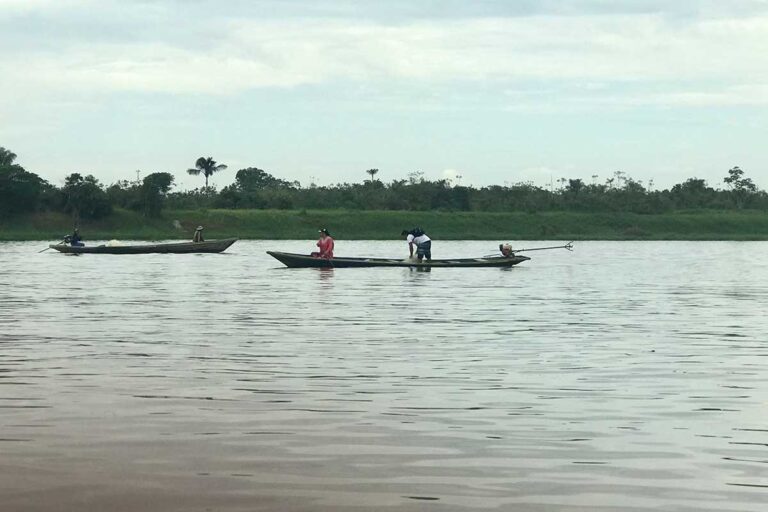
Is Peru worth visiting?
Is Peru worth visiting over other neighboring nations? Let’s be honest, Peru is without a doubt a memorable country to visit in South America. Whilst mostly known for its ancient ruins of Machu Picchu, here you can also find incredible landscapes and some really tasty food. This country is also home to one of the…
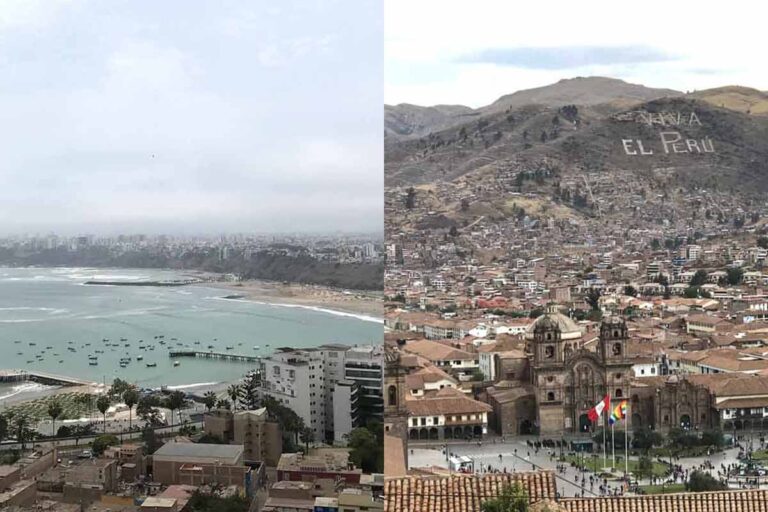
Lima vs Cusco: Which is better?
Is Lima or Cusco better for a visit? Two of the most visited cities in Peru, travelers almost always spend more time in Cusco than Lima. However the capital also has its own flexes, and we think it’s a good idea to really compare both to see which one is better for you and your…
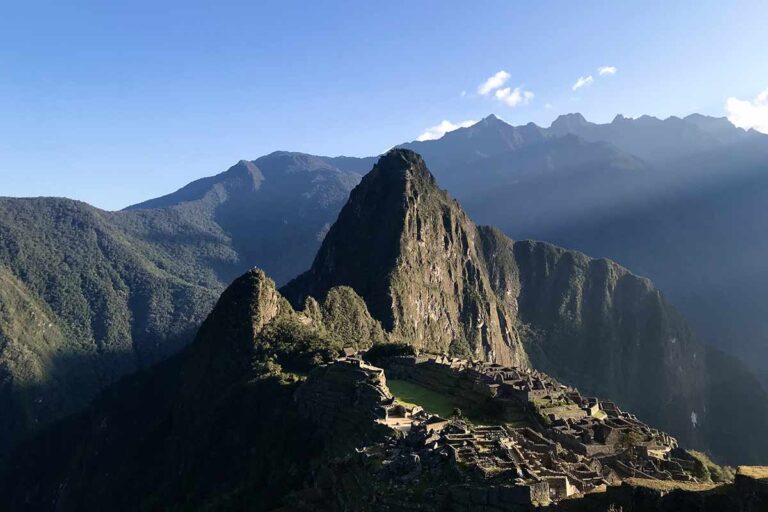
How to get to Machu Picchu from Cusco
Welcome to our guide on how to get to Machu Picchu from Cusco. One of the new Seven Wonders of the World, Machu Picchu is often the reason many travelers visit South America (let alone just Peru). And having been here ourselves, the photos are nothing compared to when you actually summit these ruins in…
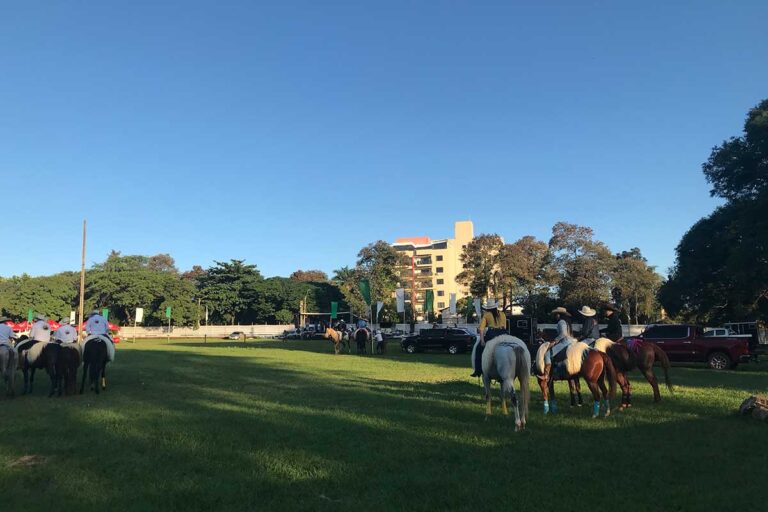
Best time to visit Paraguay
Still very much off the beaten path, Paraguay is slowly growing in popularity amongst travelers. Here we can explore a raw yet mysterious culture, which is a mix of both Latin and native Guaraní people. There’s also many worthwhile sites to see too, such as the incredible wildlife of the Gran Chaco and the mission…
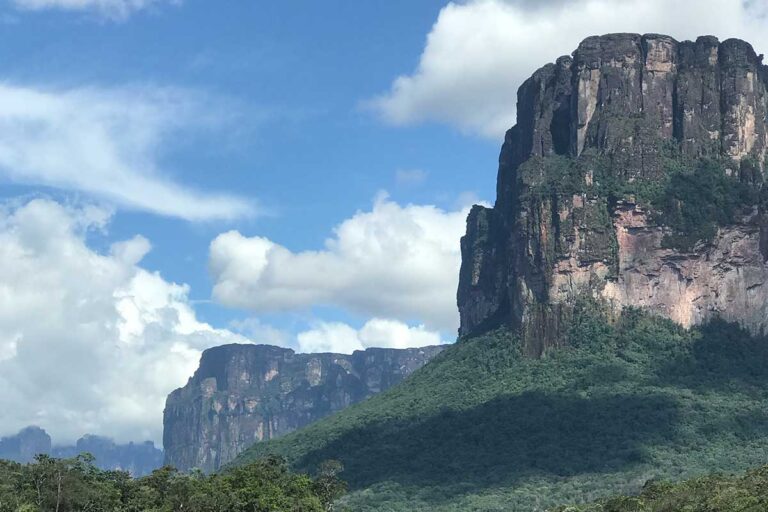
Backpacking Venezuela itinerary
Let’s face it, Venezuela is not a South American country that gets good press. People are aware of the political unrest and economic situation, which leads to high levels of crime. As such, not many people are open to a Venezuela backpacking trip. Backpacking Venezuela However, there are a few brave travelers that prepare very…
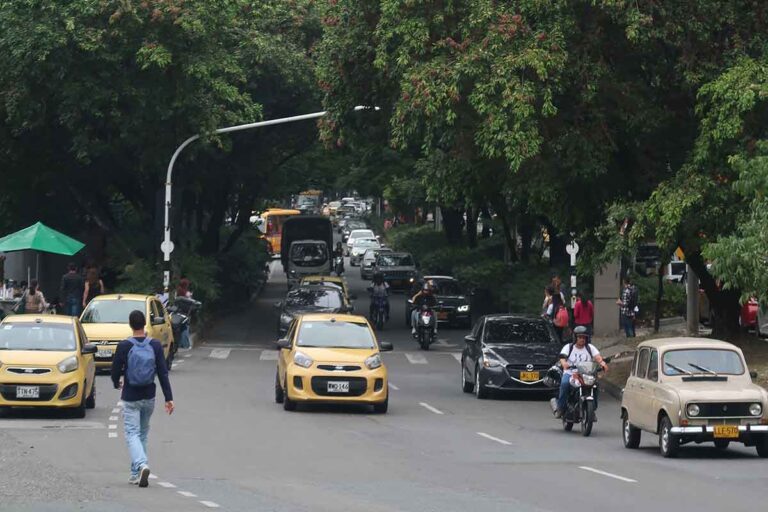
3 days in Medellin itinerary
Welcome to our 3 days in Medellin itinerary for backpackers. Set in the Aburrá Valley, Medellin is a city known for its warm pleasant climate and its inviting friendly vibe that welcomes people from all over the globe. Over recent years Medellin has become one of the most popular cities in Colombia to visit and…

Best Time to Visit Uyuni Salt Flats: A Detailed Month-by-Month Guide
Imagine a vast expanse stretching over 10,000 square kilometers, shimmering under the sun as if heaven itself touched the Earth, creating a mirror of the sky.
This is the Uyuni Salt Flats, or Salar de Uyuni, the world’s largest salt desert located in the heart of Bolivia’s Altiplano. This surreal landscape, reminiscent of another planet, is a dream for travelers, photographers, and nature enthusiasts.
While Uyuni is undeniably captivating year-round, its appearance and the experience it offers dramatically shift with the seasons. From the famous mirror effect during the rainy season to the hexagonal salt patterns in the dry months, understanding Uyuni’s weather is pivotal to making the most of this natural wonder.
Uyuni’s Climate: An Overview
Geography of the salar de uyuni.
Nestled at an altitude of 3,656 meters (11,995 ft) above sea level in the Bolivian Altiplano, the Uyuni Salt Flats are subject to a high-altitude desert climate.
This elevation, combined with its location between mountain ranges, means the area experiences stark temperature contrasts between day and night.
Additionally, while its proximity to the equator might suggest warmth, the altitude often brings about chilly conditions, especially during nighttime and the dry season.
The Seasons at Salar de Uyuni
Broadly speaking, Uyuni experiences two main seasons:
- Dry Season (Late April to October): Characterized by clear skies, cooler temperatures, and minimal precipitation, the dry season reveals the vast salt crust in its entirety. The ground transforms into iconic hexagonal patterns due to the crystallization of salt, and the horizon seems endless. Nights can be particularly cold during these months, often dropping below freezing.
- Wet Season (November to April): This is when the magic amplifies. Rainfall, albeit sporadic, covers the salt flat with a thin layer of water. The result? An awe-inspiring mirror effect that perfectly reflects the sky, making it difficult to discern where the sky ends and the ground begins. However, heavy rainfall can mean parts of the salt flat become inaccessible, and some tours might be limited or altered due to water levels.

Month-by-Month Weather Guide for The Uyuni Salt Flats
January: peak rainy season.
January is smack in the middle of the wet season, resulting in the incredible mirror effect that the Uyuni Salt Flats are renowned for. The water layer on the flats transforms the landscape into a surreal, endless reflection of the sky. However, with this beauty comes a catch: the higher intensity of rainfall can cause accessibility issues.
Some regions of the salt flats may be off-limits due to excessive water, making certain tours limited or occasionally canceled. But for those who can navigate these challenges, the visual rewards are unparalleled.
February: Continuation of the rainy season
February carries on with the rainy season’s offerings. Much like January, the reflective charm of the salt flats remains dominant, presenting photographers and travelers with dreamy vistas.
Additionally, the month hosts the famous Bolivian Carnaval, making it a culturally enriching time to visit the country. However, the accessibility challenges from January can persist.
March: Decreasing rainfall
By March, the intensity of the rainfall starts to decline, creating a fascinating mix on the flats. While some patches may still exhibit the mirror effect, others begin to dry, giving visitors a unique blend of both wet and dry terrains. It’s a transitional phase, allowing for a versatile Uyuni experience.
April: End of the rainy season
April marks the tail end of the rainy season. The vast expanses of the salt flats begin to show more of their iconic dry, crystalline structure.
While there might be occasional rain showers, the chances of seeing extensive reflective surfaces diminish. Instead, the horizon stretches out with the classic salt hexagonal patterns, making for a starkly different but equally captivating view.

May: Beginning of the dry season
As May sets in, the dry season truly takes hold. The skies are predominantly clear, and the temperatures begin to drop, especially during the nighttime.
The terrain is mostly dry, revealing vast stretches of the iconic salt formations. It’s also a quieter month in terms of tourism, offering a more serene experience of Uyuni’s majesty.
June: Cold nights, crystal-clear days
June is characterized by its chilly nights, with temperatures often plunging below freezing. However, the days are typically sunny and crystal-clear, making it an excellent time for photography, minus the mirror reflections. The contrast between the white salt flats and the azure sky is striking, offering a minimalist yet breathtaking vista.
July: Dry, chilly weather
Much like June, July continues with the dry, cold trend. Nighttime temperatures remain low, necessitating warm clothing for those planning overnight stays.
However, the clarity of the days remains consistent, offering uninterrupted views of the salt desert. The dryness is at its peak, making almost every part of the salt flat accessible.
August: Windy conditions
August introduces a new element: wind. The breezy conditions can kick up salt, creating unique photography opportunities with salt spray patterns.
Otherwise, the weather remains consistent with the previous dry months — clear days and cold nights. Travelers should be prepared for the occasional gusty day.

September: Mild transition
September is a transitional month as the intense cold begins to wane and temperatures start to rise gradually. The flats remain dry, and the clear weather ensures great visibility.
With the landscapes still predominantly in their crystalline form, it’s another optimal month for photographers to capture the vastness of Uyuni.
October: Increasing temperatures
October witnesses a further rise in temperatures. While most of the month remains dry, there’s a hint of the impending wet season towards the end, with occasional rain showers possible. These early showers can start creating sporadic reflective patches, especially in lower areas of the flats.
November: Start of the rainy season
The rainy season officially makes its comeback in November. While the showers are still sporadic and not as intense, they’re enough to begin forming the partial mirror effects on the salt flat. The combination of drier patches alongside reflective surfaces makes November an intriguing time for a visit.
December: Rainfall increases
December sees a more consistent pattern of rainfall, rejuvenating the mirror effect on larger sections of the salt flats. While it might not yet be at its January-February peak, the reflections are substantial enough to captivate.
Moreover, the festive season brings about a vibrant atmosphere in the surrounding regions, adding a touch of Bolivian charm to the trip.
Each month at the Uyuni Salt Flats offers a distinct charm, be it the mesmerizing mirror effect, the expansive crystalline vistas, or the cultural festivities. Knowing what awaits in each season ensures you can tailor your visit to match your desired experiences.

Recap Weather Table for Salar de Uyuni

Best Time Overall
The Uyuni Salt Flats offer distinct experiences depending on the season.
Dry Season (Late April to October): The vast expanse of the salt flats becomes a surreal, cracked landscape, allowing travelers to see its vastness unobstructed. For those looking to capture the iconic hexagonal patterns in the salt crust, this is the best time.
Adventurous souls can explore deeper into the salt flat, including places like the “Island of Incahuasi” with its ancient, towering cacti. If you’re aiming for clear, starlit nights and those iconic wide-angle shots with toy-like props against the expansive backdrop, the dry months are for you.
Wet Season (November to April): The rainy season transforms the salt flats into the world’s largest mirror, reflecting the sky so perfectly that the horizon seems to disappear. For photographers chasing this ethereal mirror effect, the rainy season, especially January to March, is the most ideal. However, heavy rainfall might limit access to certain parts of the flats, especially the areas further from Uyuni town.
For the majority of travelers aiming to capture the essence of the salt flats, both in its vast, arid expanse and its mirror-like qualities, visiting during the transitional periods (late April or November) might be ideal.
For me personally, I feel that it is good to see the salt flat for the first time during the dry season, so you can explore it easily. Then if you have the opportunity to go back, go for the mirror effect in the rainy season.

Considerations for Touring Uyuni
Tour Variations: Tours during the dry season often venture further into the salt flats, allowing visitors to explore deeper regions. In contrast, during the rainy season, some areas might be inaccessible due to water levels, but tours will focus more on the reflective areas of the salt flat, providing that iconic mirror effect.
Possible Restrictions: During peak rainy months, especially February, certain parts of the salt flats can become inundated, making them inaccessible. Always check with tour operators about any restrictions or itinerary changes due to weather conditions.
Night Sky Observations: The Uyuni Salt Flats, being far from major cities and light pollution, offer some of the best stargazing opportunities. Dry season nights, with their clear skies, are particularly suitable for stargazing and capturing the Milky Way. Some tours offer specialized night excursions to capitalize on this.
Frequently Asked Questions
Traveling to Uyuni during the rainy season is generally safe, but it’s crucial to book with a reputable tour operator. While the mirror effect on the salt flats is mesmerizing, heavy rainfall can make some routes impassable. Always heed local advice and never venture out without a guide.
Yes, some tour operators offer overnight camping experiences on the salt flats, especially during the dry season. It’s a unique opportunity to experience sunset, stargazing, and sunrise on the flats.
Layers are crucial! The altitude can make Uyuni quite chilly, especially during the night. Sunscreen, sunglasses, and a hat are musts due to the intense sun reflection. Waterproof shoes or boots are helpful during the wet season. And don’t forget a fun prop for those perspective shots!
The mirror effect is a result of a thin layer of rainwater that accumulates on the vast expanse of the salt flat during the rainy season. Given the flatness of the terrain, the water remains stagnant, reflecting the sky above. On days with clear skies, this creates a surreal, dreamy effect where the horizon seems to vanish, blending sky and ground seamlessly.
Julien is an exploration-minded, curiosity-driven traveler and blogger. On a mission to witness the planet's natural beauty and diversity, he shares his experiences on this website through articles, videos, and photography, including interactive virtual tours.
Fascinated by animals and plants since young, he is also fond of outdoor and so-called extreme sports, often discovered while traveling and practiced back at home where he focuses on improving his knowledge and skills - so he can explore further on the next trip!
More About Me
You May Also Like

Best Time to Visit Bolivia: A Comprehensive Guide

27 Things Bolivia Is Known and Famous For

All About Bolivia’s National Flowers: The Kantuta And The Patujú

Bolivia’s Diverse Climate: From Tropical Rainforests to Icy Altiplano Peaks

The Freezing Night I Was Saved by a Drunk Guy

22 Fun Facts About Bolivia That Will Surprise You
Leave a comment cancel reply.
Notify me of follow-up comments by email.
Notify me of new posts by email.

- July 23, 2021
- No Comments
The Essential 1-Month Bolivia Backpacking Itinerary & Route
How to spend a month backpacking in bolivia.
If you have a month to backpack Bolivia, this means you can enjoy ‘slow travel’ and spend a bit of extra time in each place.
You will also be able to visit the eastern lowlands , a relatively untravelled area of the country that includes hidden gems such as Torotoro National Park and Sucre.
Here is the complete one-month Bolivia backpacking itinerary :
- Day 1-3 – La Paz
- Day 4-6 – Copacabana
- Day 7 – Return to La Paz
- Day 8-10 – Death Road/Coroico
- Day 11 – Travel to Rurrenabaque
- Day 12-13 – Amazon Pampas tour
- Day 14 – Rurrenabaque
- Day 15 – Travel to Cochabamba
- Day 16-18 – Torotoro National Park
- Day 19 – Return to Cochabamba/Travel to Sucre
- Day 20-25 – Sucre
- Day 26 – Travel to Uyuni
- Day 27-28 – Salt flats tour
- Day 29 – Return to Uyuni or travel to Chile

Day 1-3 - La Paz
La Paz is the thriving capital of Bolivia and your first stop on this one-month Bolivia itinerary. We recommend 3 days here to see the highlights.
Day 1 - Arrival
Whether you’re flying in from abroad, or taking a bus across the border from Peru, it’s always best to take your first day in Bolivia easy by checking in and adjusting to the altitude.
La Paz is 3640m above sea level and can be a shock to the system, especially if it’s your first time at high altitude.
How To Get From El Alto International Airport to Downtown La Paz
El Alto International Airport in La Paz is set in the El Alto district way above the city.
It’s a small airport, and upon leaving baggage, you will see a few coffee houses and restaurants. Alexander Coffee has Wifi if you need it, but you will need to buy something.
Outside the airport, you will see the official taxis waiting in line. We paid 70BOB ($10) for a 45-minute journey to our hostel which was in the Sopocachi District.

Day 2 - La Paz Walking Tour, Cable Cars & Cholita Wrestling
For day 2 of this Bolivia itinerary, book yourself onto a Red Cap Walking Tour to explore the sprawl that is La Paz. La Paz can be a nightmare to navigate, so a walking tour is a great way to get your bearings and see the highlights.
Red Cap offers numerous tours from the standard city centre exploration to foodie tours and even an organised cable car tour if you really can’t be bothered to plan that yourself.
- Red Cap Walking Tours
When wandering around the city, you will see the impressive cable cars and their lines stretching out to every corner of La Paz. Some routes will g as high as 4,000m (13,000 ft) above sea level, and it’s a great way to explore and get incredible views of the city. The initial fare is 3 bolivianos ($0.50).
The red line will take you to most of the popular places tourists want to visit such as El Alto (for panoramic views of the city), the Witches Market and the Cholita Stadium , but you can ride it all over the city.

Then in the evening, it’s time to go and watch the famous Cholita wrestling. Picture WWE wrestling mixed with the no holds barred style of Mexican Lucha Libre, then replace the male wrestlers with female stars, and you have Cholita wrestling.
Every Sunday evening, the stadium will be packed full of locals and tourists coming to see these women duke it out in the ring. And like any staged wrestling, you will see some impressive acrobatics, good vs bad routines and absurd humour.
To see these 3 days in more detail along with other options for extending to 5 days in La Paz, head to the post below:
- La Paz, Bolivia: 3-Day vs 5-Day Itinerary

Day 3 - Day Trip Outside Of La Paz
For your third day, it’s time to escape outside the city to experience the beautiful nature surrounding La Paz. You have several great day tours to choose from:
Canyon De Palca – You can take a trip to Bolivia’s very own slice of the wild west and trek through Canyon de Palca.
A walk through this gorge makes an ideal day hike from the city, and the beautiful rock formations that poke out like jagged teeth make for a unique experience. This is still a relatively undiscovered tour, so it’s perfect if you are looking for something less touristy. South Treks do a day tour for $45 if full (5 or more people).
- South Treks
Valley De Las Animas – The Valley of Souls is a strange and beautiful valley filled with impressive geological formations that looks like something out of a Lord of the Ring’s movie. These formations were named by locals who thought the jagged rocks resembled petrified souls. Spooky.
Kanoo Tours combine a trip here with Canyon de Palca for $37.
- Kanoo Tours
Valley De La Luna – Another spectacular natural landscape just outside of the city, Valley de la Luna (Valley of the Moon), is less of a valley and more a maze of canyons, strange rock formations and giant spires jutting from the ground.
Several trails run through the area with the longest taking up to an hour, so this is a great half-day activity. You can reach the valley easily via taxi or uber (25-minute journey) and entry costs is $2.
For more great ideas for what to do whilst in La Paz, check out the post below:
- The 13 Best Things To Do In La Paz As A Backpacker

Day 4-6 - Copacabana
Lake Titicaca is the highest navigable lake in the world at 3,810 metres above sea level.
The town of Copacabana on the Bolivian side is a small but pretty place filled with local markets and artisan restaurants, but it’s the lake itself that is the must-see.
Fun activities include walking up to the summit of Cerro Calvario to get beautiful views of the lake and taking a boat tour to Isla del Sol , the largest island on the lake. You can easily arrange tours through your accommodation or head down to the pier to book.
How to get to Copacabana from La Paz
The easiest way to travel to Copacabana from La Paz is by bus.
Direct buses from La Paz to Copacabana leave from the main bus terminal and the journey lasts around 4 hours.
During our time in Bolivia, we used Tickets Bolivia to book all our buses online. However, you can turn up on the day at the bus terminal and book. There will be many local smaller bus companies and you should be able to find cheaper tickets than online.
Google Maps

Do You Want Cheap Flights To South America With Cashback?
I’ve been using WayAway Plus to book almost everything whilst travelling around South America.
You get cashback on:
- Flights – finds the cheapeast flights and gives you 5% cashback on all flights booked
- Accommodation – up to 20% cashback on selected deals with Booking.com and 6% with HostelWorld
- Tours – up to 8% cashback with GetYourGuide and 6% with Viator
Day 7 - Return To La Paz
Upon returning to La Paz, you can decide to take the day easy and rest up, or you can try and fit in an afternoon or evening activity.
If you want to get some great views of the city and the surrounding mountains, then you can head to one of the popular viewpoints. While the views are incredible from almost anywhere in the city, there are a couple of popular places that give you unbridled views of the entire city and the immense backdrop of the Andes.
Catching the red line cable car up to El Alto takes you to the highest point on the edge of the valley for stunning panoramic views. Kilikili viewpoint and Parque Mirador Laikakota both have almost 360 views of La Paz with Illimani Mountain providing an excellent background for some Instagram photos.
Another option is a night out on the town. You can start at one of the backpacker hostels such as Loki or Wild Rover to find some new friends before partying the night away at one of the many bars and clubs in town. Just be warned, you will be riding Death Road in the morning so don’t go too crazy!
For more on our favourite backpacker hostels in La Paz:
- The 10 Best Backpacker Hostels In La Paz

Day 9-11 - Death Road Tour & Corioco
Corioco is the town where you finish the Death Road Tour. So, when you book your Death Road tour, make sure to inform them you wish to stay in Corioco. Or you can return to La Paz on the same day if you wish but it’s well worth checking out this laid-back jungle town.
Day 9 - Death Road
Death Road is the main highway that connected La Paz to the north of Bolivia. The narrow winding road carved into the cliff face has been the scene of hundreds of fatal accidents over the years.
Fortunately, the government built a new road for trucks and buses in 2006, and Death Road is now mainly used for tourism . While there’s still the odd accident (deaths average around 5 per year now), the road is nowhere near as dangerous as it used to be.
Riding down the newly built highway is exhilarating as you reach high speeds. Then riding down the old Death Road is more challenging but still great fun. You stop several times on the way to take in the incredible views of the valley and take pictures underneath the waterfalls that are falling down onto the road from the cliffs above.
The day has so much scenic variety as you descend from the snow-covered high altitude mountain ranges near La Paz at 4,600m down into the warm, lush jungle.
For more information on Death Road and the best companies to book with:
- Death Road: Is it Worth It?

Day 10-11 - Corioco
The jungle own of Coroico is the perfect place to relax for a couple of days and escape from the high-altitude chill of La Paz.
Although the area has some fun activities such as hiking and ziplining, we recommend taking the time to chill, sit by the pool with a beer and enjoy the subtropical climate.
One place we would recommend checking out is the La Senda Verde Animal Refuge which has helped to rescue and care for hundreds of wild animals that have been affected by illegal animal trafficking and deforestation. The refuge is home to over 60 species including monkeys, bears, jaguars and many birds of paradise.
- La Senda Verde Animal Refuge
How To Get From Corioco To La Paz
The Coroico bus terminal is just downhill from the main plaza.
Minivans and buses cost around 30BOB ($4-5) and will take you to the northern La Paz bus terminal in Villa Fatima. The journey takes about two hours.

Day 12 - Travel To Rurrenabaque
Your next step on this one-month Bolivia itinerary is to visit the Amazon Rainforest. To do that you need to get to the town of Rurrenabaque , which is where most Amazon tours start.
You can either return to La Paz and fly (a short 20-minute flight) or take the overnight bus from Corioco to get to Rurrenabaque.
Flying From La Paz To Rurrenabaque
Return flights from La Paz cost anywhere between $100-200 if booking yourself. Although make sure you read our Amazon Tour guide for tips on how to find great package deals.
The flight takes around 30 minutes , and you will be treated to some fantastic views as you fly over the snow-covered mountains of La Paz followed by the rivers of the Amazon.
All flights to the Amazon are via a small plane (60 seaters) so just a word of warning if you are a nervous flyer, you can feel the turbulence more on these things and bad weather can cause them to be delayed or cancelled – although both of our flights were fine.
The main company to book with is Amaszonas.
Taking the Bus From Corioco To Rurrenabaque
This bus takes 15 hours and travels along the old Death Road – great for budget travellers as it’s cheap but we know which one we would choose. The journey is a bumpy one.
Book at the Coroico bus terminal just downhill from the main plaza. Daily buses depart towards Rurrenabaque and cost 120 BOB ($17).

Is This The Best Backpack For South America?
I love the Osprey Farpoint 50-70L.
It’s reasonably priced and perfect for first timers visiting South America.
Read more here about why it’s so great or head to the official site below:

Day 13-14 - Amazon Tour
Visiting the Amazon in Bolivia is much cheaper and easie r compared to other countries in South America.
The standard Amazon tour is 3 days and two nights, and you will be picked up in Rurrenabaque. On the tour, your days will be spent on a longboat winding through the tributaries of the Amazon searching for caimans, anacondas, and exotic birds.
Our complete guide to booking an amazon tour and flying to Rurrenabaque can be found here:
- How To Visit The Amazon In Bolivia

There are two types of tours to choose from. The Pampas tour sticks to the rivers and you see a lot more animals. The jungle tour takes you into the actual Amazon rainforest where you will learn more about the plants and tribes.
We recommend the Pampas tour as you see a lot more wildlife but if you aren’t sure whether you want to do the Pampas Tour or Jungle Tour then head here for our breakdown and comparison of the two:
- Visiting The Amazon In Bolivia: Jungle Vs Pampas Tour

Day 15 - Rurrenabaque
We took a day on either side in Rurrenabaque to enjoy the town and rest and recuperate. That’s the beauty of having a month travelling in Bolivia: you can slow down and not worry about rushing everywhere all the time.
For things to do in town, you can walk along the River Yacuma or head up to Mirador El Calvario for incredible views of the town and jungle. If your hotel doesn’t have a pool then check out Oscars Pool – a great place to hang out, cool off and enjoy some cocktails.
We enjoyed some nice meals at Paititi and Luz De Mar , and if you are looking for bars then check out Moskito Jungle Bar and Bar Los Amigos.
To see how this 1-month Bolivia itinerary can fit into an extended multi-country South America trip, check out the posts below:
- 4 Epic 1-Month South America Itineraries
- The Perfect 3 Month South America Itinerary

Day 15 - Travel To Cochabamba
Cochabamba isn’t a city geared towards backpackers, so it’s best used as a base to escape into the wild Bolivian landscapes surrounding the town. There isn’t much to do here accept organise your bag and plan the next day’s journey to Bolivia’s Jurassic Park – Torotoro National Park.
Hostal Running Chaski is the best hostel in town, with bunkbeds dorms, private rooms and free breakfast. The staff spoke great English and were incredibly helpful. They gave us a guide to Torotoro National Park, helped us book taxis and also let us leave our big bags in their locker for when we visited the park.
Read our city guide for more activity and restaurant recommendations:
- The Best Things To Do In Cochabamba
How to Get From La Paz To Cochabamba
The easiest option is to land in La Paz and take a flight straight to Cochabamba.
The flight takes 1 hour and will save you a lot of travel time. The last time we checked Skyscanner, flights were around $60.
The alternative is to return to the city centre and take a night bus. The bus will take 8-9 hours . Or there are three-night buses that depart at 22:00, 22:30, and 23:00. These all cost $15.47 and are run by Trans Copacabana.
Considering the bus costs $15 and takes 9 times longer, it’s worth the extra cost for the flight in our opinion.
Do You want Cheap Data Anywhere In South America?
Airalo is my favourite eSIM for travelling around South America. Here’s why:
- Save Money – No more high roaming bills with access to the best eSIMs (digital SIM cards) for every country in South America!
- Easy – No more stress trying to buy a physical SIM. You can download and install a data pack and get connected as soon as you land.

Day 16-18 - Torotoro National Park
Famous for its incredibly well-preserved fossils and dinosaur footprints, surreal rock formations and sprawling network of underground caves , this national park has something for nature lovers and natural history nerds alike.
You can only reach the park from Cochabamba and it’s a 4-5-hour via mini-bus. The town is small and is mainly used as a base for trekking into the park. On the day you arrive, you can take it easy and get your bearings.
Then for days 17 and 18 you can book on to tours into the national park. There are three main tours you can book which range from taking you bouldering in the underground caves, to trekking through deep canyons in search of waterfalls and dinosaur footprints.
For more on the best tours and how to get to the park, check out our full guide to visiting Torotoro National Park:
- How To Visit Torotoro National Park

Day 19 - Travel To Sucre
On the morning of day 19, take the minibus back to Cochabamba. Once you’ve collected your big bag from wherever you were staying, you may need to find a place to chill for a few hours before taking the night bus to Sucre.
The bus to Sucre takes 8 hours and only runs as a night bus.
The Trans Copacabana bus leaves at 9:30 PM and arrives at 6:30 AM costing $20.

Day 20-25 - Sucre
Known as Bolivia’s ‘White City’, the beautiful colonial-era architecture of Sucre and its warm climate make it a wonderful place to visit.
Take two of your days here to enjoy the artisan cafes, amazing chocolate shops and beautiful views of the colonial-era buildings and terracotta rooftops . It’s also the perfect place for a night out with lots of lively bars catering for the university student population.
We’ve turned this part of this one month Bolivia itinerary into an extended stay because Sucre is one of the best and cheapest places in South America for language schools.
With group classes costing on average $5 and private lessons c.$8, many people end up extending their stay in Sucre for longer to continue learning.
Me Gusta Spanish School have a variety of classes on offer and a group class (20 hours) for one-week costs 700BOB
For more great things to do in Sucre including the best bars and restaurants, check out our complete Sucre city guide:
- The Best Things To Do In Sucre

Day 26 - Travel To Uyuni
Unfortunately, another long bus is needed to get to your next destination. Best to try and take an early morning bus so you get to Uyuni for the early afternoon or a night bus if you prefer.
Then you can spend your first day in Uyuni booking onto a tour for the next day and organising your stuff for the epic adventure out on the salt flats starting the next morning. It’s best to book a salt flat tour in person rather than online so that you can haggle and find the best price.
How To Get From Sucre To Uyuni
The bus takes 8 hours to reach Uyuni from Sucre
The ‘6 de Octubre’ bus leaves at 9:30 AM arriving at 5:30 PM for $11.68 or there are night buses leaving at 9:00 PM and arriving at 05:00 AM.
When we were in Bolivia these tickets didn’t exist online, so we went to the bus station on the morning we wanted to leave and hopped on a bus. The earlier you arrive, the better as there are only a couple of buses leaving each day. Alternatively, book at the station the day before you want to go to be safe.
For more articles like this on other great countries in South America and why you should visit them, head to the posts below:
- 4 Expertly Planned Three-Week Backpacking Itineraries For South America

Day 27-28 - Uyuni Salt Flats Tour
We are nearing the end of this epic one-month Bolivia itinerary, and topping it off with one of the best tours in all of South America.
The Uyuni Salt Flats tour is two incredible days of exploring one of the most surreal landscapes in the world. Day one of the tour is spent on the actual salt flats taking the all-important perspective and reflection photos before spending a night in the famous salt hotel.
Day 2 takes you out onto the high-altitude desert to see even wilder landscapes such as volcanoes, geysers, and beautiful high-altitude lakes full of flamingos.
Everything you need to know about the town of Uyuni and booking a Salt Flats tour can be found in our guide:
- The Ultimate Guide To The Uyuni Salt Flats

Day 29 - Travel to Chile, La Paz or North Argentina
The salt flats tour will drop you off in the Atacama Deser t on the morning of the third day or take you back to Uyuni for the late afternoon.
So, after the Salt Flat tour finishes, you have several options to choose from for where to travel next:
- Return To Uyuni then travel to La Paz
- Return to Uyuni, then travel to Tupiza before crossing the border to Argentina
- Travel into Chile and to the Atacama Desert
Option 1 – Return To Uyuni Then Travel To La Paz
On the final day of the salt flats tour, you have the option to return to Uyuni or get dropped off at the Chilean border. The return journey to Uyuni takes around 8-9 hours and there are a couple of stops along the way, but most of the day is spent driving.
If you have return flights booked from La Paz to your home destination, then this is the best option for you. Once you return to Uyuni you can take an overnight bus or a short 1-hour flight to get back to La Paz.
Option 2 – Return To Uyuni Then Travel To Tupiza
If you are on a longer South America backpacking itinerary, then you may wish to travel to North Argentina instead of Chile.
If you want to do this, then you need to return to Uyuni on the last day of the tour. From Uyuni, you then need to take a bus (4 hours) to the town of
Tupiza is close to the north Argentina border and you can spend a day or two here. Tupiza is known as the wild west of Bolivia, and this small town is famous for its incredible red coloured cliffs and canyons which are full of great trekking routes.
Then from Tupiza, it’s a 1-hour journey to the border at Villazon, and once you’ve crossed the border, it’s another short journey to the first town you will want to check out in Argentina – Humahuaca.
For more on Tupiza and the town across the border Humahuaca, check out our guides below:
- Tupiza Guide & Best Things To Do
- The 10 Best Things To Do In Humahuaca, Argentina
Option 3 – Travel To Chile
As mentioned, on the final morning of the Salt Flats tour, you can be dropped off at the Chilean border.
From here you take a 45-minute bus to the town of San Pedro De Atacama . If you are continuing to travel around South America, and Chile is your next destination then this is the best option. The Atacama Desert is also an incredible place worth exploring.
For more on Atacama and how to turn your visit to Bolivia into a longer itinerary with more countries, check out the posts below:
- An Adventure-Filled 4-Day Atacama Desert Itinerary
- The Essential 1 Month Chile, Bolivia & Argentina Backpacking Itinerary

How Many Days Do You Need In Bolivia?
For travellers short on time, one week is the minimum amount of time you need in Bolivia to see the two best places – La Paz and the Uyuni Salt Flats.
For travellers with extra time to spare, two weeks is the perfect amount of time to all the best bits of Bolivia – La Paz, Copacabana, the Amazon and Uyuni.
You need three weeks to a month if you want to explore the less travelled parts of the country such as the lowlands where you can find Sucre and Torotoro National Park.
Check out our three week Bolivia itinerary here if you don’t have a full month to spare:
- Three Week Bolivia Backpacking Itinerary

How Much Does It Cost To Travel Bolivia For A Month?
With everything included, hostels, food and activities, you should budget between $28-40 day while backpacking in Bolivia.
For an entire month backpacking in Bolivia, budget travellers should take $800.
Flashpackers who prefer private rooms and eating out once a day at a restaurant rather than a market should aim for $1100.
Remember that the popular tours like Uyuni and the Amazon will add to your expenses (but these have been factored into the table above).
Here’s a rough estimate of what they cost:
- Uyuni Salt Flats Tour (3 Days) – $100-$150
- Flights and 3 Day Amazon Trip – $150-200
For more information on the cost of food, accommodation and transport in Bolivia and South America, head to the posts below:
- Bolivia Backpacking Budget
- How Much Should You Budget For One Month In South America?
- 4 Efficient Two-Week South America Itineraries For Every Backpacker
- Peru and Bolivia Itinerary
- Author Profile
- Posts by the Author
- North Argentina Itinerary: Two Weeks On An Epic Road Trip
- Is Salta Worth Visiting? 12 Great Reasons To Go In 2024
- Which Is Better – Bariloche or Mendoza?
- A Guide To Argentina’s Rainbow Mountains: Which Is Better?
- 11 Best Things To Do In Cafayate (Argentina’s Wine Region)
- Best Things To Do In Tilcara: North Argentina’s Hidden Gem

Joe Bayfield
Hi I'm Joe Bayfield, Bayf for short. I love South America and want people to visit this incredible continent. I’ve travelled through Colombia, Ecuador, Peru, Bolivia, Chile and Argentina and also lived in Lima, Medellin and Buenos Aires. I write detailed South America itineraries to help you plan your next adventure!
Leave a Comment Cancel Reply
Save my name, email, and website in this browser for the next time I comment.

Travel South America With Ease
Sign up to my weekly newsletter for the latest itineraries, guides and deals for South America.
Travel South America Like An Expert

Protect Your Trip »
The best way to renew a passport in 2024.
The proposed online passport renewal system is behind schedule.
The Best Way to Renew a Passport

Getty Images
Key Takeaways
- Online passport renewals remain unavailable.
- In the meantime, the easiest way to renew your passport is by mail.
- It's best to renew your passport several months before it expires.
- Some countries require that your passport is valid at least six months beyond the date of your arrival.
In late 2022, the U.S. Department of State began a pilot program in which volunteers could apply to renew their passport online. More than 500,000 passport holders participated in the trial before it was paused in March 2023. The system, which was expected to roll out nationwide late last year, is still in product testing.
Until the online passport renewal program is reinstated, it's best to renew your passport by mail – though there are some instances where you may have no choice but to renew in person. Read on to learn what you need and what to expect when renewing your passport by mail or in person, along with answers to some of the most common questions around passport renewals.
How to renew your passport by mail
If you have an expired or expiring passport in your possession that was issued when you were at least 16 years old and within the past 15 years, you can renew your passport by mail as long as it's relatively undamaged. You'll need to submit the following documentation:
- Form DS-82: Complete the DS-82 renewal application.
- Existing passport: You will need to send your current U.S. passport, but if you're someone who likes to look back fondly at all of your passport stamps, don't worry – you should receive the original passport back with your new one.
- Passport photo: Include a new photo that meets passport requirements (outlined in more detail in the FAQ section below).
- Check or money order: Once you determine the applicable fees for your passport renewal, payment must be made with either a check or money order payable to "U.S. Department of State," on the front of which you'll print the full name and date of birth of the applicant. You cannot pay online or send cash at this time.
You can mail all your materials – including your old passport and any name change documents – in a large envelope through the U.S. Postal Service to one of the National Passport Processing Center's designated P.O. boxes; the address varies depending on what state you live in and whether you choose expedited or routine service. Note that if you use a delivery method other than USPS, your application will be returned to you without being processed.
Tips on Trips and Expert Picks Newsletter
Travel tips, vacation ideas and more to make your next vacation stellar.
Sign up to receive the latest updates from U.S News & World Report and our trusted partners and sponsors. By clicking submit, you are agreeing to our Terms and Conditions & Privacy Policy .
How to renew your passport in person
If your passport has been damaged, lost or stolen; was issued before you turned 16; or is more than 15 years old, you'll need to renew it in person with the following documentation:
- Form DS-11: You can fill out the DS-11 passport application online or by hand, but don't sign the form until an authorized agent instructs you to do so.
- Proof of U.S. citizenship: This evidence can take the form of an original or certified copy of a U.S. birth certificate, a Certificate of Naturalization, a Certificate of Citizenship or a Consular Report of Birth Abroad, among certain other options . Aside from the physical proof, you must also bring a photocopy for the State Department to keep.
- Identification document: Your government-issued photo ID can be a driver's license, a government employee or military ID, a valid foreign passport, a Certificate of Naturalization, a Certificate of Citizenship, or another form of ID deemed acceptable by the State Department. Just as with the citizenship proof, you have to make a photocopy of your photo ID too.
- Passport photo: See the FAQ section below for U.S. passport photo requirements.
- Form of payment: When submitting your application at a passport acceptance facility (such as designated libraries, post offices or local government offices), you'll need to pay for the application fee with either a check or money order payable to "U.S. Department of State." The acceptance facility will also charge a separate $35 fee that can be paid by money order or (at select locations) by check, cash or card.
Frequently Asked Questions
U.S. passports are valid for 10 years as long as they were issued when you were 16 years of age or older.
It's best to renew your passport several months before it expires, factoring in mailing times plus current processing times, which are six to eight weeks. Note that in many countries, visitors' passports must be valid for at least six months beyond the date you intend to return to the U.S. You can check the U.S. Department of State's website for information on policies by country.
No, but if you can't supply a birth certificate, you must be able to provide either a valid, undamaged passport; a Consular Report of Birth Abroad or Certification of Birth; a Certificate of Naturalization; or a Certificate of Citizenship. If your state issued a birth abstract (a summary of your birth record), you can submit it as long as it meets the requirements outlined by the U.S. Department of State.
If you cannot provide any of the above, you will need to submit secondary citizenship evidence such as a delayed birth certificate or a Letter of No Record, plus the DS-10 birth affidavit form and early public records like a baptism certificate or doctor's record of postnatal care. Consult the State Department website for other examples of early public records you can use.
Unless you make an appointment at a passport acceptance facility that is equipped to take passport photos, plan to provide a high-resolution photo taken in the last six months whether you complete the process online, by mail or in person.
Photo specs: The photo should be in color and measure 2 by 2 inches; use the State Department's photo tool to ensure it's the correct size. If you're taking the picture at home, stand in front of a plain white or off-white background that's well lit. You will need to have someone else snap the photo, as selfies are not permitted.
Clothing: Glasses are not permitted in photos, nor is any attire that resembles a uniform. It's best to wear plain, everyday clothing. Hats and head coverings aren't allowed in passport photos, unless you sign a statement verifying they are worn as part of a recognized religious practice or provide a written doctor's note confirming they're for a medical purpose.
Expression: Your head should be centered, in full view and facing forward. Pose with a neutral expression or natural smile (don't show your teeth) and ensure your eyes are open.
If you're confident you can follow the guidelines and want to take your photo at home, you can either print it yourself on matte or glossy photo paper or upload it to a passport photo printing service (offered by CVS, Target, Walmart and others). For online applications, you can simply upload the file.
Otherwise, a passport photo can be easily obtained for a fee from select post offices, shipping stores, passport acceptance facilities, and even big box stores and major drugstores (including the same ones that offer printing services).
Technically, you cannot "renew" a passport for a child younger than age 16. Instead, you must reapply using the same in-person process you went through to acquire their first passport. For a list of step-by-step instructions and required documentation for minors, see How to Get a U.S. Passport for Kids . If your child is at least 16 years of age, however, you can renew their passport using the methods detailed above.
If your name has changed since your last passport was issued, you'll need to provide documentation – such as a marriage certificate, divorce decree or court order – that serves as proof of the name change. This requirement applies with whatever method you choose to renew your passport.
As of 2024, the renewal fee for an adult passport book is $130. The State Department's fee calculator provides additional information on passport fees.
Routine processing times for expired passport renewals currently range from six to eight weeks, beginning when the passport center or agency receives your application to renew your passport, according to the U.S. Department of State. Sometimes the process can take less time, but don't count on it.
If you're in a rush to renew your passport, you can pay for expedited service. There are a couple of options:
If you can wait two to three weeks: Expedite your passport by mail. Clearly write "EXPEDITE" on the outside of the envelope. Be sure to submit payment for the $60 expediting fee with your application; if you also want to request the fastest return shipping (which takes one or two days), you'll need to pay $19.53 on top of that.
If you need your passport in days: If you have a life-or-death emergency that requires your passport to be renewed in days or urgent international travel plans necessitating a passport within two weeks, you'll need to make an appointment with a regional passport agency.
Also an option is a service such as RushMyPassport , touting easy, expedited service in as little as one week (though these services can come with a hefty fee). If you're a member of AAA, you can take advantage of exclusive rates on expedited passport renewals through RushMyPassport.
You might also be interested in:
- The Top Passport Wallets
- TSA PreCheck vs. Global Entry
- The Best International Travel Insurance
- The Best Travel Insurance for Expats
The Most Famous Landmarks in the World

Tags: Travel , Travel Tips
World's Best Places To Visit
- # 1 South Island, New Zealand
- # 4 Bora Bora
If you make a purchase from our site, we may earn a commission. This does not affect the quality or independence of our editorial content.
You May Also Like
The best places to go for july fourth.
Sharael Kolberg June 10, 2024

The Best Places to Celebrate Juneteenth
Suzanne Mason June 6, 2024

The Best Salem Tours
Lyn Mettler June 6, 2024

The Best Key Largo Snorkeling Tours
Gwen Pratesi June 6, 2024

The Best London Tours
Kim Foley MacKinnon June 5, 2024

Celebrity Ascent Review
Megan duBois June 5, 2024

The Best Graceland Tours
Gwen Pratesi June 5, 2024

Top Things to Do in Orange County, CA
Brittany Chrusciel and Sharael Kolberg June 4, 2024

Fun Things to Do in Arkansas
Ben Luthi and Justine Harrington June 3, 2024

Top Things to Do in Florida
Gwen Pratesi May 31, 2024

- Search Please fill out this field.
- Manage Your Subscription
- Give a Gift Subscription
- Newsletters
- Sweepstakes
If you click on links we provide, we may receive compensation.
- Travel Products
- Trends + Deals We Love
The 50 Best Amazon Travel Deals Available for Prime Members This Month — Up to 50% Off
Score Samsonite luggage, comfy shoes, breathable clothing, and more.
:max_bytes(150000):strip_icc():format(webp)/IMG_9861-28adc25e5c9643fa9f55e077a316c3f4.jpg)
Travel + Leisure / Madison Woiten
Amazon has long since earned its title as a go-to destination for everyday essentials, clothing , travel gear , and more, and while the retailer doesn’t restrict any shoppers from getting in on the unbeatable deals it’s known to provide, it’s also no secret that shopping as a Prime member is an entirely different ballgame. The retail giant continues to reward members by offering them even deeper discounts on already affordable items, and this month is no exception.
Whether you’re filling in the holes of your packing list for an upcoming European adventure or auditing your camping gear for your weekend getaways this summer, Amazon has everything you need to enjoy your best trip to date — and many of the deals are available to Prime members only. So, we’ve rounded up the 50 must-have products to score while they’re sitting at prices as low as $8, so you don’t have to waste any time finding exactly what you’re looking for. Plus, if you’re not already a Prime member, you can sign up here to get your first 30 days for free.
Best Overall Amazon Prime Member Deals
From reliable luggage to comfy travel clothing, Amazon has no shortage of impressive members-only deals available this month. In fact, the shopper-loved Samsonite Freeform Hardside Expandable Carry-on is currently marked down to just $152, while the surprisingly roomy Etronik Travel Duffel Bag has also been slashed to a mere $29. And if you’re looking for an easy way to upgrade your packing space and organizational skills, don’t forget to snag the Bagail 4-set Compression Packing Cubes while they’re on sale for just $17 for Prime members.
- Samsonite Freeform Hardside Expandable Carry-on , $152 (originally $200)
- Etronik Travel Duffel Bag , $29 (originally $50)
- Bagail 4-set Compression Packing Cubes , $17 (originally $27)
- Mintegra Women’s Shoulder Handbag , $30 (originally $60)
- Sernial Women’s White Tennis Shoes , $24 (originally $50)
- Alex Vando Men’s Sweat-wicking Golf Shirt , $18 (originally $36)
- Jejill Portable Charger for iPhone , $16 (originally $60)
- WiHoo Mini Handheld Tripod Fan , $17 (originally $30)
- MalloMe Sleeping Bag , $21 with coupon (originally $30)
- Qevooon Camping Hammock with Net , $19 with on-site coupon (originally $33)
Bagail 4-set Compression Packing Cubes
Best amazon prime member luggage and bag deals.
Prime members are privy to some of the best deals on carry-on luggage, checked bags, spacious duffels, and more, and with brands like Samsonite and Travelpro boasting major discounts, you’ll be happy to take advantage of the sales ahead of your next vacation. For a limited time, the Delsey Paris Helium Aero Hardside Expandable Luggage is discounted by an impressive 42 percent and a no-brainer choice for shorter adventures, while the Travelpro Maxlit 5 Softside Lightweight Underseat Carry-on Travel Tote is a genius underseater that’s now available for just $85.
- Travelpro Maxlite 5 Softside Expandable Checked Luggage , $170 with on-site coupon (originally $220)
- Light Flight Travel Backpack , $34 (originally $50)
- Luggex Carry-on Luggage , $86 (originally $100)
- Kroser Underseat Carry-on , $62 with on-site coupon (originally $87)
- Gotdya Extra large Mesh Beach Tote , $15 (originally $20)
- Delsey Paris Helium Aero Hardside Expandable Luggage , $94 (originally $160)
- Ytonet Carry-on Garment Bag , $39 (originally $50)
- Travelpro Maxlit 5 Softside Lightweight Underseat Carry-on Travel Tote , $85 (originally $100)
Travelpro Maxlite 5 Softside Expandable Checked Luggage
Best amazon prime member travel accessory deals.
Packing cubes, toiletry bags, and travel accessories in general can make your experience on the go that much easier, and right now, Prime members can score some of the best on the market for significantly marked down prices. Just look at the Mintegra Women’s Shoulder Handbag that’s currently on sale for half off and will make the perfect secure purse for busy travel days. Meanwhile, the brilliant $10 Riemot Luggage Travel Cup Holder allows for hands-free travel while hurrying through the airport, and even the Wxm Wallet with AirTag Wallet has been discounted to just $21 with a special on-site coupon.
- Veken 8-set Packing Cubes , $17 (originally $21)
- Travelambo Front Pocket Minimalist Leather RFID-blocking Wallet , $9 (originally $13)
- Yamiu Travel Shoe Bag Set of 4 , $12 (originally $22)
- Riemot Luggage Travel Cup Holder , $10 (originally $14)
- Wxm Wallet with AirTag Wallet , $21 with on-site coupon (originally $30)
- Yiview Contoured Sleep Mask , $13 (originally $15)
- Skysper RFID Sling Bag , $27 with on-site coupon (originally $39)
- Cubetastic Small Travel Makeup Bag , $8 (originally $10)
Yamiu Travel Shoe Bag Set of 4
Best amazon prime member travel clothing and shoe deals.
Giving your travel wardrobe a much-deserved upgrade this season will be a breeze seeing as Prime members have their choice of hundreds of exclusive deals from comfortable shoes to breathable, lightweight apparel. We were stunned to find that the Sernial Women’s White Tennis Shoes have been discounted by more than 50 percent to celebrate the beginning of summer, and even the Ododos Women’s Crop 3-pack Seamless Rib Knit Crop Tops are now coming in at just under $10 per shirt. As for men’s clothing, you won’t want to pass up the chance to grab the sweat-wicking Alex Vando Men’s Sweat-wicking Golf Shirt while it’s on sale for a stunning half off as well.
- Ododos Women’s Crop 3-pack Seamless Rib Knit Crop Top , $29 (originally $60)
- Gayhay High-waisted Leggings , $11 (originally $20)
- Dream Pairs Women’s Open Toe Ankle Strap Platform Sandals , $31 (originally $41)
- Visshow Women’s Short Sleeve Long Maxi Dress , $32 (originally $42)
- SimpleFun Women’s Boho Top Floral V-neck Blouse , $23 with on-site coupon (originally $33)
- Dream Pairs Men’s Hiking Sandals , $32 (originally $46)
- Jwj Men’s 2-in-1 Quick-dry Running Shorts , $15 (originally $33)
- Alimens & Gentle Men’s Wrinkle-free Dress Shirt , $20 (originally $30)
Ododos Women’s Crop 3-pack Seamless Rib Knit Crop Top
Best amazon prime member tech deals.
Packing the right technology for your travels is a surefire way to make your journey a piece of cake, and from comfy over-ear headphones to the slimmest portable charger, Amazon has it all, just for Prime members. Combat the rising temperatures with the WiHoo Mini Handheld Tripod Fan which can be molded to fit onto the handle of your suitcase for a smooth and cool journey no matter where you’re headed. Plus, if you’re spending time out in the woods but still want to stay on the grid, you’ll be happy to have packed the Mregb Power Bank Solar Charger — especially considering that it’s on sale for $27 right now.
- BolaButty Bluetooth Speaker with HD Sound , $20 (originally $60)
- Anlmz 3-in-1 Charging Station for iPhone , $13 with on-site coupon (originally $43)
- Anker Portable Charger Power Bank , $16 (originally $22)
- Mregb Power Bank Solar Charger, $27 with on-site coupon (originally $50)
- JLab Go Air Pop True Wireless Bluetooth Earbuds , $20 (originally $25)
- Datafy Remote Control Kindle Page Turner , $20 (originally $70)
- Kvidio Wireless Over-ear Headphones , $20 (originally $27)
- Aureday Phone Tripod , $13 (originally $16)
WiHoo Mini Handheld Tripod Fan
Best amazon prime member outdoor deals.
A positive camping experience is dependent on being adequately prepared to take on the elements, and with Amazon’s impressive selection of members-only deals, you should have no trouble leveling-up your campsite this summer. Score the Freehiker Portable Camping Kitchen Utensil Set while it’s on sale for just $37 so you can chef up Michelin-star meals from the comfort of the forest, and when it’s time to head to sleep, the Wannts Ultralight Inflatable Sleeping Pad will support a restful night’s rest for only $27. And of course you can’t forget the tent, so outdoorsy shoppers will be thrilled to find that the incredibly spacious Campros CP 8-person Tent is a steal for $142 for a limited time.
- Wannts Ultralight Inflatable Sleeping Pad , $27 (originally $40)
- Freehiker Portable Camping Kitchen Utensil Set , $37 with on-site coupon (originally $65)
- Victoper LED Flashlight 2-pack , $10 (originally $13)
- Jisulife Portable Neck Fan , $26 (originally $32)
- Retractable Portable Clothesline for Travel , $7 (originally $10)
- Kipida Solar Shower Bag , $17 (originally $20)
- Campros CP 8-person Tent , $142 (originally $160)
- MalloMe Sleeping Bag , $21 with on-site coupon (originally $30)
- Timber Ridge Lightweight Oversized Camping Chair , $75 (originally $100)
Freehiker Portable Camping Kitchen Utensil Set
Love a great deal? Sign up for our T+L Recommends newsletter and we’ll send you our favorite travel products each week.
Shop More T+L-Approved Picks
:max_bytes(150000):strip_icc():format(webp)/tal-wayfair-bonus-resort-worthy-home-decor-finds-tout-d2e54e1c322949cd8013b8f72582b446.jpg)
Related Articles
You are using an outdated browser. Upgrade your browser today or install Google Chrome Frame to better experience this site.
- Section 2 - Interactions Between Travel Vaccines & Drugs
- Section 2 - Travelers’ Diarrhea
Yellow Fever Vaccine & Malaria Prevention Information, by Country
Cdc yellow book 2024.
Author(s): Mark Gershman, Rhett Stoney (Yellow Fever) Holly Biggs, Kathrine Tan (Malaria)
The following pages present country-specific information on yellow fever (YF) vaccine requirements and recommendations, and malaria transmission information and prevention recommendations. Country-specific maps are included to aid in interpreting the information. The information in this chapter was accurate at the time of publication; however, it is subject to change at any time due to changes in disease transmission or, in the case of YF, changing entry requirements for travelers. Updated information reflecting changes since publication can be found in the online version of this book and on the Centers for Disease Control and Prevention (CDC) Travelers’ Health website. Recommendations for prevention of other travel-associated illnesses can also be found on the CDC Travelers’ Health website .
Yellow Fever Vaccine
Entry requirements.
Entry requirements for proof of YF vaccination under the International Health Regulations (IHR) differ from CDC’s YF vaccination recommendations. Under the IHR, countries are permitted to establish YF vaccine entry requirements to prevent the importation and transmission of YF virus within their boundaries. Certain countries require proof of vaccination from travelers arriving from all countries ( Table 5-25 ); some countries require proof of vaccination only for travelers above a certain age coming from countries with risk for YF virus transmission. The World Health Organization (WHO) defines areas with risk for YF virus transmission as countries or areas where YF virus activity has been reported currently or in the past, and where vectors and animal reservoirs exist.
Unless issued a medical waiver by a yellow fever vaccine provider, travelers must comply with entry requirements for proof of vaccination against YF.
WHO publishes a list of YF vaccine country entry requirements and recommendations for international travelers approximately annually. But because entry requirements are subject to change at any time, health care professionals and travelers should refer to the online version of this book and the CDC Travelers’ Health website for any updates before departure.
CDC Recommendations
CDC’s YF vaccine recommendations are guidance intended to protect travelers from acquiring YF virus infections during international travel. These recommendations are based on a classification system for destination-specific risk for YF virus transmission: endemic, transitional, low potential for exposure, and no risk ( Table 2-08 ). CDC recommends YF vaccination for travel to areas classified as having endemic or transitional risk (Maps 5-10 and 5-11 ). Because of changes in YF virus circulation, however, recommendations can change; therefore, before departure, travelers and clinicians should check CDC’s destination pages for up-to-date YF vaccine information.
Duration of Protection
In 2015, the US Advisory Committee on Immunization Practices published a recommendation that 1 dose of YF vaccine provides long-lasting protection and is adequate for most travelers. The recommendation also identifies specific groups of travelers who should receive additional doses, and others for whom additional doses should be considered (see Sec. 5, Part 2, Ch. 26, Yellow Fever ). In July 2016, WHO officially amended the IHR to stipulate that a completed International Certificate of Vaccination or Prophylaxis is valid for the lifetime of the vaccinee, and YF vaccine booster doses are not necessary. Moreover, countries cannot require proof of revaccination (booster) against YF as a condition of entry, even if the traveler’s last vaccination was >10 years ago.
Ultimately, when deciding whether to vaccinate travelers, clinicians should take into account destination-specific risks for YF virus infection, and individual risk factors (e.g., age, immune status) for serious YF vaccine–associated adverse events, in the context of the entry requirements. See Sec. 5, Part 2, Ch. 26, Yellow Fever , for a full discussion of YF disease and vaccination guidance.
Table 2-08 Yellow fever (YF) vaccine recommendation categories 1
Malaria prevention.
The following recommendations to protect travelers from malaria were developed using the best available data from multiple sources. Countries are not required to submit malaria surveillance data to CDC. On an ongoing basis, CDC actively solicits data from multiple sources, including WHO (main and regional offices); national malaria control programs; international organizations; CDC overseas offices; US military; academic, research, and aid organizations; and the published scientific literature. The reliability and accuracy of those data are also assessed.
If the information is available, trends in malaria incidence and other data are considered in the context of malaria control activities within a given country or other mitigating factors (e.g., natural disasters, wars, the coronavirus disease 2019 pandemic) that can affect the ability to control malaria or accurately count and report it. Factors such as the volume of travel to that country and the number of acquired cases reported in the US surveillance system are also examined. In developing its recommendations, CDC considers areas within countries where malaria transmission occurs, substantial occurrences of antimalarial drug resistance, the proportions of species present, and the available malaria prophylaxis options.
Clinicians should use these recommendations in conjunction with an individual risk assessment and consider not only the destination but also the detailed itinerary, including specific cities, types of accommodations, season, and style of travel, as well as special health conditions (e.g., pregnancy). Several medications are available for malaria prophylaxis. When deciding which drug to use, consider the itinerary and length of trip, travelers’ previous adverse reactions to antimalarials, drug allergies, medical history, and drug costs. For a thorough discussion of malaria and guidance for prophylaxis, see Sec. 5, Part 3, Ch. 16, Malaria .
Afghanistan
Entry requirements : None
CDC recommendations : Not recommended
- All areas <2,500 m (≈8,200 ft) elevation (April–December)
- Chloroquine
- P. vivax (primarily)
- P. falciparum (less commonly)
- Atovaquone-proguanil, doxycycline, mefloquine, tafenoquine 3
Other Vaccines to Consider
See Health Information for Travelers to Afghanistan
Entry requirements : Required for travelers ≥1 year old arriving from countries with risk for YF virus transmission 1
No malaria transmission
See Health Information for Travelers to Albania
Entry requirements : Required for travelers ≥9 months old arriving from countries with risk for YF virus transmission; this includes >12-hour airport transits or layovers in countries with risk for YF virus transmission. 1
See Health Information for Travelers to Algeria
American Samoa (US)
See Health Information for Travelers to American Samoa
See Health Information for Travelers to Andorra
Entry requirements : Required for arriving travelers ≥9 months old
CDC recommendations : Recommended for all travelers ≥9 months old
- P. falciparum (primarily)
- P. malariae , P. ovale , and P. vivax (less commonly)
See Health Information for Travelers to Angola
Anguilla (U.K.)
See Health Information for Travelers to Anguilla (U.K.)
See Health Information for Travelers to Antarctica
Antigua and Barbuda
Entry requirements : Required for travelers ≥1 year old arriving from countries with risk for YF virus transmission this includes >12-hour airport transits or layovers in countries with risk for YF virus transmission. 1
See Health Information for Travelers to Antigua and Barbuda
CDC recommendations : Recommended for travelers ≥9 months old going to Corrientes and Misiones Provinces. Generally not recommended for travel to Formosa Province or to designated areas of Chaco, Jujuy, and Salta Provinces. Not recommended for travel limited to provinces and areas not listed above.
Related Maps
Map 2-01 Yellow fever vaccine recommendations for Argentina & neighboring countries
See Health Information for Travelers to Argentina
See Health Information for Travelers to Armenia
Entry requirements : Required for travelers ≥9 months old arriving from countries with risk for YF virus transmission; this includes >12-hour airport transits or layovers in countries with risk for YF virus transmission. 1 Entry will be denied if a valid vaccination certificate cannot be provided.
See Health Information for Travelers to Aruba
Entry requirements : Required for travelers ≥1 year old arriving from countries with risk for YF virus transmission; this includes >12-hour airport transits or layovers in countries with risk for YF virus transmission. 1 Travelers arriving from the Galápagos Islands of Ecuador are exempt from this requirement.
See Health Information for Travelers to Australia
See Health Information for Travelers to Austria
See Health Information for Travelers to Azerbaijan
Azores (Portugal)
See Health Information for Travelers to Azores
Bahamas, The
Entry requirements : Required for travelers ≥1 year old arriving from countries with risk for YF virus transmission; this includes >12-hour airport transits or layovers in countries with risk for YF virus transmission. 1
See Health Information for Travelers to The Bahamas
See Health Information for Travelers to Bahrain
Entry requirements : Required for travelers ≥1 year old arriving from countries with risk for YF virus transmission; this includes airport transits or layovers in countries with risk for YF virus transmission. 1
- Districts of Chittagong Hill Tract (Bandarban, Khagrachari, and Rangamati); and the following districts: Chattogram (Chittagong) and Cox’s Bazar (in Chattogram [Chittagong] Division); Mymensingh, Netrakona, and Sherpur (in Mymensingh Division); Kurigram (in Rangpur Division); Habiganj, Moulvibazar, Sunamganj, and Sylhet (in Sylhet Division)
- No malaria transmission in Dhaka (the capital)
- P. falciparum (90%)
- P. vivax (10%)
- P. malariae (rare)
See Health Information for Travelers to Bangladesh
Entry requirements : Required for travelers ≥1 year old arriving from countries with risk for YF virus transmission. 1 Travelers arriving from Guyana or Trinidad & Tobago are exempt from this requirement, unless an outbreak is occurring.
See Health Information for Travelers to Barbados
See Health Information for Travelers to Belarus
See Health Information for Travelers to Belgium
- Rare transmission
- No malaria transmission in Belize City or on islands frequented by tourists (e.g., Ambergris Caye)
- P. vivax (primarily)
- None (insect bite precautions / mosquito avoidance only) 4
See Health Information for Travelers to Belize
Entry requirements : Required for all arriving travelers ≥9 months old
- P. falciparum (primarily)
- P. malariae , P. ovale, and P. vivax (less commonly)
See Health Information for Travelers to Benin
Bermuda (U.K.)
See Health Information for Travelers to Bermuda (U.K.)
- Rare cases in rural areas <1,700 m (≈5,500 ft) elevation in districts along the southern border shared with India
- P. falciparum (less commonly)
- None (insect bite precautions and mosquito avoidance only) 4
See Health Information for Travelers to Bhutan
Entry requirements : Required for travelers ≥1 year old arriving from countries with risk for YF virus transmission. 1
CDC recommendations : Recommended for travelers ≥9 months old going to areas <2,300 m (≈7,550 ft) elevation, east of the Andes Mountains: the entire departments of Beni, Pando, Santa Cruz, and designated areas in the departments of Chuquisaca, Cochabamba, La Paz, and Tarija. Not recommended for travel limited to areas >2,300 m (≈7,550 ft) elevation and any areas not listed above, including the cities of La Paz (administrative capital) and Sucre (constitutional [legislative and judicial] capital).
- All areas <2,500 m (≈8,200 ft) elevation
- No malaria transmission in La Paz (administrative capital)
- P. vivax (99%)
- P. falciparum (1%)
- Atovaquone-proguanil, doxycycline, mefloquine, primaquine 5 , tafenoquine 3
Map 2-02. Yellow fever vaccine recommendations for Bolivia & neighboring countries
See Health Information for Travelers to Bolivia
See Health Information for Travelers to Bonaire
Bosnia and Herzegovina
See Health Information for Travelers to Bosnia and Herzegovina
Entry requirements : Required for travelers ≥1 year old arriving from countries with risk for YF virus transmission; this includes transits through countries with risk for YF virus transmission. 1
- Districts/ subdistricts of Bobirwa, Boteti, Chobe (including Chobe National Park), Ghanzi, Mahalapye, Ngamiland (Ngami), North East (including its capital, Francistown), Okavango, Serowe/ Palapye, and Tutume
- Rare cases or sporadic foci of transmission in districts/ subdistricts of Kgalagadi North, Kgatleng, Kweneng, and Southern
- No malaria transmission in Gaborone (the capital)
- P. malariae , P. ovale , and P. vivax (less commonly)
- Districts/subdistricts of Bobirwa, Boteti, Chobe (including Chobe National Park), Ghanzi, Mahalapye, Ngamiland (Ngami), North-East (including its capital, Francistown), Okavango, Serowe/Palapye, and Tutume: Atovaquone-proguanil, doxycycline, mefloquine, tafenoquine 3
- Areas with rare cases or sporadic foci of transmission: no chemoprophylaxis recommended (insect bite precautions and mosquito avoidance only) 4
See Health Information for Travelers to Botswana
CDC recommendations : Recommended for travelers ≥9 months old going to the states of Acre, Amapá, Amazonas, Distrito Federal (including the capital city, Brasília), Espírito Santo,* Goiás, Maranhão, Mato Grosso, Mato Grosso do Sul, Minas Gerais, Pará, Paraná,* Piauí, Rio de Janeiro (including the city of Rio de Janeiro and all coastal islands),* Rio Grande do Sul,* Rondônia, Roraima, Santa Catarina,* São Paulo (including the city of São Paulo and all coastal islands),* Tocantins, and designated areas of Bahia*. Vaccination is also recommended for travelers going to Iguaçu Falls. Not recommended for travel limited to any areas not listed above, including the cities of Fortaleza and Recife *In 2017, in response to a large YF outbreak in multiple eastern states, CDC expanded its vaccination recommendations for travelers going to Brazil. The expanded YF vaccination recommendations for these states are preliminary. For updates, refer to the CDC Travelers’ Health website.
- All areas in the states of Acre, Amapá, Amazonas, Rondônia, and Roraima
- Present in the states of Maranhão, Mato Grosso, and Pará, but rare cases in their capital cities (São Luis [capital of Maranhão], Cuiabá [capital of Mato Grosso], Belém [capital of Pará])
- Rural and forested areas in the states of Espírito Santo, Goiás, Minas Gerais, Mato Grosso do Sul, Piauí, Rio de Janeiro, São Paolo, and Tocantins
- No malaria transmission in the cities of Brasília (the capital), Rio de Janeiro, or São Paolo
- No malaria transmission at Iguaçu Falls
- P. vivax (90%)
- P. falciparum (10%)
- Areas with rare cases: No chemoprophylaxis recommended (insect bite precautions and mosquito avoidance only) 4
- Map 2-03 Yellow fever vaccine recommendations for Brazil & neighboring countries
- Map 2-04 Malaria prevention in Brazil
See Health Information for Travelers to Brazil
British Indian Ocean Territory; includes Diego Garcia (U.K.)
See Health Information for Travelers to British Indian Ocean Territory (U.K.)
- No human malaria
- Rare transmission of P. knowlesi 6 in primarily forested or forest-fringe areas
- P. knowlesi 6 (100%)
- None (insect bite precautions and mosquito avoidance only) 4
See Health Information for Travelers to Brunei
See Health Information for Travelers to Bulgaria
Burkina Faso
Entry requirements : Required for all arriving travelers ≥9 months old
CDC recommendations : Recommended for all travelers ≥9 months old.
- P. malariae , P. ovale , and P. vivax (less commonly)
See Health Information for Travelers to Burkina Faso
Burma (Myanmar)
- All areas <1,000 m (≈3,300 ft) elevation, including Bagan
- Rare transmission in areas >1,000 m (≈3,300 ft) elevation
- Chloroquine and mefloquine
- P. vivax (60%)
- P. falciparum (40%)
- P. knowlesi 6 , P. malariae , and P. ovale (rare)
- Areas <1,000 m (≈3,300 ft) elevation in the regions of Bago and Tanintharyi, and in the states of Kachin, Kayah, Kayin, and Shan: Atovaquone-proguanil, doxycycline, tafenoquine 3
- Areas <1,000 m (≈3,300 ft) elevation in all other areas: Atovaquone-proguanil, doxycycline, mefloquine, tafenoquine 3
- Areas >1,000 m (≈3,300 ft) elevation: No chemoprophylaxis recommended (insect bite precautions and mosquito avoidance only) 4
See Health Information for Travelers to Burma (Myanmar)
Entry requirements : Required for all arriving travelers ≥9 months old.
CDC recommendations : Recommended for all travelers ≥9 months old.
See Health Information for Travelers to Burundi
- Present throughout the country
- No (or negligible) malaria transmission in the cities of Phnom Penh (the capital) and Siem Reap
- No (or negligible) malaria transmission at the main temple complex at Angkor Wat
- P. vivax (80%)
- P. falciparum (20%)
- P. knowlesi 6 (rare)
- Atovaquone-proguanil, doxycycline, tafenoquine 3
See Health Information for Travelers to Cambodia
Entry requirements : Required for all arriving travelers ≥1 year old.
See Health Information for Travelers to Cameroon
See Health Information for Travelers to Canada
Canary Islands ( Spain )
See Health Information for Travelers to Canary Islands (Spain)
- No indigenous cases reported since 2018
- Previously, rare cases on Santiago (São Tiago) Island and Boa Vista Island
- Previously, chloroquine
- Previously, P. falciparum (primarily)
See Health Information for Travelers to Cape Verde
Cayman Islands (U.K.)
See Health Information for Travelers to Cayman Islands (U.K.)
Central African Republic
Entry requirements : Required for all arriving travelers ≥9 months old .
See Health Information for Travelers to Central African Republic
Entry requirements : Required for travelers ≥9 months old arriving from countries with risk for YF virus transmission. 1
CDC recommendations : Recommended for travelers ≥9 months old going to areas south of the Sahara Desert. Not recommended for travel limited to areas in the Sahara Desert.
See Health Information for Travelers to Chad
See Health Information for Travelers to Chile
Entry requirements : Required for travelers ≥9 months old arriving from countries with risk for YF virus transmission; this includes >12-hour airport transits or layovers in countries with risk for YF virus transmission. 1 Travelers with itineraries limited to Hong Kong Special Administrative Region (SAR) or Macao SAR are exempt from this requirement.
See Health Information for Travelers to China
Christmas Island (Australia)
See Health Information for Travelers to Christmas Island (Australia)
Cocos (Keeling) Islands (Australia)
See Health Information for Travelers to Cocos (Keeling) Islands (Australia)
Entry requirements : Required for travelers ≥1 year old arriving from Angola, Brazil, Democratic Republic of the Congo, or Uganda; this includes >12-hour airport transits or layovers in any of these countries.
CDC recommendations : Recommended for all travelers ≥9 months old except as follows. Generally not recommended for travel limited to the cities of Barranquilla, Cali, Cartagena, or Medellín. Not recommended for travel limited to areas >2,300 m (≈7,550 ft) elevation, the archipelago department of San Andrés and Providencia, or the city of Bogotá (the capital).
- All areas <1,700 m (≈5,600 ft) elevation
- No malaria transmission in the cities of Bogotá (the capital), Cartagena, or Medellín
- P. falciparum (50%)
- P. vivax (50%)
Map 2-05 Yellow fever vaccine recommendations for Colombia & neighboring countries
See Health Information for Travelers to Colombia
- P. malariae and P. vivax (rare)
See Health Information for Travelers to Comoros
Congo, Republic of the (Congo-Brazzaville)
Entry requirements : Required for all arriving travelers ≥9 months old.
See Health Information for Travelers to Congo, Republic of the
Cook Islands (New Zealand)
See Health Information for Travelers to Cook Islands (New Zealand)
Entry requirements : Required for travelers ≥9 months old arriving from countries with risk for YF virus transmission. 1 Included in this requirement are travelers arriving from Tanzania and Zambia, and designated areas of: Colombia (the entire country, except the cities of Barranquilla, Bogotá, Cali, Cartagena, and Medellín, and the archipelago department, San Andrés and Providencia); Ecuador (the provinces of Morona-Santiago, Napo, Orellana, Pastaza, Sucumbíos, and Zamora-Chinchipe, and excluding the rest of the country); Paraguay (the entire country, except the city of Asunción); Peru (the entire country, except the cities of Cusco and Lima, the regions of Cajamarca, Lambayeque, Piura, and Tumbes, and the highland tourist areas of Machu Picchu and the Inca Trail); Trinidad & Tobago (the entire country, except the urban areas of Port of Spain; travelers with itineraries limited to the island of Tobago, and travelers with airport transits or layovers are also exempt from this requirement). Travelers arriving from Argentina and Panama are exempt from this requirement.
- Present in the provinces of Alajuela and Limón
- Rare to no transmission in other parts of the country
- P. falciparum (86%)
- P. vivax (14%)
- Alajuela and Limón Provinces: Atovaquone-proguanil, chloroquine, doxycycline, mefloquine, tafenoquine 3
- All other areas: None (insect bite precautions and mosquito avoidance only) 4
See Health Information for Travelers to Costa Rica
Côte d'Ivoire (Ivory Coast)
See Health Information for Travelers to Côte d'Ivoire
See Health Information for Travelers to Croatia
See Health Information for Travelers to Cuba
Curaçao, Netherlands
See other recommended vaccines and medicines for travelers to Curaçao
See Health Information for Travelers to Cyprus
See Health Information for Travelers to Czech Republic
Democratic Republic of the Congo (Congo-Kinshasa)
CDC recommendations : Recommended for all travelers ≥9 months old
See Health Information for Travelers to Democratic Republic of the Congo
See Health Information for Travelers to Denmark
- P. falciparum (60–70%)
- P. vivax (30–40%)
- P. ovale (rare)
See Health Information for Travelers to Djibouti
See Health Information for Travelers to Dominica
Dominican Republic
Entry requirements : Required for travelers ≥1 year old arriving from the following states in Brazil: Espírito Santo, Mina Gerais, Rio de Janeiro, São Paulo; this includes >12-hour airport transits or layovers in any of these states
- Primarily in the provinces near the border with Haiti, and the provinces (including resort areas) of La Altagracia, San Cristóbal, San Juan, and Santo Domingo
- In the Distrito Nacional, city of Santo Domingo (the capital), primarily in the La Ciénaga and Los Tres Brazos areas
- Rare transmission in other provinces
- P. falciparum (100%)
- Provinces near the border with Haiti, and the provinces (including resort areas) of La Altagracia, San Cristóbal, San Juan, and Santo Domingo: Atovaquone-proguanil, chloroquine, doxycycline, mefloquine, tafenoquine 3
- All other areas: No chemoprophylaxis recommended (insect bite precautions and mosquito avoidance only) 4
See Health Information for Travelers to Dominican Republic
Easter Island (Chile)
Entry requirements : Easter Island has not stated its YF vaccination certificate requirements
See Health Information for Travelers to Easter Island (Chile) .
Ecuador, including the Galápagos Islands
Entry requirements : Required for travelers ≥1 year old arriving from Brazil, Democratic Republic of the Congo, or Uganda; this includes >12-hour airport transits or layovers in any of these countries .
CDC recommendations : Recommended for travelers ≥9 months old going to areas <2,300 m (≈7,550 ft) elevation, east of the Andes Mountains, in the provinces of Morona-Santiago, Napo, Orellana, Pastaza, Sucumbíos, Tungurahua,* and Zamora-Chinchipe. Generally not recommended for travel limited to areas <2,300 m (≈7,550 ft) elevation, west of the Andes Mountains, in the provinces of Esmeraldas,* Guayas, Los Ríos, Manabí, Santa Elena, Santo Domingo de los Tsáchilas, and designated areas in the provinces of Azuay, Bolívar, Cañar, Carchi, Chimborazo, Cotopaxi, El Oro, Imbabura, Loja, and Pichincha. Not recommended for travel limited to areas >2,300 m (≈7,550 ft) elevation, the cities of Guayaquil or Quito (the capital), or the Galápagos Islands *CDC recommendations differ from those published by WHO .
- Areas <1,500 m (≈5,000 ft) elevation in the provinces of Carchi, Cotopaxi, Esmeraldas, Morona-Santiago, Orellana, Pastaza, and Sucumbíos
- Rare cases <1,500 m (≈5,000 ft) in all other provinces
- No malaria transmission in the cities of Guayaquil or Quito (the capital)
- No malaria transmission on the Galápagos Islands
- P. vivax (85%)
- P. falciparum (15%)
- Transmission areas in the provinces of Carchi, Cotopaxi, Esmeraldas, Morona-Santiago, Orellana, Pastaza, and Sucumbíos: Atovaquone-proguanil, doxycycline, mefloquine, tafenoquine 3
- All other areas with reported malaria transmission: No chemoprophylaxis recommended (insect bite precautions and mosquito avoidance only) 4
Map 2-06 Yellow fever vaccine recommendations for Ecuador & neighboring countries
See Health Information for Travelers to Ecuador .
See Health Information for Travelers to Egypt .
El Salvador
See Health Information for Travelers to El Salvador .
Equatorial Guinea
- P. malariae, P. ovale , and P. vivax (less commonly)
See Health Information for Travelers to Equatorial Guinea .
CDC recommendations : Generally not recommended for travel to the regions of: Anseba, Debub (also known as South or Southern Region), Gash Barka, Ma’ekel (also known as Ma’akel or Central Region), or Semenawi K’eyih Bahri (also known as Northern Red Sea Region). Not recommended for travel to any areas not listed above, including the Dahlak Archipelago.
- All areas <2,200 m (≈7,200 ft) elevation
- No malaria transmission in Asmara (the capital)
- P. falciparum (80–85%)
- P. vivax (15–20%)
- P. malariae and P. ovale (rare)
Map 5-10 Yellow fever vaccine recommendations for Africa
See Health Information for Travelers to Eritrea .
See Health Information for Travelers to Estonia .
Eswatini (Swaziland)
Entry requirements : Required for travelers ≥9 months old arriving from countries with risk for YF virus transmission; this includes airport transits or layovers in countries with risk for YF virus transmission. 1
- Eastern areas bordering Mozambique and South Africa, including the entire region of Lubombo and the eastern half of Hhohho, Manzini, and Shiselweni Regions
- P. malariae , P. ovale , and P. vivax (less commonly)
See Health Information for Travelers to Swaziland .
CDC recommendations : Recommended for all travelers ≥9 months old except as follows. Generally not recommended for travel limited to the regions of Afar or Somali.
- All areas <2,500 m (≈8,200 ft) elevation, except none in Addis Ababa (the capital)
- P. falciparum (80%)
- P. vivax (20%)
- P. malariae and P. ovale (rare)
Map 2-07 Yellow fever vaccine recommendations for Ethiopia & neighboring countries
See Health Information for Travelers to Ethiopia .
Falkland Islands (Islas Malvinas), UK Overseas Territory (also claimed by Argentina)
See Health Information for Travelers to Falkland Islands (Islas Malvinas) .
Faroe Islands (Denmark)
See Health Information for Travelers to Faroe Islands (Denmark) .
See Health Information for Travelers to Fiji .
See Health Information for Travelers to Finland .
See Health Information for Travelers to France .
French Guiana
- Areas associated with gold mining, primarily the communes near the border with Brazil and Suriname, especially Régina and Saint-Georges-de-l’Oyapock; also, the communes of Kourou, Matoury, and Saint-Élie
- No malaria transmission in coastal areas west of Kourou
- No malaria transmission in Cayenne City (the capital)
- P. falciparum (15%)
See Health Information for Travelers to French Guiana (France) .
French Polynesia, including the Society Islands [Bora-Bora, Moorea & Tahiti]; Marquesas Islands [Hiva Oa & Ua Huka]; and Austral Islands (Tubuai & Rurutu), France
See Health Information for Travelers to French Polynesia (France) .
- P. malariae , P. ovale , and P. vivax (less commonly)
See Health Information for Travelers to Gabon .
Gambia, The
See Health Information for Travelers to The Gambia .
See Health Information for Travelers to Georgia .
See Health Information for Travelers to Germany .
- P. malariae, P. ovale, and P. vivax (less commonly)
See Health Information for Travelers to Ghana .
Gibraltar (U.K.)
See Health Information for Travelers to Gibraltar (U.K.) .
- Rare, local transmission in agricultural areas, associated with imported malaria (May–November)
- No malaria transmission in tourist areas
- Not applicable
- P. vivax (100%)
See Health Information for Travelers to Greece .
Greenland (Denmark)
See Health Information for Travelers to Greenland (Denmark) .
See Health Information for Travelers to Grenada .
Guadeloupe (including Marie-Galante, La Désirade & Îles des Saintes)
See Health Information for Travelers to Guadeloupe .
Guam (U.S.)
See Health Information for Travelers to Guam (U.S.) .
- Primarily in the departments of Alta Verapaz, Escuintla, Izabal, Petén, and Suchitapéquez
- Few cases reported in other departments
- No malaria transmission in the cities of Antigua or Guatemala City (the capital)
- No malaria transmission at Lake Atitlán
- P. vivax (99%)
- P. falciparum (1%)
- Departments of Alta Verapaz, Escuintla, Izabal, Petén, and Suchitapéquez: Atovaquone-proguanil, chloroquine, doxycycline, mefloquine, primaquine 5 , tafenoquine 3
- Other areas with reported malaria transmission: No chemoprophylaxis recommended (insect bite precautions and mosquito avoidance only) 4
See Health Information for Travelers to Guatemala .
Entry requirements : Required for travelers ≥1 year old arriving from countries with risk for YF virus transmission. 1 Required for all arriving travelers from all countries if traveler is ≥9 months of age and arriving at Ahmed Sékou Touré International Airport in Conakry.
See Health Information for Travelers to Guinea .
Guinea-Bissau
See Health Information for Travelers to Guinea-Bissau .
Entry requirements : Required for travelers ≥1 year old arriving from countries with risk for YF virus transmission; this includes >4-hour airport transits or layovers in countries with risk for YF virus transmission. 1
- Rare cases in the cities of Georgetown (the capital) and New Amsterdam
- All areas (except the cities of Georgetown and New Amsterdam): Atovaquone-proguanil, doxycycline, mefloquine, tafenoquine 3
- Cities of Georgetown and Amsterdam: No chemoprophylaxis recommended (insect bite precautions and mosquito avoidance only) 4
See Health Information for Travelers to Guyana .
- All (including Labadee, also known as Port Labadee)
- P. falciparum (99%)
- P. malariae (rare)
- Atovaquone-proguanil, chloroquine, doxycycline, mefloquine, tafenoquine 3
See Health Information for Travelers to Haiti .
Entry requirements : Required for travelers 1-60 years old arriving from countries with risk for YF virus transmission; this includes >12-hour airport transits or layovers in countries with risk for YF virus transmission. 1
- Throughout the country and on the island of Roat á n and other Bay Islands
- No malaria transmission in the cities of San Pedro Sula or Tegucigalpa (the capital)
- P. vivax (93%)
- P. falciparum (7%)
- Atovaquone-proguanil, chloroquine, doxycycline, mefloquine, tafenoquine 3
See Health Information for Travelers to Honduras .
Hong Kong Special Administrative Region, China
See Health Information for Travelers to Hong Kong SAR (China) .
See Health Information for Travelers to Hungary .
See Health Information for Travelers to Iceland .
- Arrive within 6 days of leaving an area with risk for YF virus transmission, or
- Have been in such an area in transit (exception: passengers and members of flight crews who, while in transit through an airport in an area with risk for YF virus transmission, remained in the airport during their entire stay and the health officer agrees to such an exemption), or
- Arrive on a ship that started from or touched at any port in an area with risk for YF virus transmission ≤30 days before its arrival in India, unless such a ship has been disinsected in accordance with the procedure recommended by the World Health Organization (WHO), or
- Arrive on an aircraft that has been in an area with risk for YF virus transmission and has not been disinsected in accordance with the Indian Aircraft Public Health Rules, 1954, or as recommended by WHO.
- Africa: Angola, Benin, Burkina Faso, Burundi, Cameroon, Central African Republic, Chad, Congo, Côte d’Ivoire, Democratic Republic of the Congo, Equatorial Guinea, Ethiopia, Gabon, The Gambia, Ghana, Guinea, Guinea-Bissau, Kenya, Liberia, Mali, Mauritania, Niger, Nigeria, Rwanda, Senegal, Sierra Leone, South Sudan, Sudan, Togo, Uganda
- Americas: Argentina, Bolivia, Brazil, Colombia, Ecuador, French Guiana, Guyana, Panama, Paraguay, Peru, Suriname, Trinidad & Tobago (Trinidad only), Venezuela
- Throughout the country, including the cities of Bombay (Mumbai) and New Delhi (the capital)
- No malaria transmission in areas >2,000 m (≈6,500 ft) elevation in Himachal Pradesh, Jammu and Kashmir, or Sikkim
- P. vivax (50%)
- P. falciparum (>40%)
See Health Information for Travelers to India .
- All areas of eastern Indonesia (the provinces of Maluku, North Maluku, East Nusa Tenggara, Papua, and West Papua), including the town of Labuan Bajo and the Komodo Islands in the Nusa Tenggara region
- Rural areas of Kalimantan (Borneo), West Nusa Tenggara (includes the island of Lombok), Sulawesi, and Sumatra
- Low transmission in rural areas of Java, including Pangandaran, Sukabumi, and Ujung Kulon
- No malaria transmission in the cities of Jakarta (the capital) or Ubud
- No malaria transmission in the resort areas of Bali or Java, the Gili Islands, or the Thousand Islands (Pulau Seribu)
- Chloroquine ( P. falciparum and P. vivax )
- P. falciparum (60%)
- P. vivax (40%)
See Health Information for Travelers to Indonesia .
- Previously, March-November in rural areas of Fars Province, Sistan-Baluchestan Province, and southern, tropical parts of Hormozgan and Kerman Provinces.
- Recent outbreaks in Sistan-Baluchestan Province near the border with Pakistan.
- Previously, P. vivax (93%)
- Previously, P. falciparum (7%)
- Sistan-Baluchestan Province along the border with Pakistan: Atovaquone-proguanil, doxycycline, mefloquine, tafenoquine 2
- All other areas with previous transmission: No chemoprophylaxis recommended (insect bite precautions and mosquito avoidance only) 4
See Health Information for Travelers to Iran .
See Health Information for Travelers to Iraq .
See Health Information for Travelers to Ireland .
See Health Information for Travelers to Israel, including the West Bank and Gaza .
Italy (including Holy See [Vatican City])
See Health Information for Travelers to Italy .
See Health Information for Travelers to Jamaica .
See Health Information for Travelers to Japan .
See Health Information for Travelers to Jordan .
Entry requirements : Required for travelers arriving from countries with risk for YF virus transmission; this includes airport transits or layovers in countries with risk for YF virus transmission. 1
See Health Information for Travelers to Kazakhstan .
CDC recommendations : Recommended for all travelers ≥9 months old except as follows. Generally not recommended for travel limited to: the city of Nairobi (the capital); the counties of the former North Eastern Province (Mandera, Wajir, and Garissa); or the counties (except Taita-Taveta) of the former Coast Province (Kilifi, including the city of Malindi; Kwale; Lamu; Mombasa, including the city of Mombasa; Tana River) .
- All areas (including game parks) <2,500 m (≈8,200 ft) elevation, including the city of Nairobi (the capital)
- Map 2-08 Yellow fever vaccine recommendations for Kenya & neighboring countries
- Map 2-09 Malaria prevention in Kenya
See Health Information for Travelers to Kenya .
Kiribati (formerly Gilbert Islands), includes Tarawa, Tabuaeran (Fanning Island), and Banaba (Ocean Island)
See Health Information for Travelers to Kiribati .
See Health Information for Travelers to Kosovo .
See Health Information for Travelers to Kuwait .
See Health Information for Travelers to Kyrgyzstan .
- All, except in Vientiane (the capital) where there is no transmission
- P. vivax (55%)
- P. falciparum (45%)
- P. knowlesi 6 , P. malariae, and P. ovale (rare)
- Areas bordering Burma (the provinces of Bokeo and Luang Namtha), Cambodia; Thailand (the provinces of Champasak and Salavan); and Vietnam: Atovaquone-proguanil, doxycycline, tafenoquine 3
- All other areas with malaria transmission: Atovaquone-proguanil, doxycycline, mefloquine, tafenoquine 3
See Health Information for Travelers to Laos .
See Health Information for Travelers to Latvia .
See Health Information for Travelers to Lebanon .
See Health Information for Travelers to Lesotho .
See Health Information for Travelers to Liberia .
See Health Information for Travelers to Libya .
Liechtenstein
See Health Information for Travelers to Liechtenstein .
See Health Information for Travelers to Lithuania .
See Health Information for Travelers to Luxembourg .
Macau Special Administrative Region, China
See Health Information for Travelers to Macau SAR (China) .
- All; except in Antananarivo (the capital) where malaria transmission is rare
- P. ovale and P. vivax (less commonly)
- All areas (except the city of Antananarivo): Atovaquone-proguanil, doxycycline, mefloquine, tafenoquine 3
- Antananarivo: No chemoprophylaxis recommended (insect bite precautions and mosquito avoidance only) 4
See Health Information for Travelers to Madagascar .
Madeira Islands (Portugal)
See Health Information for Travelers to Madeira Islands (Portugal) .
See Health Information for Travelers to Malawi .
- No indigenous cases of human malaria since 2017
- Zoonotic transmission of simian malaria occurs in rural, forested areas
- No malaria transmission in other areas, including Kuala Lumpur (the capital), in Penang State, on Penang Island, or in George Town (capital of Penang State)
- P. knowlesi 6 (primarily)
- Previously, P. falciparum , P. malariae , P. ovale , and P. vivax
- In rural, forested areas: atovaquone-proguanil, doxycycline, mefloquine, tafenoquine 3
See Health Information for Travelers to Malaysia .
See Health Information for Travelers to Maldives .
See Health Information for Travelers to Mali .
See Health Information for Travelers to Malta .
Marshall Islands
See Health Information for Travelers to Marshall Islands .
See Health Information for Travelers to Martinique (France) .
- All; except in the regions of Dakhlet Nouadhibou and Tiris Zemmour where there is no transmission
See Health Information for Travelers to Mauritania .
See Health Information for Travelers to Mauritius .
Mayotte (France)
See Health Information for Travelers to Mayotte (France) .
- Chiapas and southern part of Chihuahua state
- Rare in the states of Campeche, Durango, Nayarit, Quintana Roo, Sinaloa, Sonora, and Tabasco
- No malaria transmission along the U.S.–Mexico border
- Chiapas and southern part of Chihuahua state: Atovaquone-proguanil, chloroquine, doxycycline, mefloquine, primaquine 5 , tafenoquine 3
- All other areas with malaria transmission: No chemoprophylaxis recommended (insect bite precautions and mosquito avoidance only) 4
Map 2-10 Malaria prevention in Mexico
See Health Information for Travelers to Mexico .
Micronesia, Federated States of (including Chuuk, Kosrae, Pohnpei & Yap)
See Health Information for Travelers to Micronesia, Federated States of .
See Health Information for Travelers to Moldova .
See Health Information for Travelers to Monaco .
See Health Information for Travelers to Mongolia .
See Health Information for Travelers to Montenegro .
Montserrat, United Kingdom
See Health Information for Travelers to Montserrat (U.K.) .
See Health Information for Travelers to Morocco .
See Health Information for Travelers to Mozambique .
- In the regions of Kavango (East and West), Kunene, Ohangwena, Omaheke, Omusati, Oshana, Oshikoto, Otjozondjupa, and Zambezi
- Rare in other parts of the country
- No malaria transmission in Windhoek (the capital)
- Kavango (East and West), Kunene, Ohangwena, Omaheke, Omusati, Oshana, Oshikoto, Otjozondjupa, and Zambezi: Atovaquone-proguanil, doxycycline, mefloquine, tafenoquine 3
See Health Information for Travelers to Namibia .
See Health Information for Travelers to Nauru .
- Throughout the country in areas <2,000 m (≈6,500 ft) elevation
- No malaria transmission in Kathmandu (the capital) or on typical Himalayan treks
- P. falciparum (<10%)
See Health Information for Travelers to Nepal .
Netherlands
See Health Information for Travelers to The Netherlands .
Netherlands Antilles (Bonaire, Curaçao, Saba, St. Eustasius, and St. Maarten)
Entry requirements : See Bonaire, Curaçao, Saba, St. Eustasius, and St. Maarten for yellow fever information.
- See Bonaire, Curaçao, Saba, St. Eustasius, and St. Maarten for malaria information.
New Caledonia (France)
Entry requirements : Required for travelers ≥1 year old arriving from countries with risk for YF virus transmission; this includes >12-hour airport transits or layovers in countries with risk for YF virus transmission. 1 In the event of an epidemic threat to the territory, a specific vaccination certificate may be required.
See Health Information for Travelers to New Caledonia (France) .
New Zealand
See Health Information for Travelers to New Zealand .
- Región Autónoma Atlántico Norte (RAAN) and Región Autónoma Atlántico Sur (RAAS)
- Rare cases in the departments of Boaco, Chinandega, Estelí, Jinotega, León, Matagalpa, and Nueva Segovia
- No malaria transmission in Managua (the capital)
- P. falciparum (20%)
- Región Autónoma Atlántico Norte (RAAN) and Región Autónoma Atlántico Sur (RAAS): Atovaquone-proguanil, chloroquine, doxycycline, mefloquine, tafenoquine 3
See Health Information for Travelers to Nicaragua .
See Health Information for Travelers to Niger .
CDC recommendations : Recommended for all travelers ≥9 months old.
See Health Information for Travelers to Nigeria .
Niue (New Zealand)
See Health Information for Travelers to Niue (New Zealand) .
Norfolk Island (Australia)
See Health Information for Travelers to Norfolk Island (Australia) .
North Korea
- Southern provinces
- P. vivax (100%)
- Atovaquone-proguanil, chloroquine, doxycycline, mefloquine, primaquine 5 , tafenoquine 3
See Health Information for Travelers to North Korea .
North Macedonia
See Health Information for Travelers to North Macedonia .
Northern Mariana Islands (U.S.), includes Saipan, Tinian, and Rota Island
See Health Information for Travelers to Northern Mariana Islands (U.S.) .
See Health Information for Travelers to Norway .
Entry requirements : Required for travelers ≥9 months old arriving from countries with risk for YF virus transmission, with the addition of Rwanda and Tanzania; this includes >12-hour airport transits or layovers in countries with risk for YF virus transmission. 1
- Rare sporadic transmission after importation only
- Previously, P. falciparum and P. vivax
See Health Information for Travelers to Oman .
- All areas (including all cities) <2,500 m (≈8,200 ft) elevation
See Health Information for Travelers to Pakistan .
See Health Information for Travelers to Palau .
CDC recommendations : Recommended for travelers ≥9 months old going to all mainland areas east of the Canal Zone including Darién Province, the indigenous provinces (comarcas indígena) of Emberá and Kuna Yala (also spelled Guna Yala), and areas of the provinces of Colón and Panamá, east of the Canal Zone. Not recommended for travel limited to the Canal Zone; areas west of the Canal Zone; Panama City (the capital); Balboa district (Pearl Islands) of Panamá Province; or the San Blas Islands of Kuna Yala Province.
- The provinces of Bocas del Toro, Chiriquí, Colón, Darién, Panamá, and Veraguas
- The indigenous provinces (comarcas indígena) of Emberá, Kuna Yala (also spelled Guna Yala) and Ngäbe-Buglé
- No malaria transmission in the province of Panamá Oeste, in the Canal Zone, or in Panama City (the capital)
- Chloroquine (east of the Panama Canal)
- P. vivax (97%)
- P. falciparum (3%)
- Darién, Emberá, Kuna Yala, and eastern Panamá Provinces : Atovaquone-proguanil, doxycycline, mefloquine, primaquine 5 , tafenoquine 3
- Bocas del Toro, Chiriquí, Colón, Veraguas, and Ngäbe-Buglé Provinces : Atovaquone-proguanil, chloroquine, doxycycline, mefloquine, primaquine 5 , tafenoquine 3
- Map 2-11 Yellow fever vaccine recommendations for Panama & neighboring countries
- Map 2-12 Malaria prevention in Panama
See Health Information for Travelers to Panama .
Papua New Guinea
- Chloroquine (both P. falciparum and P. vivax )
- P. falciparum (75%)
- P. vivax (25%)
See Health Information for Travelers to Papua New Guinea .
Entry requirements : Required for travelers ≥1 year old arriving from Bolivia, Brazil, Peru, or Venezuela; this includes this includes >24-hour transits or layovers in those countries 1
CDC recommendations : Recommended for all travelers ≥9 months old except as follows. Generally not recommended for travel limited to the city of Asunción (the capital).
See Health Information for Travelers to Paraguay .
CDC recommendations : Recommended for travelers ≥9 months old going to areas <2,300 m (≈7,550 ft) elevation in the regions of Amazonas, Cusco, Huánuco, Junín, Loreto, Madre de Dios, Pasco, Puno, San Martín, and Ucayali, and designated areas of Ancash (far northeast), Apurímac (far north), Ayacucho (north and northeast), Cajamarca (north and east), Huancavelica (far north), La Libertad (east), and Piura (east). Generally not recommended for travel limited to the following areas west of the Andes: the regions of Lambayeque and Tumbes, and designated areas of Cajamarca (west-central), and Piura (west). Not recommended for travel limited to areas >2,300 m (≈7,550 ft) elevation, areas west of the Andes not listed above, the city of Lima (the capital), and the highland tourist areas (the city of Cusco, the Inca Trail, and Machu Picchu).
- All areas of the country <2,500 m (≈8,200 ft) elevation, including the cities of Iquitos and Puerto Maldonado, and only the remote eastern areas in the regions of La Libertad and Lambayeque
- No malaria transmission in the following areas: Lima Province; the cities of Arequipa, Ica, Moquegua, Nazca, Puno, or Tacna; the highland tourist areas (the city of Cusco, Machu Picchu, Lake Titicaca); along the Pacific Coast
- Map 2-13 Yellow fever vaccine recommendations for Peru & neighboring countries
- Map 2-14 Malaria prevention in Peru
See Health Information for Travelers to Peru .
Philippines
- Palawan and Mindanao Islands
- No malaria transmission in metropolitan Manila (the capital) or other urban areas
- P. falciparum (85%)
- P. vivax (15%)
See Health Information for Travelers to Philippines .
Pitcairn Islands (U.K.)
See Health Information for Travelers to Pitcairn Islands (U.K.) .
See Health Information for Travelers to Poland .
See Health Information for Travelers to Portugal .
Puerto Rico (U.S.)
See Health Information for Travelers to Puerto Rico (U.S.) .
See Health Information for Travelers to Qatar .
Réunion (France)
See Health Information for Travelers to Réunion (France) .
See Health Information for Travelers to Romania .
See Health Information for Travelers to Russia .
CDC recommendations : Generally not recommended for travel to Rwanda.
See Health Information for Travelers to Rwanda .
Saba, Netherlands
See Health Information for Travelers to Saba .
Saint Barthelemy, France
Saint helena, united kingdom.
Entry requirements : Required for travelers ≥1 year old arriving from countries with risk for YF virus transmission. 1 *For YF vaccine entry requirements and recommendations and malaria prevention information for Ascension Island and Tristan da Cunha archipelago, see: UNITED KINGDOM (including CHANNEL ISLANDS, ISLE OF MAN, ASCENSION ISLAND & TRISTAN DA CUNHA ARCHIPELAGO)
See Health Information for Travelers to Saint Helena (U.K.) .
Saint Kitts (Saint Christopher) & Nevis
See Health Information for Travelers to Saint Kitts and Nevis .
Saint Lucia
See Health Information for Travelers to Saint Lucia .
Saint Martin, France
Saint pierre and miquelon (france).
See Health Information for Travelers to Saint Pierre and Miquelon (France) .
Saint Vincent and the Grenadines
See Health Information for Travelers to Saint Vincent and the Grenadines .
Samoa (formerly Western Somoa)
See Health Information for Travelers to Samoa (formerly Western Samoa) .
See Health Information for Travelers to San Marino .
São Tomé and Príncipe
CDC recommendations : Generally not recommended for travel to São Tomé and Príncipe.
See Health Information for Travelers to São Tomé and Príncipe.
Saudi Arabia
- Asir and Jazan (also spelled Jizan) Regions near the Yemen border only
- No malaria transmission in the cities of Jeddah, Mecca, Medina, Riyadh (the capital), or Ta’if
- P. vivax (rare)
See Health Information for Travelers to Saudi Arabia .
See Health Information for Travelers to Senegal .
See Health Information for Travelers to Serbia .
See Health Information for Travelers to Seychelles .
Sierra Leone
Entry requirements : Required for all arriving travelers.
See Health Information for Travelers to Sierra Leone .
See Health Information for Travelers to Singapore .
Sint Eustatius, Netherlands
Entry requirements : Required for travelers ≥6 months old arriving from countries with risk for YF virus transmission. 1
See Health Information for Travelers to Sint Eustatius .
Sint Maarten, Netherlands
See Health Information for Travelers to Sint Maarten .
See Health Information for Travelers to Slovakia .
See Health Information for Travelers to Slovenia .
Solomon Islands
- P. vivax (70%)
- P. falciparum (30%)
- P. ovale (<1%)
See Health Information for Travelers to Solomon Islands .
CDC recommendations : Generally not recommended for travel to the regions of Bakool, Banaadir, Bay, Galguduud, Gedo, Hiiraan (also spelled Hiran), Lower Juba (also known as Jubbada Hoose), Middle Juba (also known as Jubbada Dhexe), Lower Shabelle (also known as Shabeellaha Hoose), or Middle Shabelle (also known as Shabeellaha Dhexe). Not recommended for travel to areas not listed above.
- P. vivax (5–10%)
See Health Information for Travelers to Somalia .
South Africa
- Along the border with Mozambique and Zimbabwe
- KwaZulu-Natal Province: uMkhanyakude District; the districts of King Cetshwayo and Zululand (few cases) Limpopo Province: the districts of Mopani and Vhembe; the districts of Capricorn, Greater Sekhukhune, and Waterberg (few cases)
- Mpumalanga Province: Ehlanzeni District
- Kruger National Park
- KwaZulu-Natal Province (uMkhanyakude District); Limpopo Province (the districts of Mopani and Vhembe); Mpumalanga Province (Ehlanzeni District); and Kruger National Park: Atovaquone-proguanil, doxycycline, mefloquine, tafenoquine 3
- All other areas with malaria transmission (including the districts of King Cetshwayo and Zululand in KwaZulu-Natal Province, and the districts of Capricorn, Greater Sekhukhune, and Waterberg in Limpopo Province): No chemoprophylaxis recommended (insect bite precautions and mosquito avoidance only) 4
Map 2-15 Malaria prevention in South Africa
See Health Information for Travelers to South Africa .
South Georgia & the South Sandwich Islands, UK Overseas Territory (also claimed by Argentina)
Entry requirements : South Georgia & the South Sandwich Islands has not stated its YF vaccination certificate requirements.
See Health Information for Travelers to South Georgia and the South Sandwich Islands (U.K.) .
South Korea
Entry requirements : Required if traveling from a country with risk of YF virus transmission and ≥1 year of age. 1
- Limited to the months of March– December in rural areas in the northern parts of the provinces of Inch’ŏn (also spelled Incheon), Kangwŏn (also spelled Gangwon), and Kyŏnggi (also spelled Gyeonggi), including the demilitarized zone (DMZ)
- Atovaquone-proguanil, chloroquine, doxycycline, mefloquine, primaquine 5 , or tafenoquine 3
See Health Information for Travelers to South Korea .
South Sudan
See Health Information for Travelers to South Sudan .
See Health Information for Travelers to Spain .
See Health Information for Travelers to Sri Lanka .
CDC recommendations : Recommended for travelers ≥9 months old going to areas south of the Sahara Desert. Not recommended for travel limited to areas in the Sahara Desert or the city of Khartoum (the capital).
See Health Information for Travelers to Sudan .
- Primarily in Sipaliwini District, near the border with French Guiana
- Limited transmission in Brokopondo, Marowijne, and Para (near the border with French Guiana)
- No malaria transmission in the districts along the Atlantic Coast or in Paramaribo (the capital)
- Sipaliwini District near the border with French Guiana: Atovaquone-proguanil, doxycycline, mefloquine, tafenoquine 3
- All other areas with malaria transmission: No chemoprophylaxis recommended (insect bite precautions / mosquito avoidance only) 4
See Health Information for Travelers to Suriname .
See Health Information for Travelers to Sweden .
Switzerland
See Health Information for Travelers to Switzerland .
See Health Information for Travelers to Syria .
See Health Information for Travelers to Taiwan .
- No indigenous cases reported since 2014
- Previously, P. vivax (90%)
- Previously, P. falciparum (10%)
See Health Information for Travelers to Tajikistan .
CDC recommendations : Generally not recommended for travel to Tanzania.
- All areas below 1,800 m (≈5,900 ft) elevation
- P. malariae and P. ovale (less commonly)
See Health Information for Travelers to Tanzania .
- Primarily the provinces that border Burma, Cambodia (few cases in Buri Ram Province), and Malaysia (few cases in Satun Province) Also, the provinces of Phitsanulok and Ubon Ratchathani (bordering Laos), and Surat Thani (especially in the rural forest and forest-fringe areas of these provinces)
- Rare to few cases in other parts of Thailand, including the cities of Bangkok (the capital), Chiang Mai, and Chiang Rai, or on the islands of Koh Pha Ngan, Koh Samui, or Phuket
- No malaria transmission on the islands of Krabi Province (Ko Lanta, Koh Phi, Koh Yao Noi, Koh Yao Yai) or in Pattaya City
- P. falciparum (<20%)
- Provinces that border Burma, Cambodia (except Buri Ram Province), and Malaysia (except Satun Province); the provinces of Phitsanulok, Ubon Ratchathani, and Surat Thani: Atovaquone-proguanil, doxycycline, tafenoquine 3
- All other areas with malaria transmission (including the provinces of Buri Ram and Satun): No chemoprophylaxis recommended (insect bite precautions and mosquito avoidance only) 4
Map 2-16 Malaria prevention in Thailand
See Health Information for Travelers to Thailand .
Timor-Leste
- Rare cases; outbreak in Indonesia border area in mid-2020
- Previously, P. falciparum (50%)
- Previously, P. vivax (50%)
- Previously, P. malariae and P. ovale (each <1%)
See Health Information for Travelers to Timor-Leste (East Timor) .
See Health Information for Travelers to Togo .
Tokelau (New Zealand)
See Health Information for Travelers to Tokelau (New Zealand) .
See Health Information for Travelers to Tonga .
Trinidad and Tobago
CDC recommendations : Recommended for travelers ≥9 months old going to densely forested areas on Trinidad. Not recommended for cruise ship passengers, airplane passengers in transit, or travel limited to Tobago.
See Health Information for Travelers to Trinidad and Tobago .
See Health Information for Travelers to Tunisia .
See Health Information for Travelers to Turkey .
Turkmenistan
See Health Information for Travelers to Turkmenistan .
Turks and Caicos Islands (U.K.)
See Health Information for Travelers to Turks and Caicos Islands (U.K.) .
See Health Information for Travelers to Tuvalu .
See Health Information for Travelers to Uganda .
See Health Information for Travelers to Ukraine .
United Arab Emirates
See Health Information for Travelers to United Arab Emirates .
United Kingdom (including Channel Islands, Isle of Man, Ascension Island & Tristan Da Cunha Archipelago)
See Health Information for Travelers to United Kingdom .
United States of America
See Health Information for Travelers to United States .
See Health Information for Travelers to Uruguay .
See Health Information for Travelers to Uzbekistan .
- P. vivax (75%–90%)
- P. falciparum (10-25%)
See Health Information for Travelers to Vanuatu .
Entry requirements : Required for travelers ≥1 year old arriving from Brazil; this includes >12-hour airport transits or layovers in Brazil
CDC recommendations : Recommended for all travelers ≥9 months old except as follows. Generally not recommended for travel limited to the Distrito Capital or the states of Aragua, Carabobo, Miranda, Vargas, or Yaracuy. Not recommended for travel limited to areas >2,300m (≈7,550 ft) elevation in the states of Mérida, Táchira, or Trujillo; the states of Falcón or Lara; Margarita Island; or the cities of Caracas (the capital) or Valencia .
- All areas <1,700 m (≈5,600 ft) elevation and Angel Falls
- P. vivax (75%)
- P. falciparum (25%)
Map 2-17 Yellow fever vaccine recommendations for Venezuela & neighboring countries
See Health Information for Travelers to Venezuela .
- Rural areas only. Rare cases in the Mekong and Red River Deltas
- None in the cities of Da Nang, Hai Phong, Hanoi, Ho Chi Minh City (Saigon), Nha Trang, and Quy Nhon.
- P. falciparum (65%)
- P. vivax (35%)
- Provinces of Bình Dương, Bình Phước, Đắk Lắk, Đắk Nông, Gia Lai, Khánh Hòa, Kon Tum, Lâm Đồng, Ninh Thuận, Tây Ninh: Atovaquone-proguanil, doxycycline, tafenoquine 3
- All other areas with malaria transmission (except Mekong and Red River Deltas): Atovaquone-proguanil, doxycycline, mefloquine, tafenoquine 3
- Mekong and Red River Deltas: No chemoprophylaxis recommended (insect bite precautions / mosquito avoidance only) 4
See Health Information for Travelers to Vietnam .
Virgin Islands, British
See Health Information for Travelers to Virgin Islands, British .
Virgin Islands, U.S.
See Health Information for Travelers to Virgin Islands, U.S. .
Wake Island, U.S.
See Health Information for Travelers to Wake Island .
- All areas <2,000 m (≈6,500 ft) elevation
- No malaria transmission in Sana’a (the capital)
See Health Information for Travelers to Yemen .
Entry requirements : Required for travelers ≥1 year of age arriving from countries with risk for YF virus transmission; this includes >12-hour airport transits or layovers in countries with risk for YF virus transmission. 1
CDC recommendations : Generally not recommended for travel to North-Western Province or Western Province. Not recommended for travel to any areas not listed above.
See Health Information for Travelers to Zambia .
See Health Information for Travelers to Zimbabwe .
1 Current as of November 2022. This is an update of the 2010 map created by the Informal WHO Working Group on the Geographic Risk of Yellow Fever.
2 Refers to Plasmodium falciparum malaria, unless otherwise noted.
3 Tafenoquine can cause potentially life-threatening hemolysis in people with glucose-6-phosphate-dehydrogenase (G6PD) deficiency. Rule out G6PD deficiency with a quantitative laboratory test before prescribing tafenoquine to patients.
4 Mosquito avoidance includes applying topical mosquito repellant, sleeping under an insecticide-treated mosquito net, and wearing protective clothing (e.g., long pants and socks, long-sleeve shirt). For additional details on insect bite precautions, see Sec. 4, Ch. 6, Mosquitoes, Ticks & Other Arthropods.
5 Primaquine can cause potentially life-threatening hemolysis in people with G6PD deficiency. Rule out G6PD deficiency with a quantitative laboratory test before prescribing primaquine to patients.
6 P. knowlesi is a malaria species with a simian (macaque) host. Human cases have been reported from most countries in Southwest Asia and are associated with activities in forest or forest-fringe areas. P. knowlesi has no known resistance to antimalarials.
Yellow Fever Maps
2 In 2017, the Centers for Disease Control and Prevention (CDC) expanded its YF vaccination recommendations for travelers going to Brazil because of a large YF outbreak in multiple states in that country. Please refer to the CDC Travelers’ Health website for more information and updated recommendations.
3 YF vaccination is generally not recommended for travel to areas where the potential for YF virus exposure is low. Vaccination might be considered, however, for a small subset of travelers going to these areas who are at increased risk for exposure to YF virus due to prolonged travel, heavy exposure to mosquitoes, or inability to avoid mosquito bites. Factors to consider when deciding whether to vaccinate a traveler include destination-specific and travel-associated risks for YF virus infection; individual, underlying risk factors for having a serious YF vaccine–associated adverse event; and destination entry requirements.
The following authors contributed to the previous version of this chapter: Mark D. Gershman, Emily S. Jentes, Rhett J. Stoney (Yellow Fever) Kathrine R. Tan, Paul M. Arguin (Malaria)
File Formats Help:
- Adobe PDF file
- Microsoft PowerPoint file
- Microsoft Word file
- Microsoft Excel file
- Audio/Video file
- Apple Quicktime file
- RealPlayer file
- Zip Archive file
Exit Notification / Disclaimer Policy
- The Centers for Disease Control and Prevention (CDC) cannot attest to the accuracy of a non-federal website.
- Linking to a non-federal website does not constitute an endorsement by CDC or any of its employees of the sponsors or the information and products presented on the website.
- You will be subject to the destination website's privacy policy when you follow the link.
- CDC is not responsible for Section 508 compliance (accessibility) on other federal or private website.
The best times to visit Bali based on your travel goals
Oct 30, 2023 • 4 min read
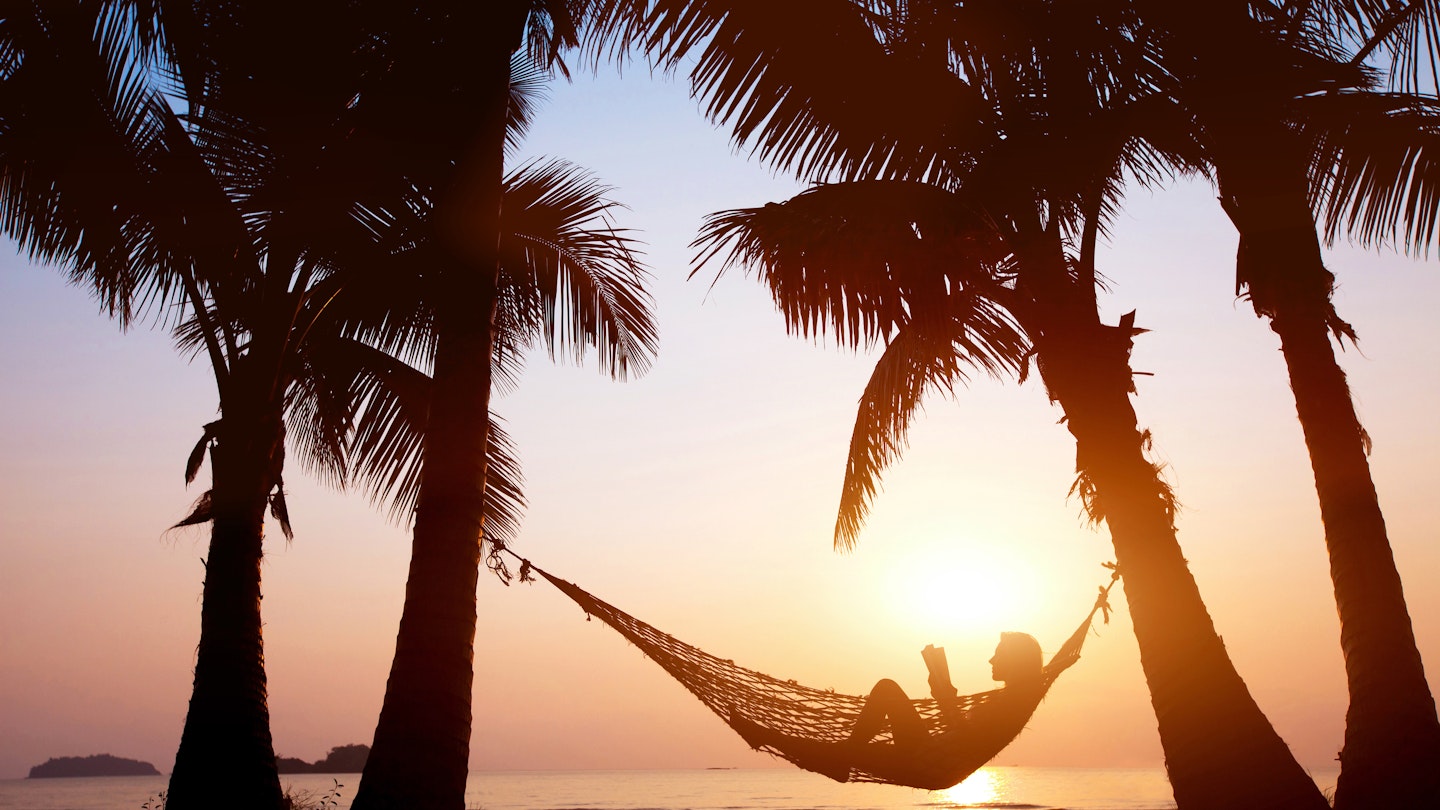
In Bali, the weather is warm and the hammocks are comfortable year-round © anyaberkut / Getty Images
With awe-inspiring scenery, dense layers of culture, plenty of sun, surf and sand, and balmy temperatures year-round, Bali calls out like a beacon to adventurers, sun-seekers and travelers who like to truly immerse themselves in the countries they visit. Whatever your travel tastes, you'll find rewarding things to see and do in Bali at any time of year.
The dry season, from April to September, is the most enjoyable time of the year for outdoor activities, including basking on beaches, hiking, surfing, sailing, diving and canyoning. Visit during the wet season (November to March), and you'll experience frequent downpours, but there's good surf on the east coast, and you can still enjoy the outdoors, especially in drier areas in the east and north of the island. Temperatures in Bali don’t vary much from season to season, hovering between 28°C and 32°C (82°F to 90°F) year-round, though it's often cooler in mountain areas. Whatever you're looking for in Bali, here are the best times to come.
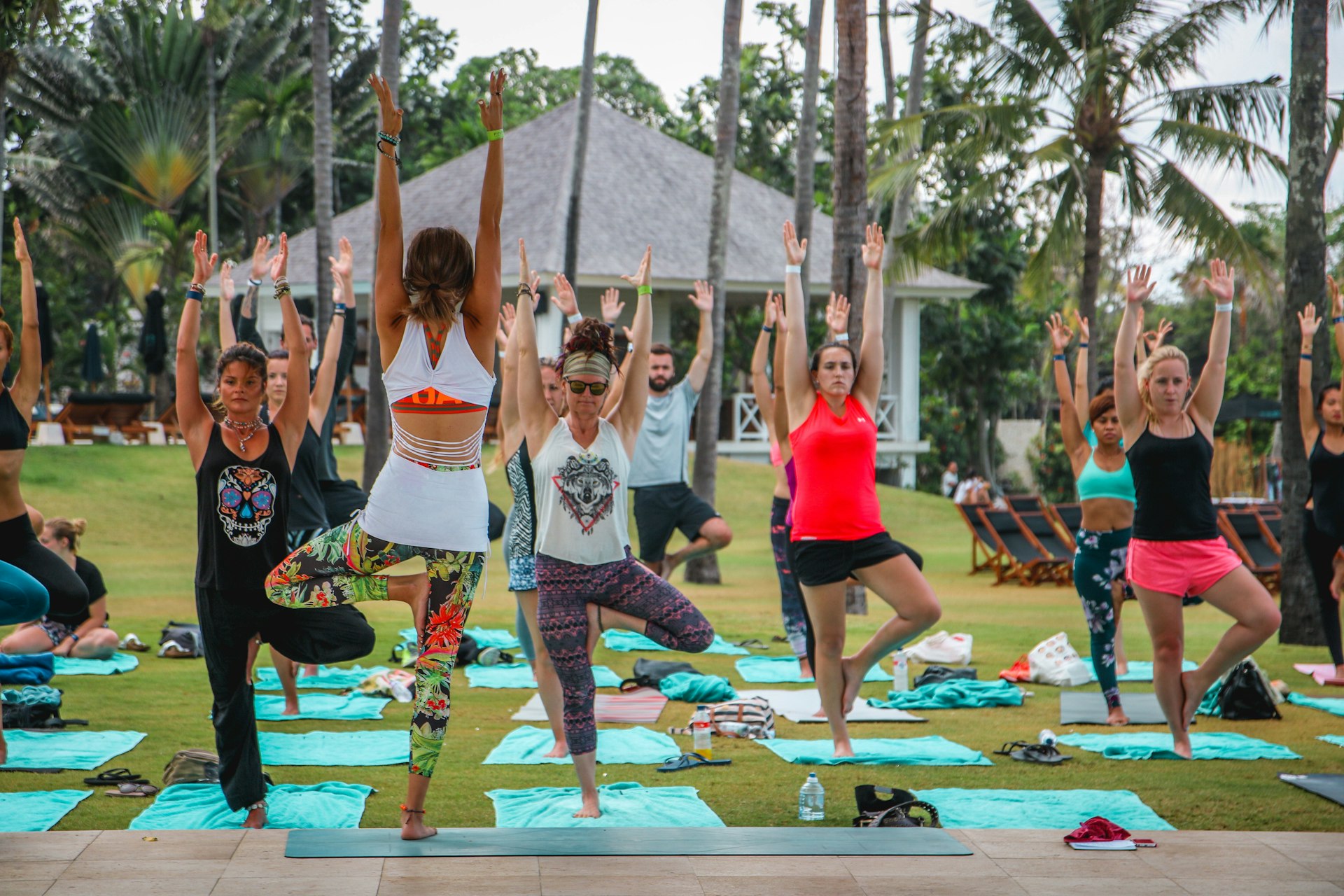
The high season (July–August and December) is the best time for festivals and partying
The high season in Bali coincides with the traditional summer vacation season in Europe, America, and Australia in July and August. It's the height of the dry season and the peak time for surfing on the west coast at the breaks around Canggu and Seminyak . Bali's original beach hub, Kuta , can be mobbed at this time of year, as many travelers come here specifically for the party season.
Most parts of Bali are inundated with visitors in summer, as tourists come to sample the island’s many delights and enjoy some of its most colorful festivals. Indonesia celebrates its independence from colonial powers on August 17 with plenty of pomp and fanfare. Expect entertaining parades and street parties in the bigger towns.
The period around Christmas and New Year also sees a large influx of travelers seeking a reprieve from cold northern winters. Many hotels, restaurants and other venues organize special dinners and entertainment to mark the festive season. New Year’s Eve is particularly memorable, with spectacular fireworks at midnight to help you rock in the new year in style. Key events to look out for are the Pemuteran Bay Festival, Penglipuran Village Festival and, of course, New Year’s Eve celebrations.
High season means high prices and pressing hordes in tightly-packed tourist areas; for a quieter experience, seek out more remote spots such as Nusa Penida and Pemuteran .

The shoulder season (April–June and September–October) is best for adventurous travelers
The shoulder season in Bali falls at either end of the dry season, when the weather is either improving after the rains or getting slowly wetter after the dry months. Things are quieter without the summertime crowds, and the weather is normally still dry enough for outdoor activities. However, the two-week Easter spring break can get very busy in tourist areas such as Kuta and Legian .
May marks the surfing season in full swing on the west and south coasts, and rafting, trekking and spelunking beckon adventure sports fans.
As rain showers in October are more frequent than in the dry summer months, plan to spend some time indoors visiting temples, museums and cultural institutions in Ubud , Denpasar , and other centers for Balinese culture. Top international events in October include the Ubud Village Jazz Festival and the Ubud Writers and Readers Festival .

The low season (January–March and November) is best for budget travelers
Bali’s low season coincides with the rainiest months of the year, and this can be an unpredictable time for outdoor activities. The crowds have decamped back home, and the island is returning to a more relaxed vibe, but there's still decent surf on the east coast at such legendary locations as Padang Padang, and the weather is still warm. Accommodation prices fall considerably, which is great news for budget travelers.
At the end of January or the start of February, Chinese New Year celebrations feature typical Balinese elements such as traditional percussion bands and dancers dressed as the mythological lion-like creature Barong.
The festival of Nyepi, the Balinese New Year, moves with the lunar calendar but frequently falls in March. This is a culturally fascinating time to visit Bali, but after the colorful parades of ogoh-ogoh puppets the night before the festival, the Day of Silence itself can be a tricky time for visitors as everything closes, transport ceases, and nobody is allowed out on the streets.
Understanding the Balinese calendar
Note that religious festivals such as Galungan and Kuningan are scheduled according to the Balinese 210-day pawukon calendar. This means they happen roughly every seven months, according to the Western calendar. Dates for village festivals are not always set in stone either, and the timing of the Nyepi festival is dictated by the lunar saka calendar, meaning the date changes every year. If you’re planning a trip around a festival or event, check the precise dates before you book your flights.
This article was first published Dec 3, 2021 and updated Oct 30, 2023.
Explore related stories
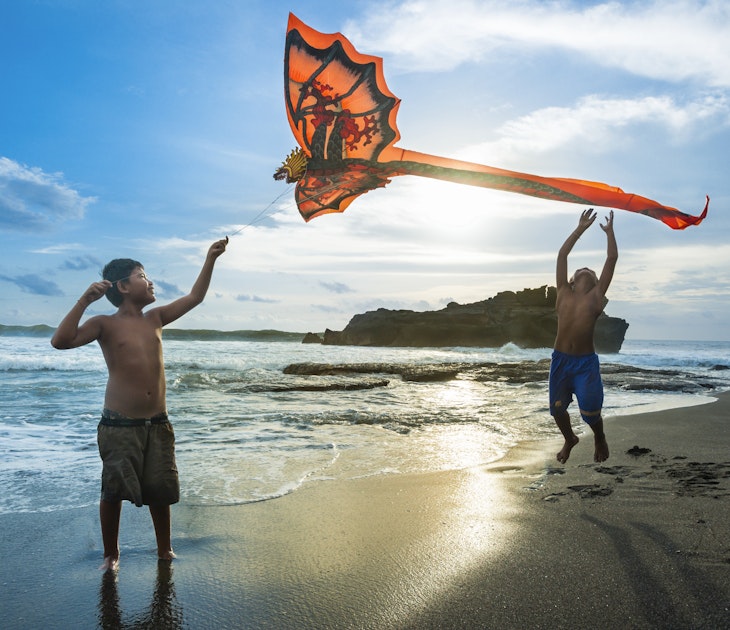
Festivals & Events
Nov 28, 2023 • 5 min read
Whether you’re dreaming of hitting the beach in Bali or searching for orangutans in the jungles of Borneo, these are the best times to visit Indonesia.
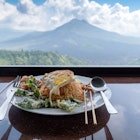
Apr 29, 2024 • 6 min read
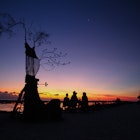
Apr 22, 2024 • 6 min read
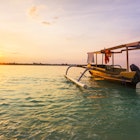
Apr 21, 2024 • 6 min read
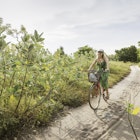
Apr 20, 2024 • 5 min read
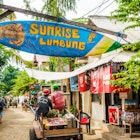
Apr 18, 2024 • 5 min read

Mar 20, 2024 • 8 min read

Mar 8, 2024 • 10 min read
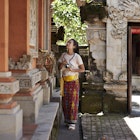
Jan 18, 2024 • 8 min read

COMMENTS
May to October is the best time to experience Bolivia's outdoors. Bolivia's dry season runs from May to October, mostly falling during the southern hemisphere winter. This is the perfect time for hiking and other outdoor pursuits, especially in the Andean zone, though the highlands will be cold and overnight temperatures can drop below -15 ...
This is the perfect month to visit the Bolivian Amason. October marks the start of the rainy season. November sees wet evenings and foggy mornings. It is one of the rainiest months of the year, and also one of the warmest months. December has the highest levels of rainfall, and most of the country is hot and humid.
Best time to visit Bolivia. The overall best months to visit Bolivia are between July and October, which are within the dry season. Whilst temperatures can be somewhat chilly in the Andes (bring extra layers), the weather is great everywhere else, as well as being a perfect time to explore the Amazon Jungle.
The best time to visit Bolivia is during the dry season, from May to October, especially if you're interested in hiking, trekking, climbing, or any other outdoor activities. During the dry season, days are generally shorter, but when the sun is out, it's shining brightly and trails are easy to navigate. Bolivia weather varies by region.
In most opinions, May-Oct is the best time to visit Bolivia, as the dry weather brings sapphire skies and less travel disruption. This is the Bolivian winter, though, so the highlands will be cold - and well below freezing in the desert at night, particularly in June-July. The humid jungle, however, benefits from the cooler temperatures.
Visiting Bolivia in April - October. Bolivia's dry season is the most popular time of year to travel, despite the cold weather. Road travel is easier and the bright sunny conditions mean you can photograph the salt flats and Lake Titicaca against dazzling blue skies. June to September is the peak time for visitors, so you should plan well in advance to get the best choice of accommodation.
May is one of the best months to visit Bolivia, as the weather is mild and dry, and the country's landscapes are green and lush. It's a popular month for trekking and hiking, with many trails reopening after the rainy season. May is also a good time to visit Bolivia's rural communities, where you can experience traditional farming practices and ...
April is one of the best months to visit Bolivia, as the rainy season has ended, and the weather is warm and sunny. You can enjoy outdoor activities like hiking, cycling, and exploring the country's natural wonders like Lake Titicaca, the Yungas, and the Salar de Uyuni. This is also a great time to experience Bolivia's traditional Easter ...
Many visitors don't need a tourist visa to travel to Bolivia - including citizens of the UK, most EU and EEA countries, Canada, Australia, New Zealand, Japan and most nations in South America. But some other travelers - including US citizens - can't visit without a visa. ... The best time to visit Bolivia. Oct 28, 2023 • 4 min read ...
Climate and Seasons in Bolivia. Winter(invierno) runs between May and October: this is the dry season, and in many ways the best time to visit, though it's also the high season for tourism, so some prices will be higher and attractions busier. In the highlandsit's noticeably colder at night, particularly in June and July.
Activities & Festivals: Delve into Bolivia's colonial history in Sucre, enjoy the culinary delights of Cochabamba, and participate in traditional festivals like the 'Fiesta de la Virgen de Guadalupe' in Sucre. Tropics (Amazon basin, Santa Cruz) Best Months: May to September. This is the dry season for the Amazon basin, reducing the risks ...
With the rains gone, hiking and trekking trails open up making May one of the best times to visit Bolivia. Temperatures in La Paz and Lake Titicaca stay at a pleasant 60°F while daytime highs in Santa Cruz drop below 80°F. June is considered to be one of the best months to travel to Bolivia.
Bolivia's cities have tons to offer travelers. Santa Cruz, located in southern central Bolivia, is considered the country's commercial center and has tons of great museums, galleries, and cultural institutions to visit — as well as a vibrant nightlife scene. In La Paz, you can browse the colorful markets and learn more about the ...
The dry season is high season in Bolivia as crystal clear skies and a distinct lack of rain allow tourists to hike and climb to their heart's content. The best months for outdoor adventures are May through August when the chance of rain is minuscule. The downside is that it can get bitterly cold in the highlands at this time of year.
An overview of this Bolivia itinerary for ten days: Days One to Three: La Paz. Day Four: Bike the Death Road to Coroico. Day Five: Coroico and overnight to Uyuni. Days Six to Nine: Uyuni. Days Nine to Ten: La Paz. A ten-day itinerary of Bolivia is enough to explore the heady heights of de-facto capital, La Paz, take your life into your own ...
Covid-Related Travel Update Jan 2024: Bolivia is now open to international travelers. As far as I have researched, Bolivia doesn't seem to have any travel restrictions. Please do consult your local Bolivian embassy for precise information at the time of travel. When I think of Bolivia, I remember stout, brick-red mountains.
For La Paz in western Bolivia, the months of May to August are the best time to travel. Day temperatures of 55 °F to 57 °F and low rainfall make the region interesting for trekking tours. Centrally located Trinidad is the best time to travel from April to October. Temperatures of 84 °F to 90 °F are on the agenda here.
The Bolivian salt flats are to many, the jewel in Bolivia's crown. At over 10,000 square kilometres, the Bolivian salt flat is the biggest in the world and is sure to leave you spellbound by the stunning scenery. The salt flats look very different depending on when you visit. In the drier months, the flats are just that: dry.
If you want the best climate, visit between September and November. If you want to see the wet salt flats, visit between December and April. Other than that, any time is good to visit the Salar de Uyuni. Each season offers a unique perspective and features. The Uyuni salt flat in the dry season (April - November)
Those who want to see the giant white flats will want to visit between May and October (the Dry Season). Rainfall is virtually nonexistent during these times, which makes access around the region easy. Temperatures are coldest this time of year, and keep in mind that they can get really cold between June and July (averages of 37°F, highs of 66 ...
Home Travel Americas South America Bolivia Best Time to Visit Uyuni Salt Flats: A Detailed Month-by-Month Guide. Imagine a vast expanse stretching over 10,000 square kilometers, shimmering under the sun as if heaven itself touched the Earth, creating a mirror of the sky.
Here is the complete one-month Bolivia backpacking itinerary: Day 1-3 - La Paz. Day 4-6 - Copacabana. Day 7 - Return to La Paz. Day 8-10 - Death Road/Coroico. Day 11 - Travel to Rurrenabaque. Day 12-13 - Amazon Pampas tour. Day 14 - Rurrenabaque. Day 15 - Travel to Cochabamba.
Discover amazing travel experiences with Lonely Planet's insider tips, inspirational traveler stories and expert guidance from around the world. Lonely Planet. Destinations. ... Plan your trip with our guide to the best places to visit. destination practicalities. A first-timer's guide to Phoenix, Arizona. Jun 10, 2024 • 7 min read ...
In the meantime, the easiest way to renew your passport is by mail. It's best to renew your passport several months before it expires. Some countries require that your passport is valid at least ...
If hiking is your passion, try the Camino de Costa Rica, a 174-mile trail that cuts across the country: starting in Barra del Pacuare on the Atlantic coast and eventually winding into the Dota ...
March to May and September to October are the best times for a bit of everything. Spring (especially April and May) and autumn (particularly September and October) are ideal for visiting Paris - crowds are thinner, but the weather is temperate and lovely. In the spring, blossoms give way to leaves greening the city's tree-lined boulevards and ...
The 50 Best Amazon Travel Deals Available for Prime Members This Month — Up to 50% Off. Score Samsonite luggage, comfy shoes, breathable clothing, and more.
CDC Yellow Book 2024. Author (s): Mark Gershman, Rhett Stoney (Yellow Fever) Holly Biggs, Kathrine Tan (Malaria) The following pages present country-specific information on yellow fever (YF) vaccine requirements and recommendations, and malaria transmission information and prevention recommendations. Country-specific maps are included to aid in ...
The low season (January-March and November) is best for budget travelers. Bali's low season coincides with the rainiest months of the year, and this can be an unpredictable time for outdoor activities. The crowds have decamped back home, and the island is returning to a more relaxed vibe, but there's still decent surf on the east coast at ...